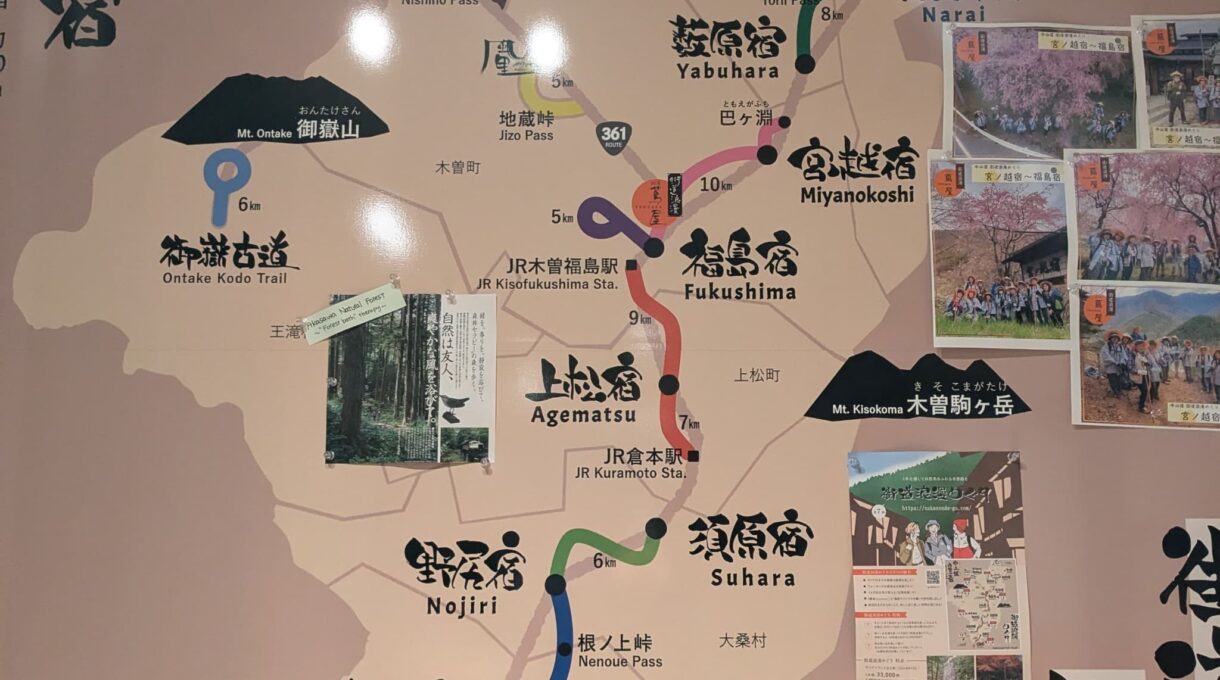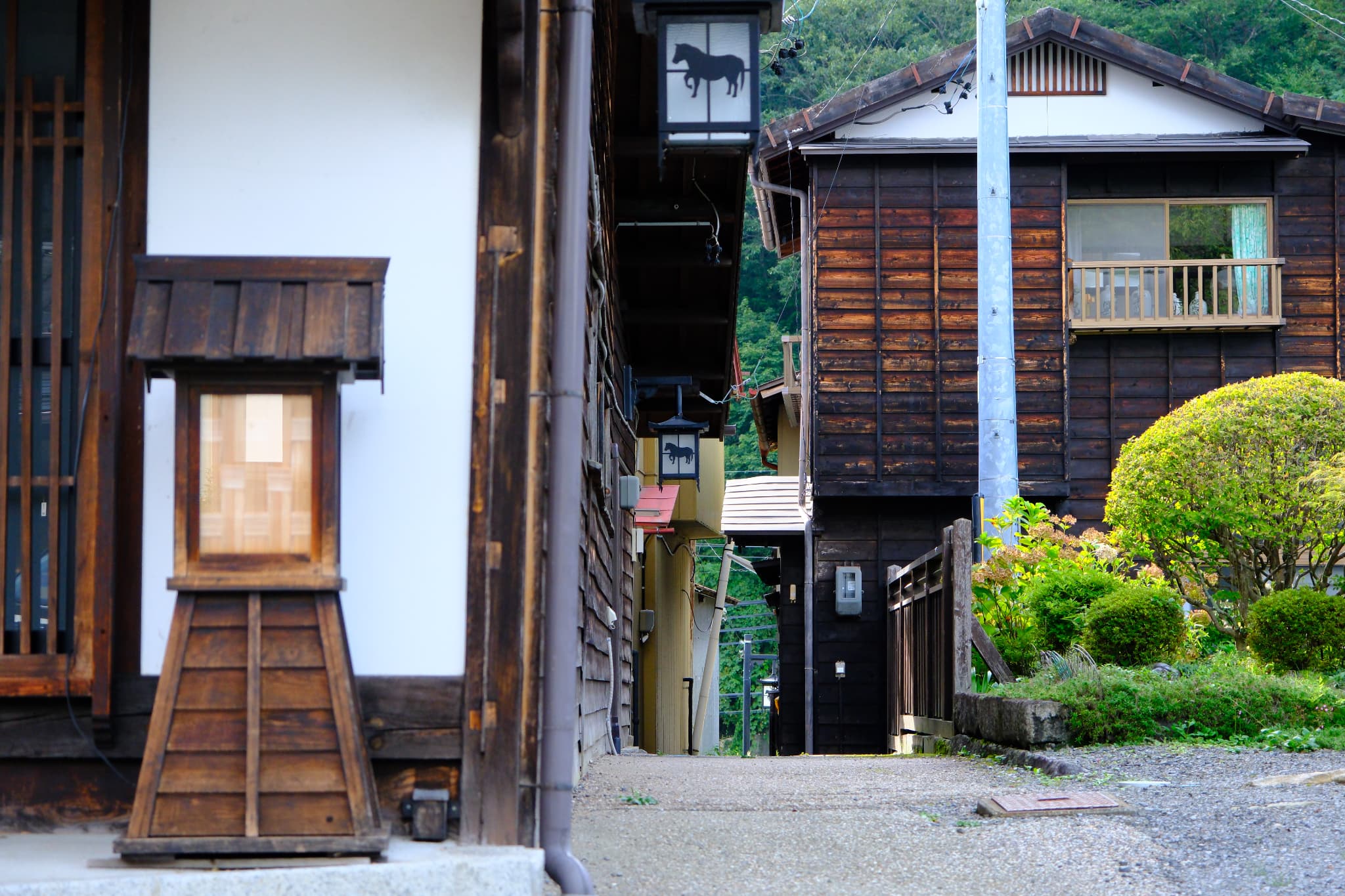Kisoji is located on the Nakasendo, one of the Five Highways. Sometimes, Nakasendo is also referred to as Kisoji, while at other times, Kisoji refers specifically to the section of the Nakasendo that passes through the 11 post towns between Magome-juku and Neikawa-juku.
In this article, we will refer to the road that passes through the 11 post towns between Magome-juku and Neikawa-juku as Kisoji. Among the 11 post towns on Kisoji, some still strongly retain the atmosphere of the past.
The three that have best preserved this atmosphere are Narai-juku, Tsumago-juku, and Magome-juku. Although most of the towns no longer retain that atmosphere, walking through them and imagining ‘there was once a post town here’ makes for an interesting experience!
The 11 Post Towns on Kisoji
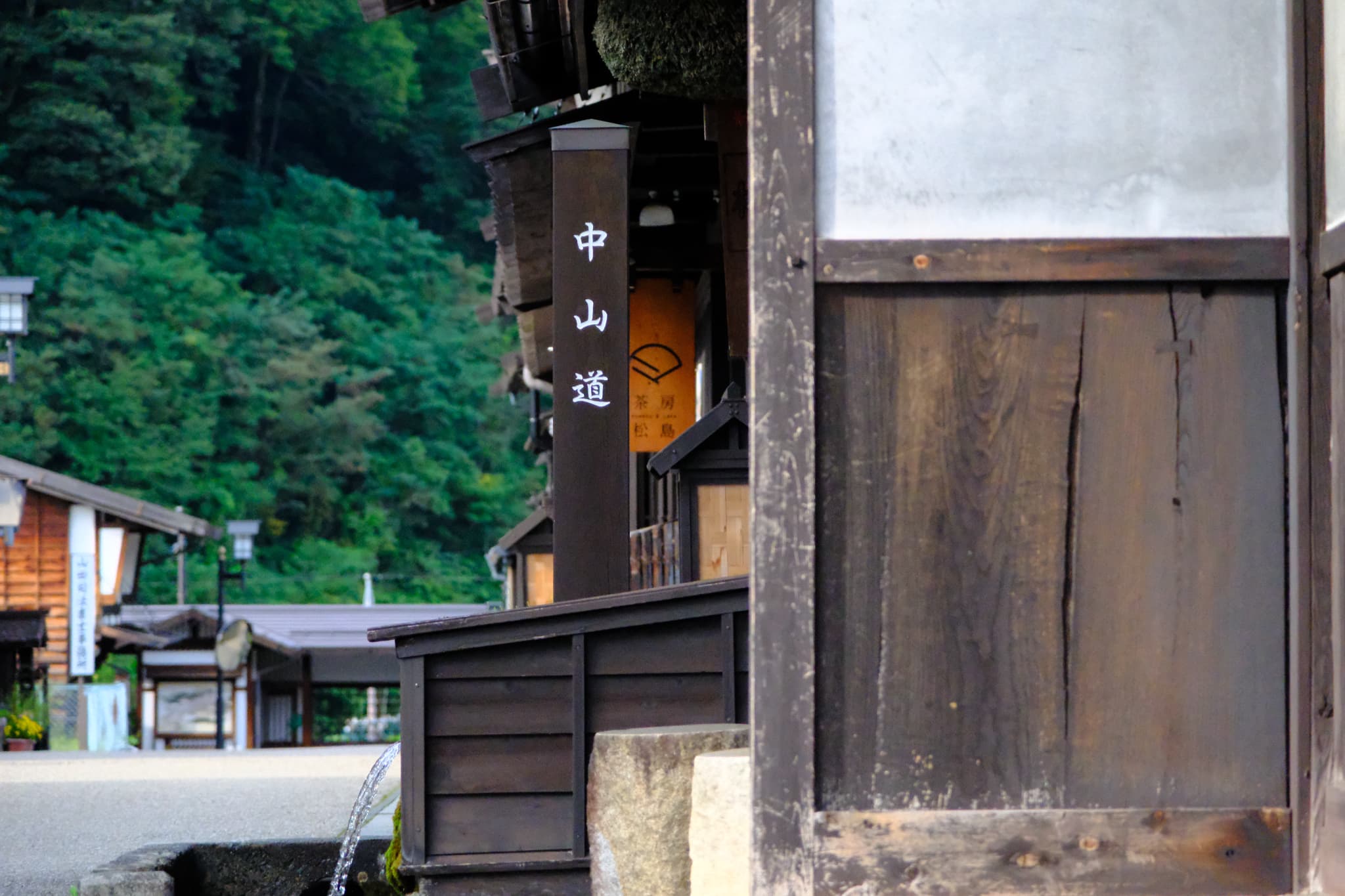
The Kisoji area spans from Nagano Prefecture to Gifu Prefecture. Many of the post towns can be reached by train, so I will introduce each of the 11 post towns.
The 11 post towns on Kisoji are located along the JR Chūō Main Line between Niekawa Station and Nakatsugawa Station (with 17 stations in between). From Nagano Station, where the Shinkansen stops, you can head towards Niekawa Station. I’ve summarized the route and travel times for your reference when planning your trip.
- From Tokyo Station to Nagano Station: Approximately 1 hour and 40 minutes by Shinkansen
- From Osaka Station to Nagano Station: Approximately 4 hours using a combination of Shinkansen and limited express train
- From Nagano Station to Niekawa Station: Approximately 1 hour and 30 minutes by limited express train
- From Niekawa Station to Nakatsugawa: Approximately 1 hour and 50 minutes by regular train
Niekawa-juku
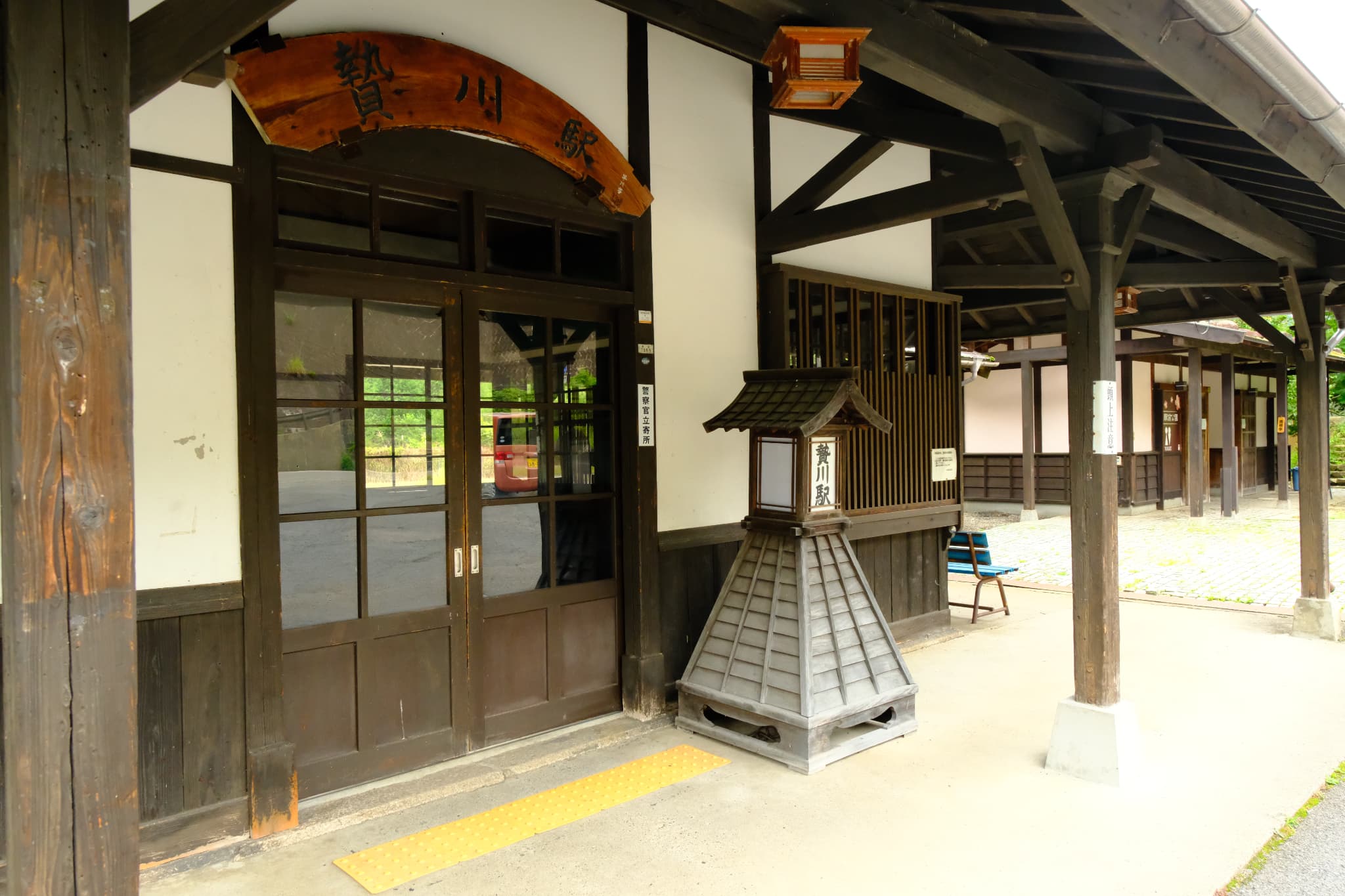
Niekawa-juku
- Nearest Station: JR Chūō Main Line, Niekawa Station
- Condition: Not much of the original post town remains
- Walking distance from the station: Approximately 600 meters, about an 8-minute walk
Niekawa-juku, located at the northern entrance of Kisoji, doesn’t retain much of its original atmosphere, but there is a restored checkpoint and the Fukazawa Family Residence, which still gives a sense of the past.
- Niekawa-juku Area (About an 8-minute walk from Niekawa Station – Google Maps)
https://tokimeguri.jp/guide/naksendo-niekawa/
Although much of the original atmosphere is gone, the post town used to be in this area. - Niekawa Checkpoint (About a 6-minute walk from Niekawa Station – Google Maps)
https://www.city.shiojiri.lg.jp/soshiki/75/3813.html
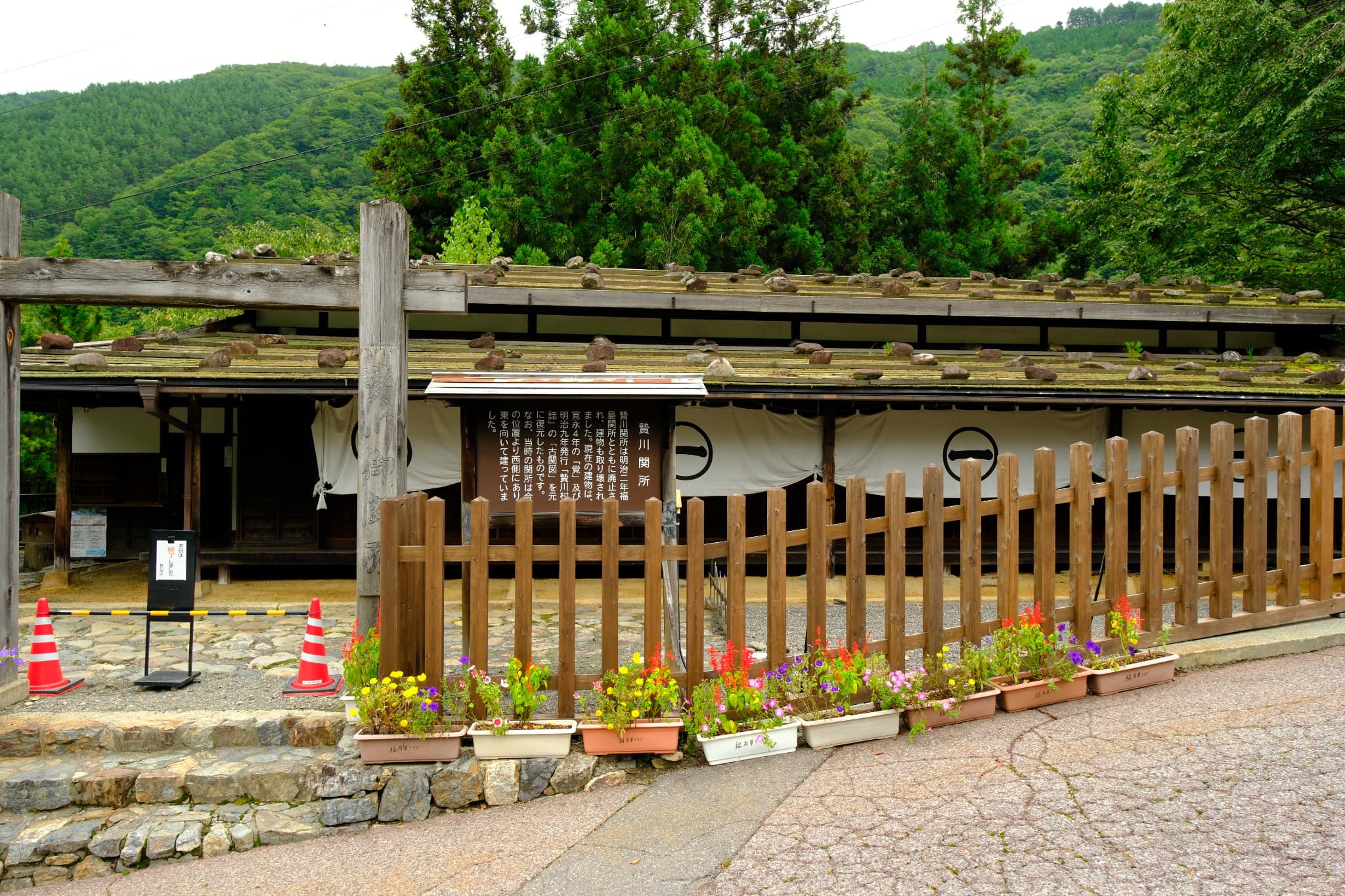
Fukazawa Family Residence (About an 11-minute walk from Niekawa Station – Google Maps)
https://bunka.nii.ac.jp/heritages/detail/177152
Narai-juku
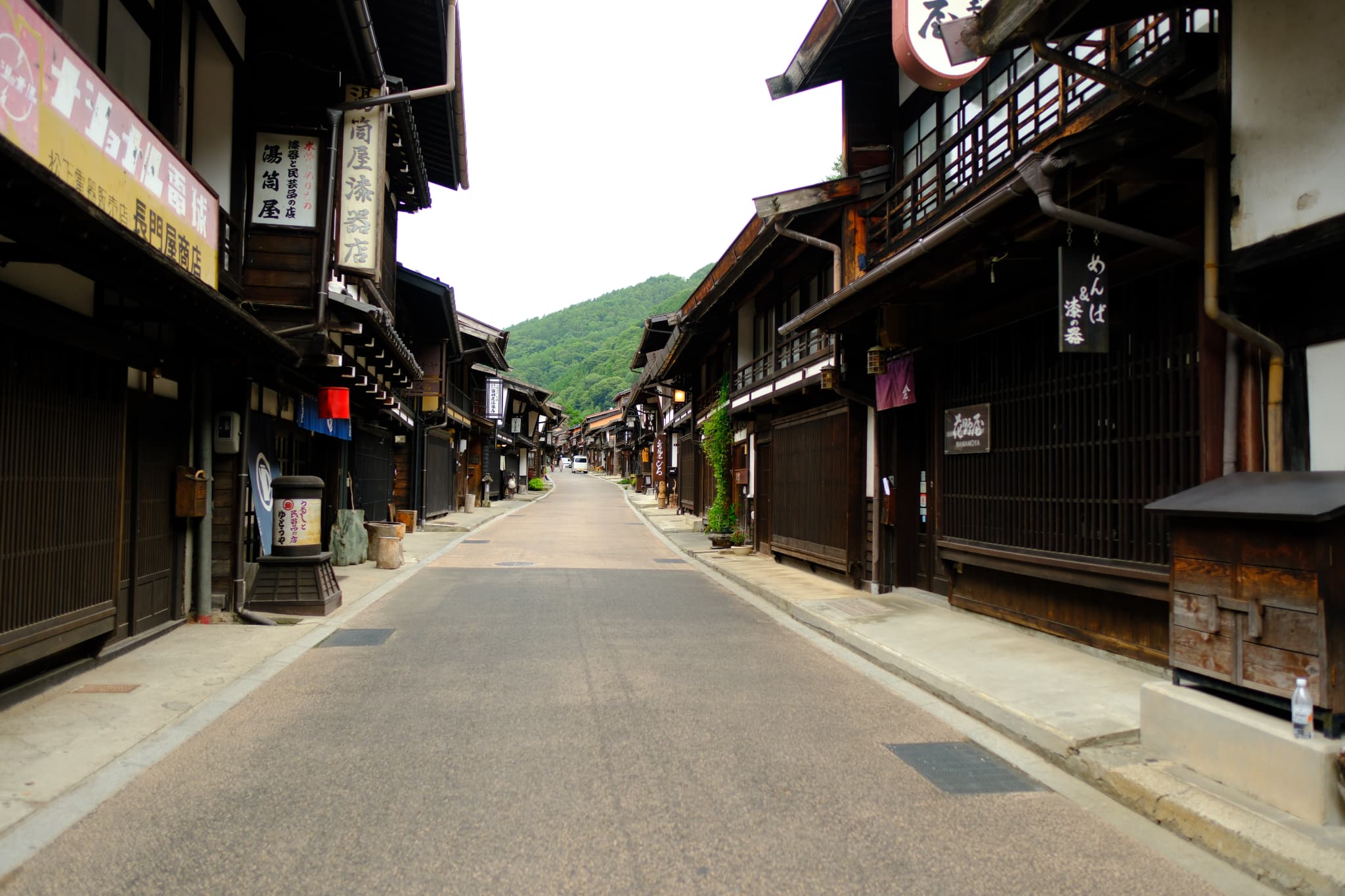
Narai-juku
- Nearest Station: JR Chūō Main Line, Narai Station
Note: It is also possible to travel to Narai-juku from Shinjuku, Tokyo, by express bus. However, since the site is only in Japanese, if you find booking difficult, it’s better to take the train. However, the bus is attractive with a one-way fare of 4,800 yen.
https://ontakekotsu.com/highway - Condition: The post town retains a lot of its historical atmosphere.
- Walking distance from the station: As soon as you exit the station and look to the left (there is only one ticket gate), you will immediately see the townscape of Narai-juku, so there’s no need to worry about getting lost.
Narai-juku preserves the historical atmosphere vividly. The retro townscape stretches for about 1 kilometer, creating a charming space. There are souvenir shops and sake breweries, so even a 1-kilometer distance might take about an hour to explore. Stores are not open very early in the morning, so it’s best to go around 10 a.m. (some stores open around 9 a.m.).
If you arrive by car, parking is available.
While there is a 500 yen fee for parking in front of the station (9 a.m. to 5 p.m.), there is a free large parking lot on the opposite side of the station, across the tracks. It is about a 3 to 5-minute walk from the station, so the free parking lot is recommended.
- Narai-juku Area (About a 2-minute walk from Narai Station – Google Maps)
https://www.naraijuku.com/ - Narai-juku Free Parking Lot (About a 4-minute walk from Narai Station – Google Maps)
https://www.naraijuku.com/access/ - Suginomori Brewery (About a 6-minute walk from Narai Station – Google Maps)
https://www.narai.jp/en
This is a sake brewery. You can purchase sake and original goods at the nearby Sagyo Bar. While Sagyo Bar operates irregularly, it is listed as open every Friday and Saturday from 1 p.m. to 5 p.m. on the website, so if your travel schedule aligns, definitely check it out!
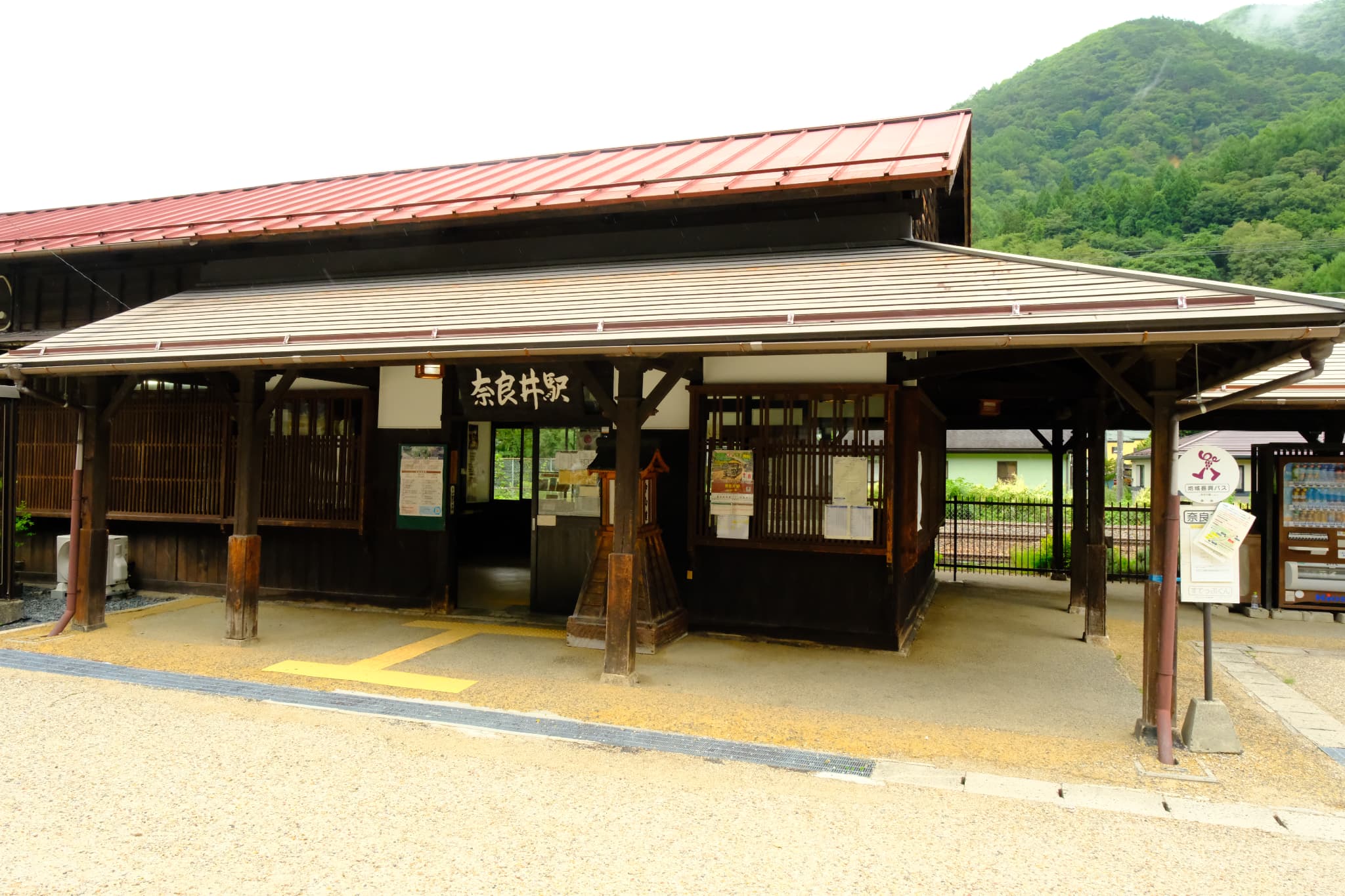
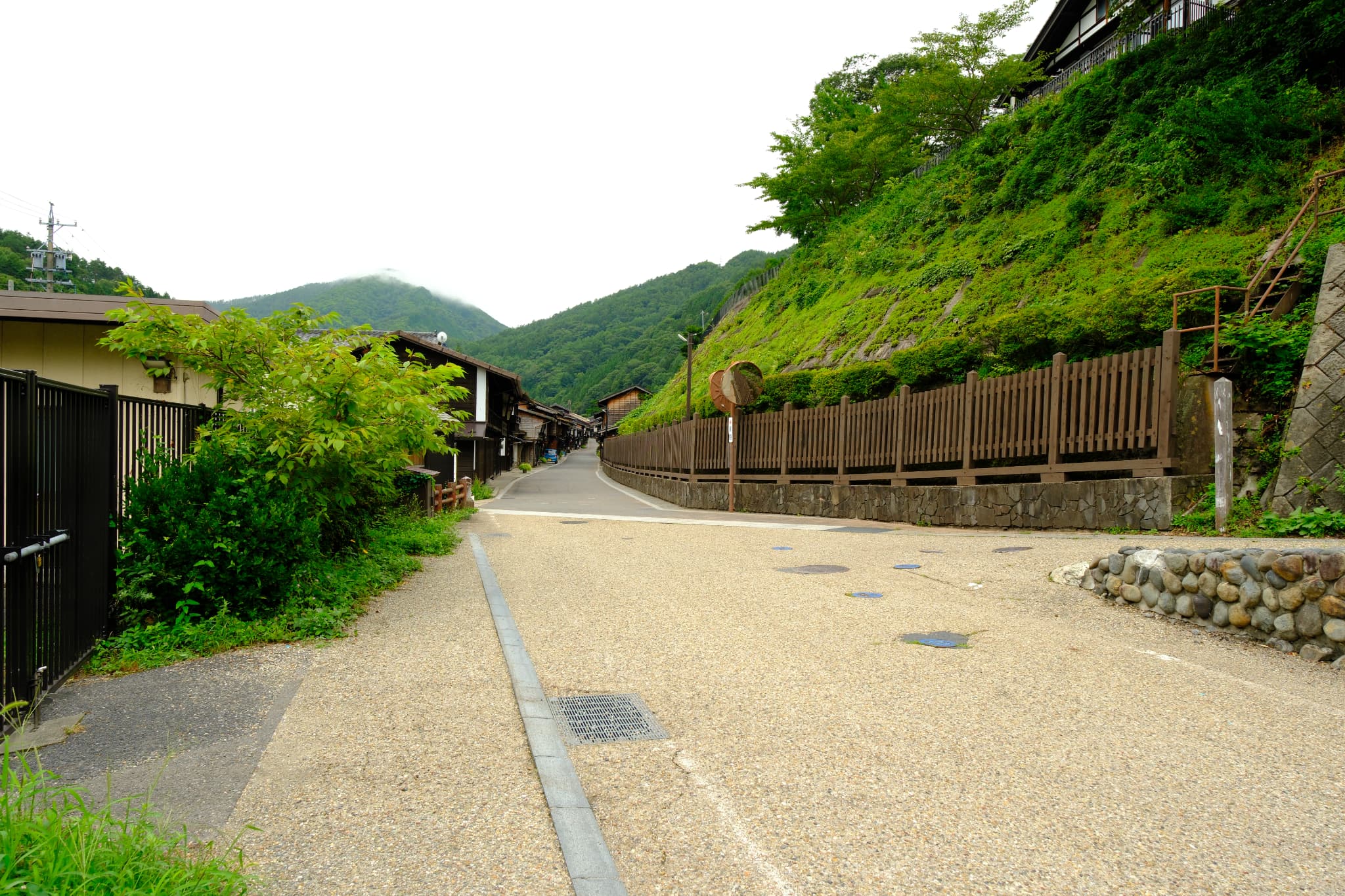
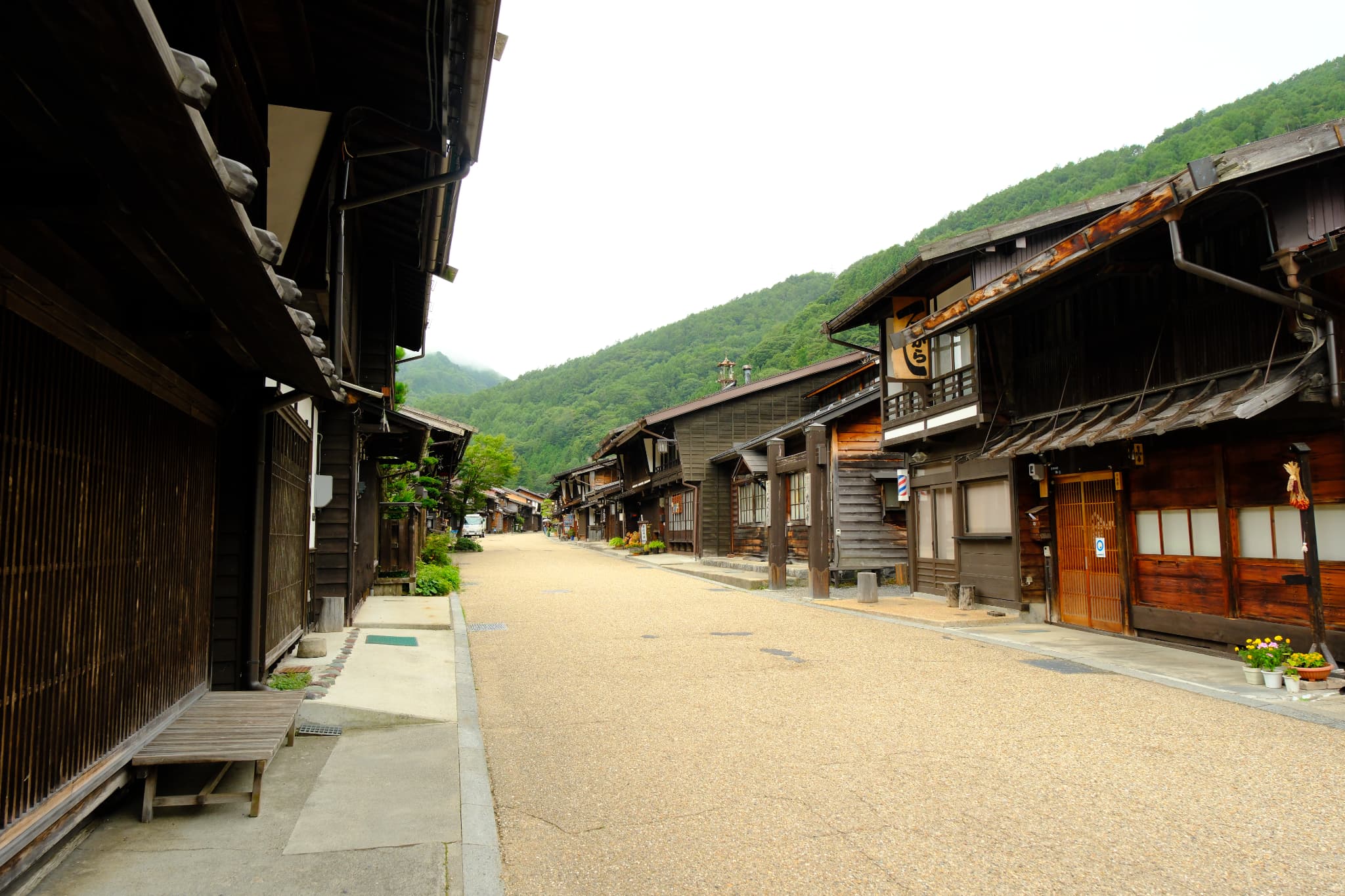

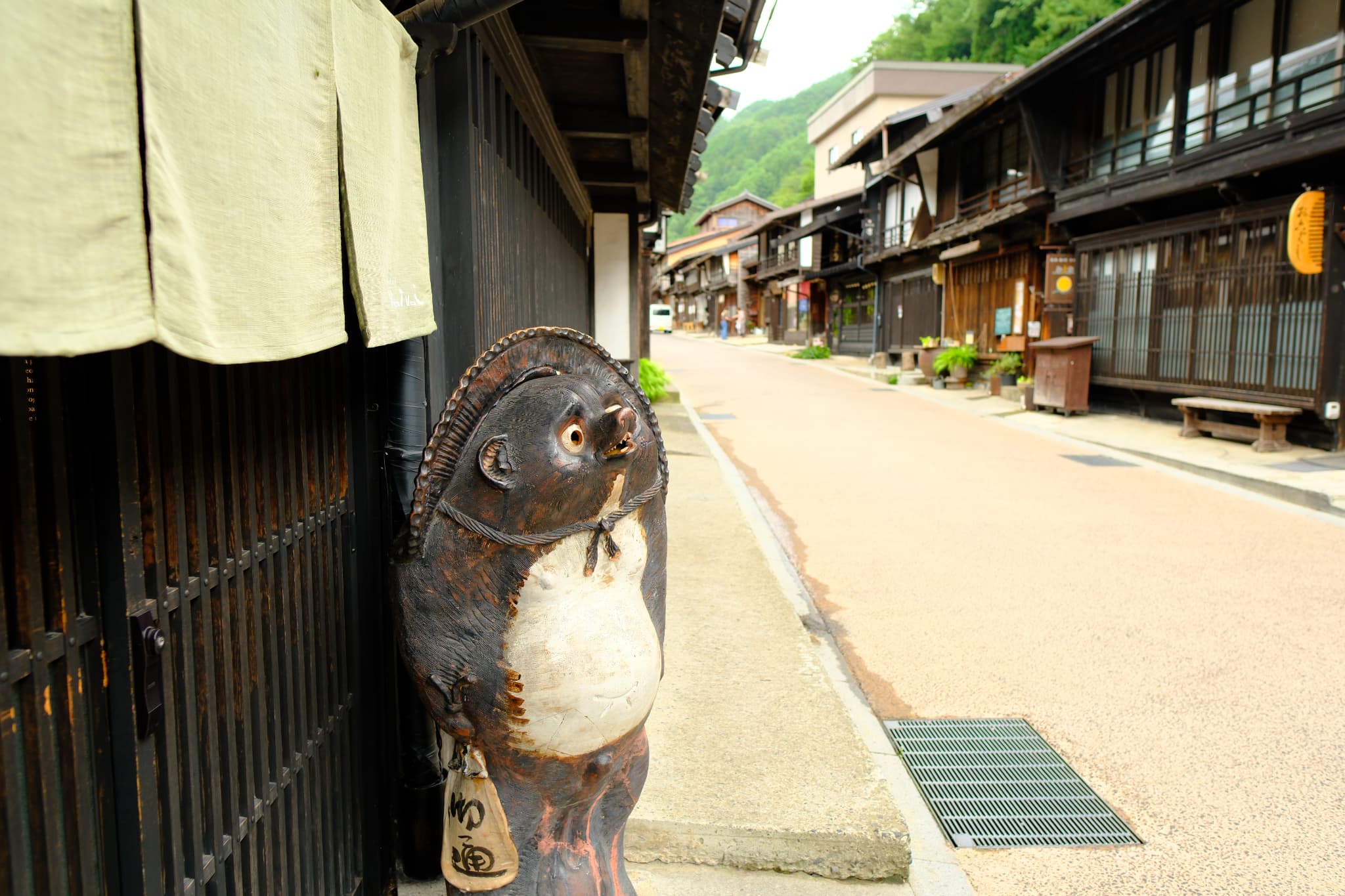
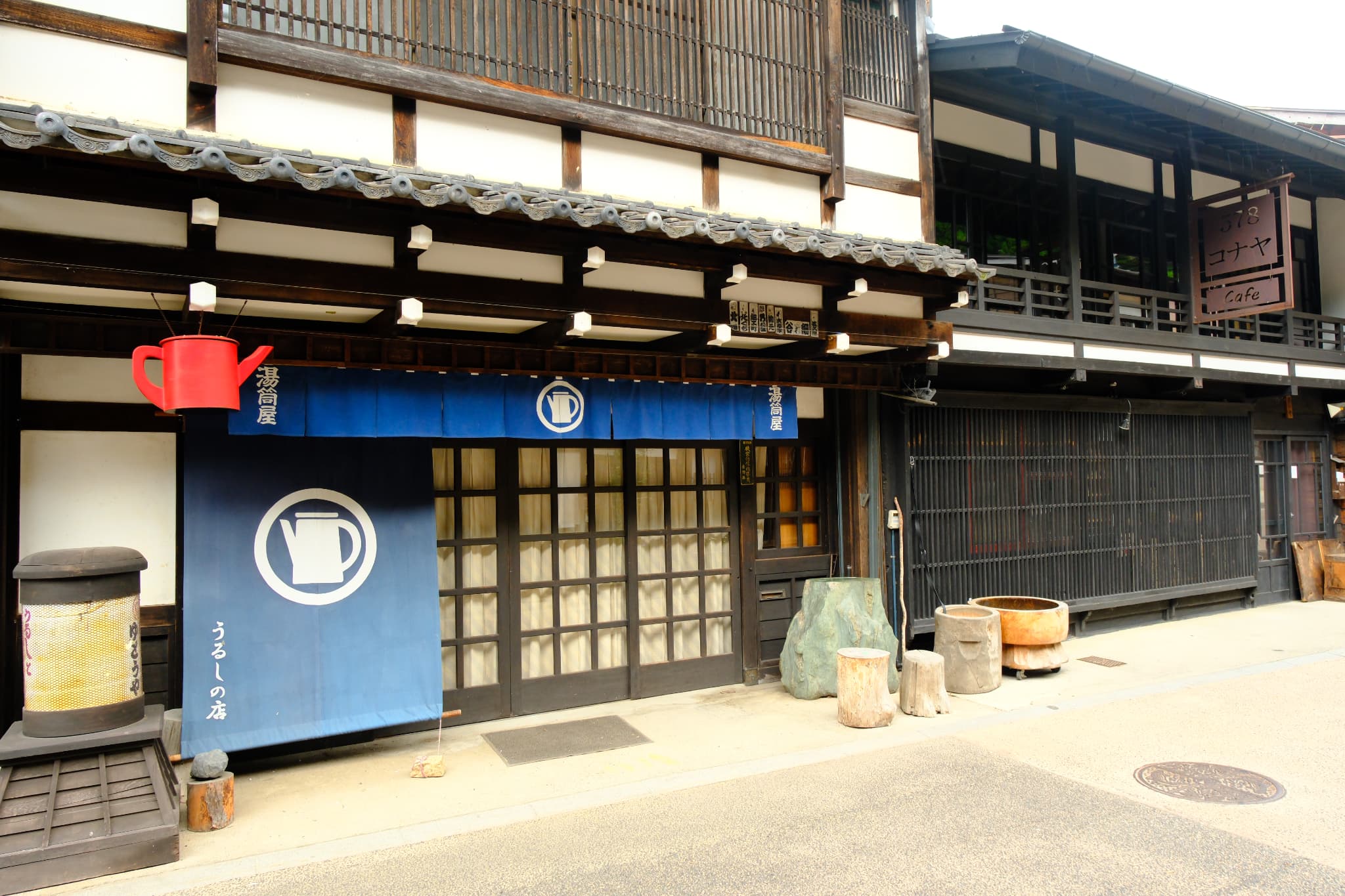
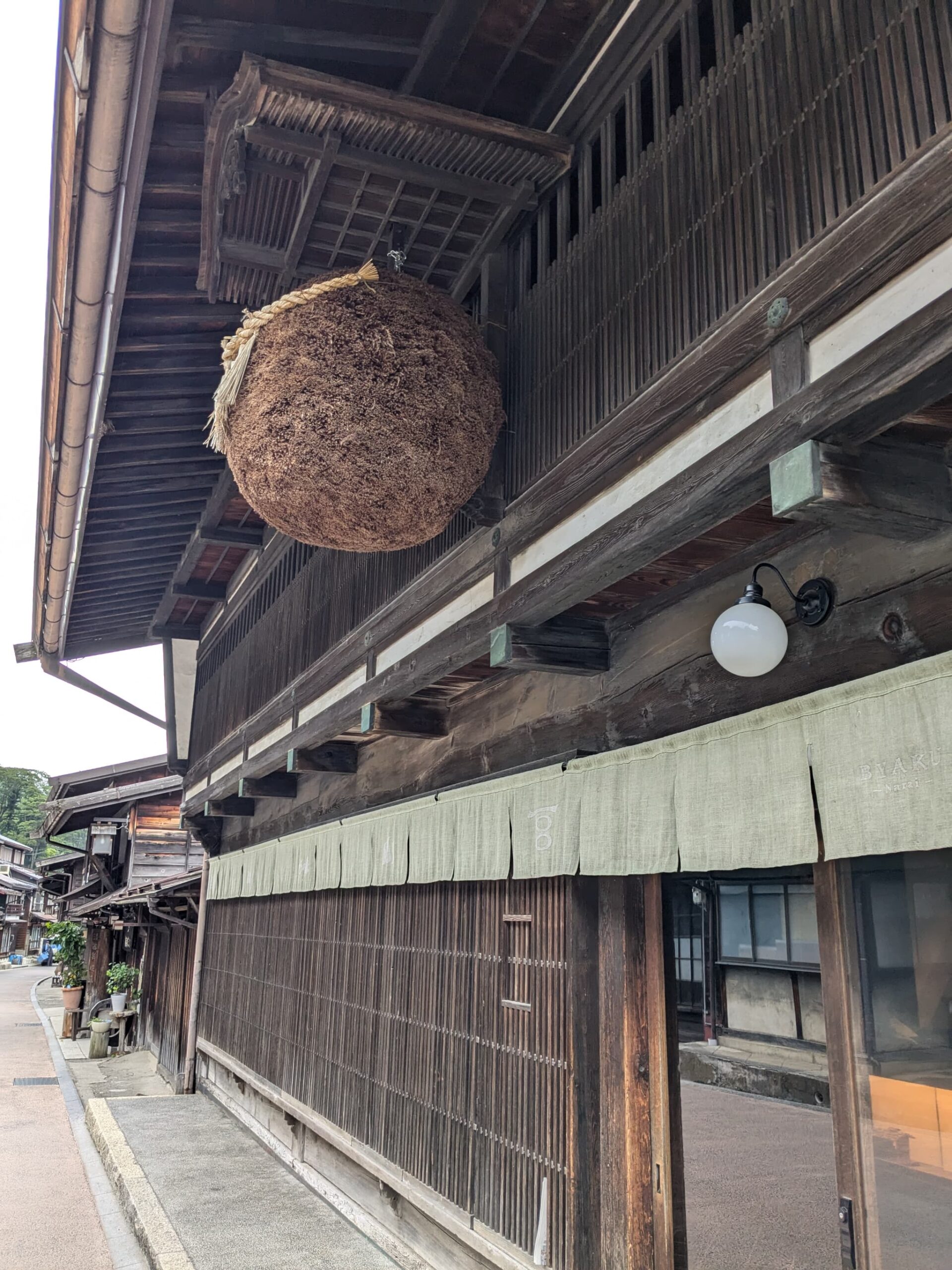
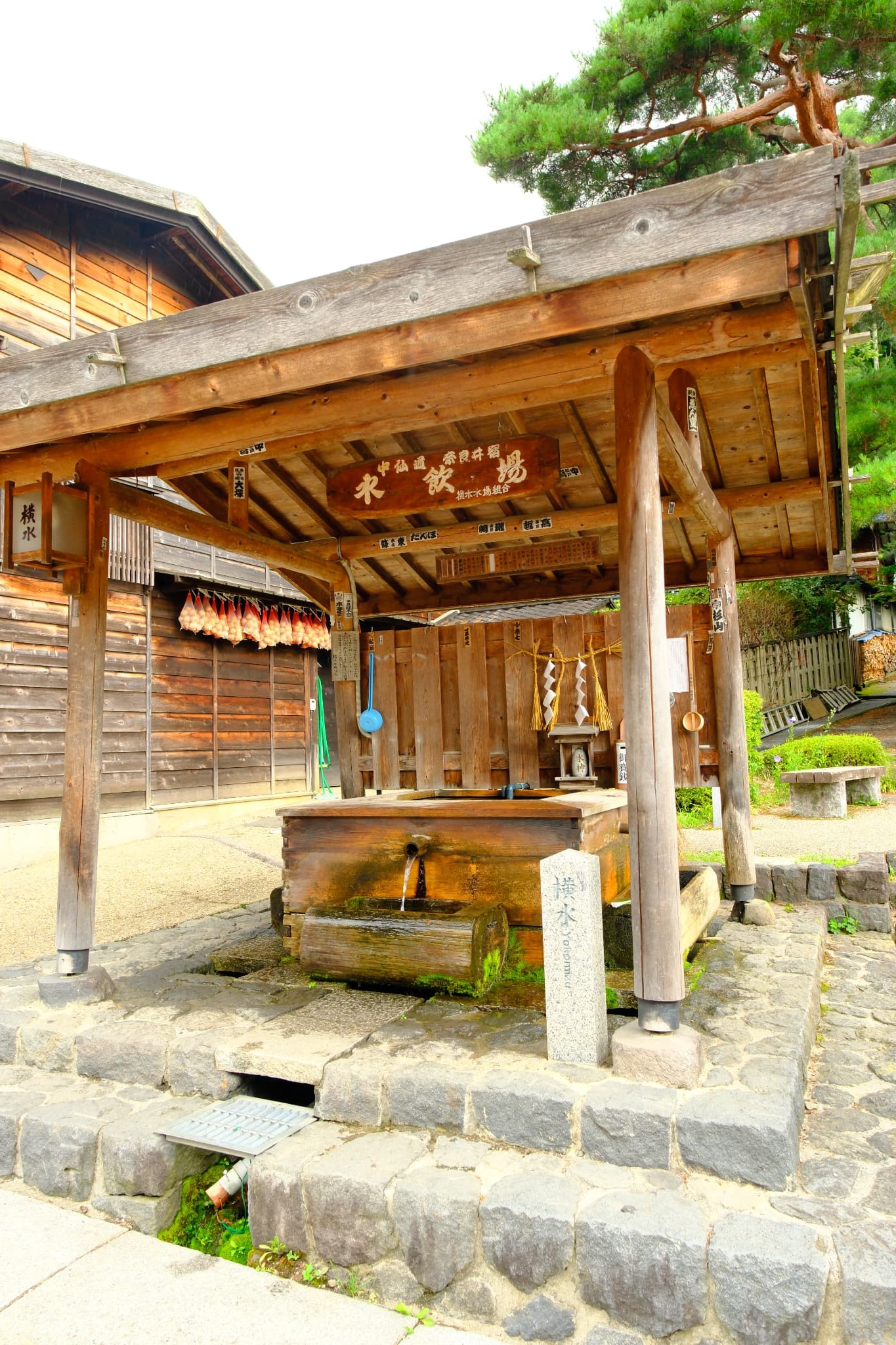
Yabuhara-juku

- Nearest Station: JR Chūō Main Line, Yabuhara Station
- Condition: Few places retain the atmosphere of the old post town, but there is a certain nostalgic feeling in parts.
- Walking distance from the station: About 15 to 20 minutes
Yabuhara-juku is approximately 1.2 kilometers from the station, so it’s a bit of a walk, but not too far. Walking through Yabuhara-juku, you’ll notice a mix of new and old buildings creating an interesting contrast. It might be good to visit Yabuhara-juku after seeing Narai-juku, as seeing the preserved post town at Narai-juku can help you imagine what Yabuhara-juku used to be like. You might think, “There used to be a town like Narai-juku here.”
Nearby, the Kiso River flows, and the water and scenery are beautiful. You might feel like you’re getting a great deal just by enjoying the view for free.
- Yabuhara-juku Area (About a 15 to 20-minute walk from Yabuhara Station – Google Maps)
https://www.vill.kiso.nagano.jp/kanko/odekake/odemap/yabuharaarea.html - Mizu no Shihatsu Eki Park (About a 5-minute walk from Yabuhara Station – Google Maps)
https://db.go-nagano.net/topics_detail6/id=5697
In spring, cherry blossoms bloom. Feel the Kiso River and its natural surroundings. It’s a place where simply sitting and gazing is more than enough.
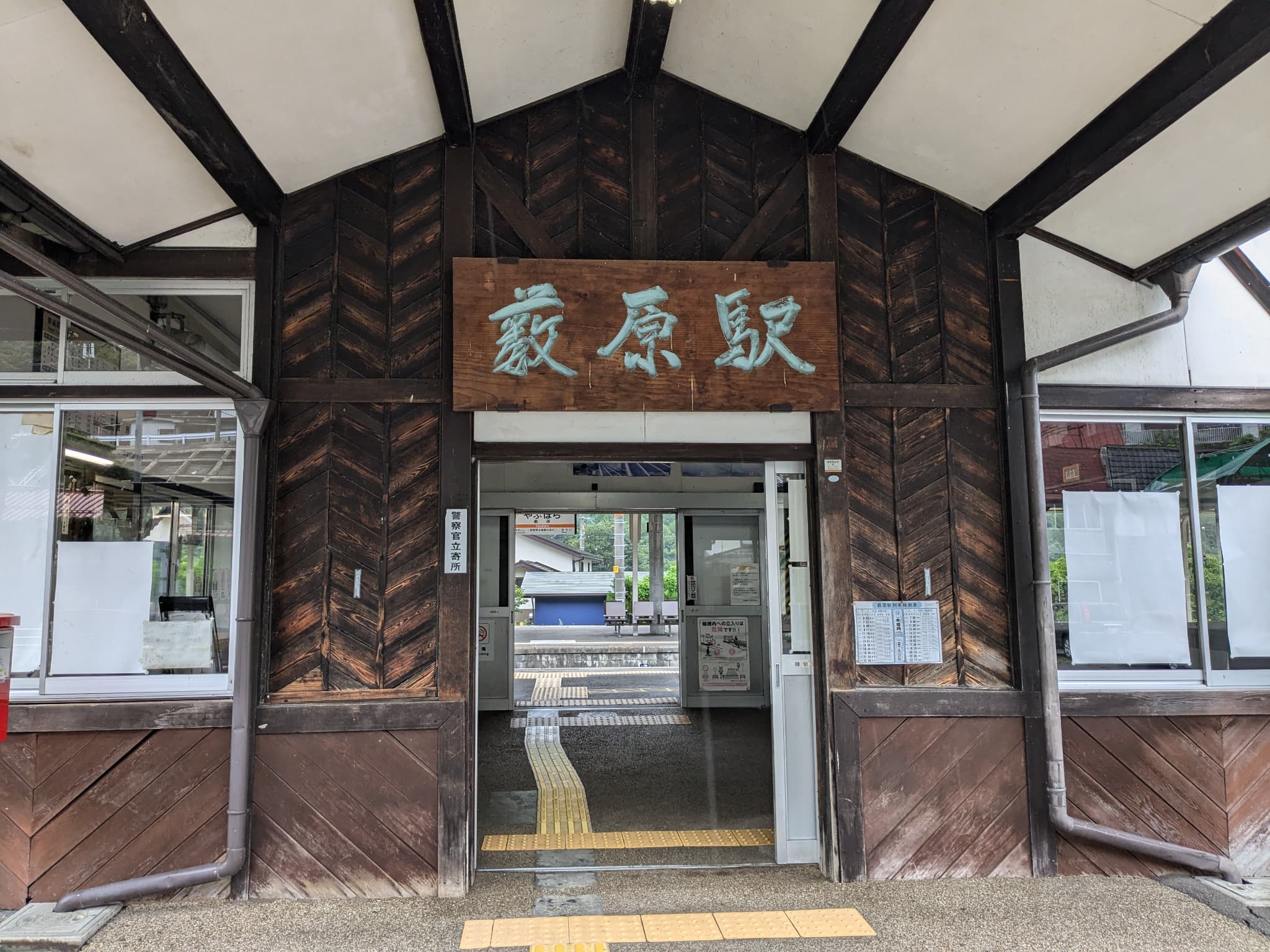

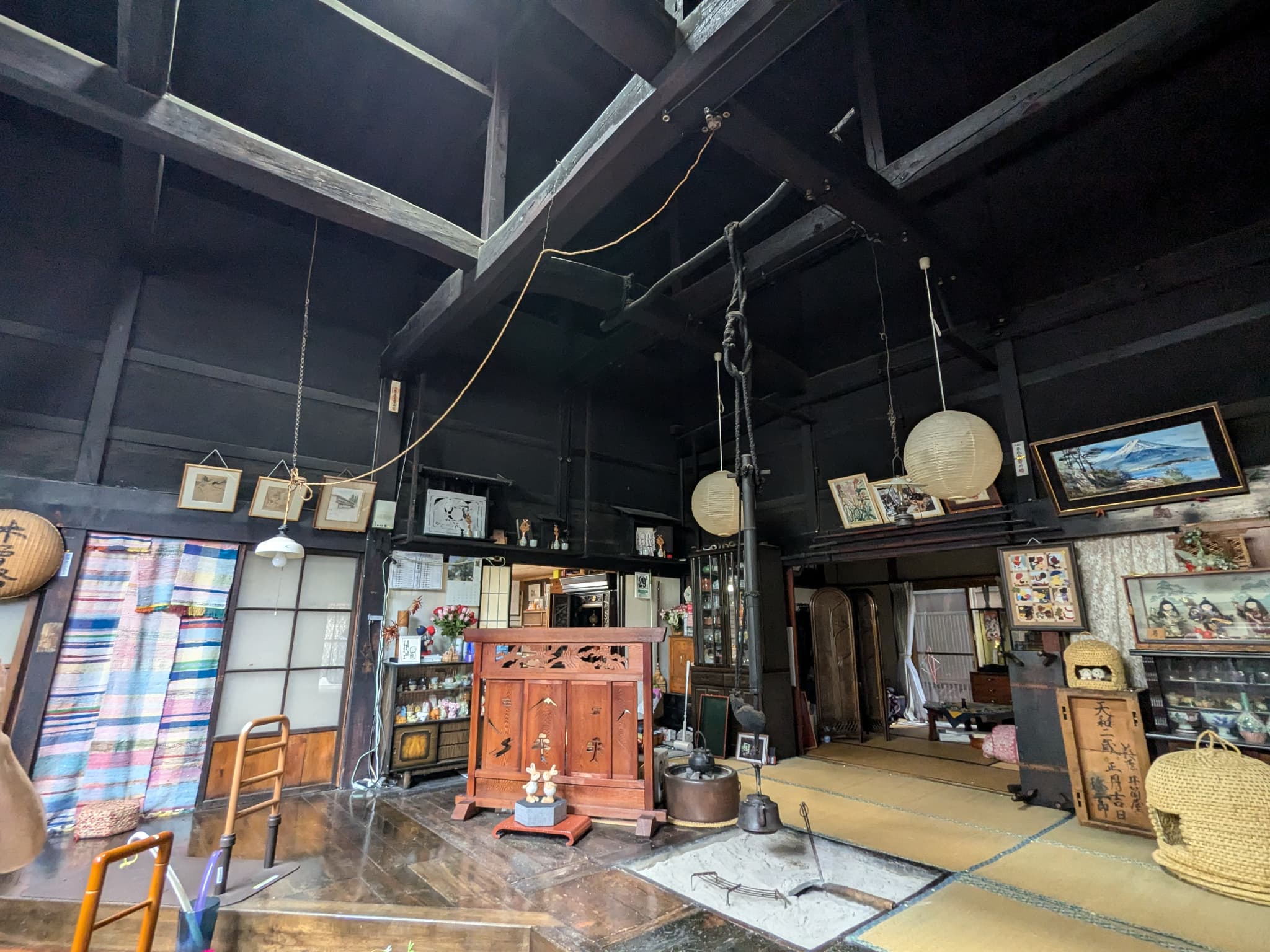
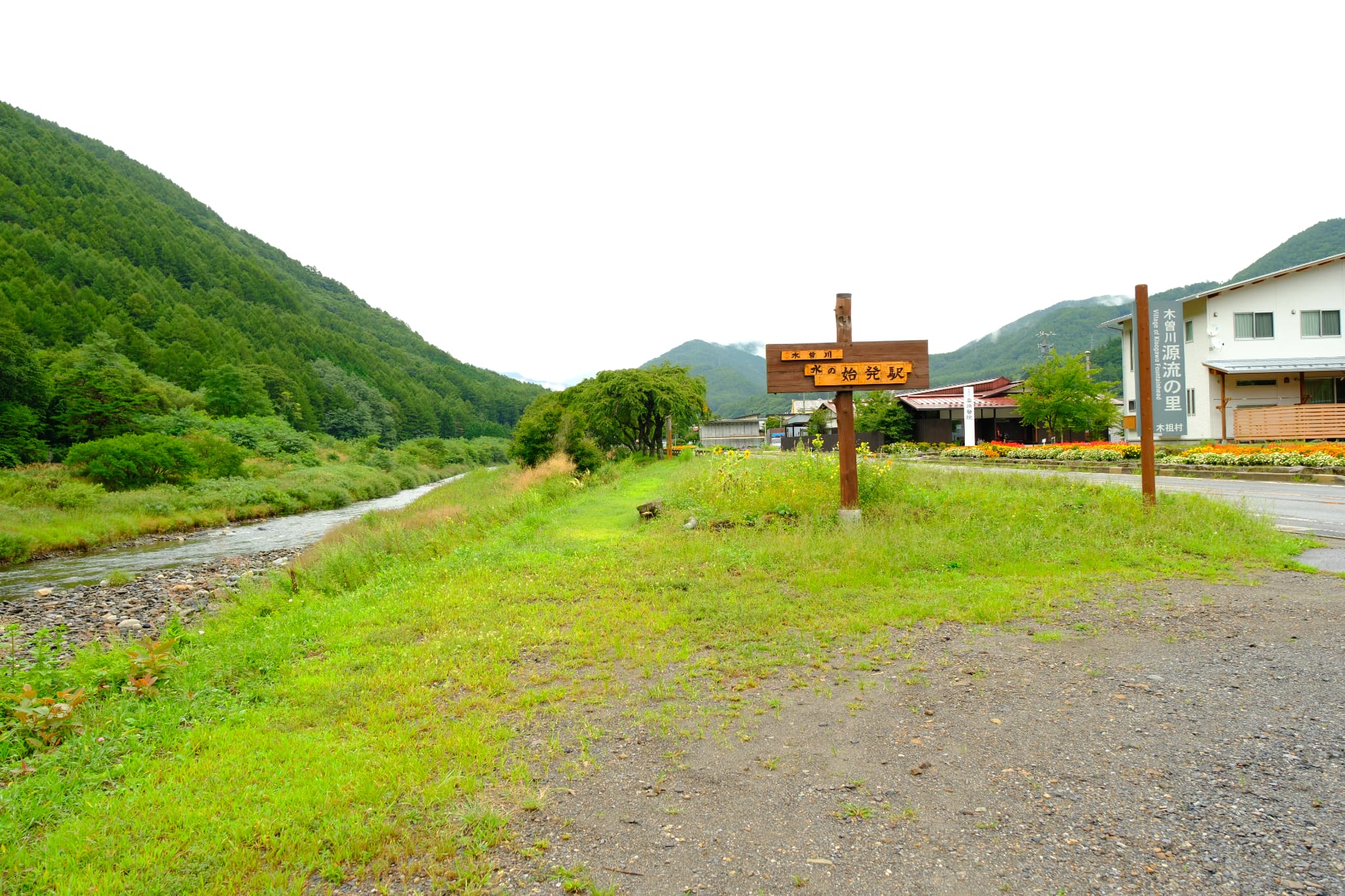
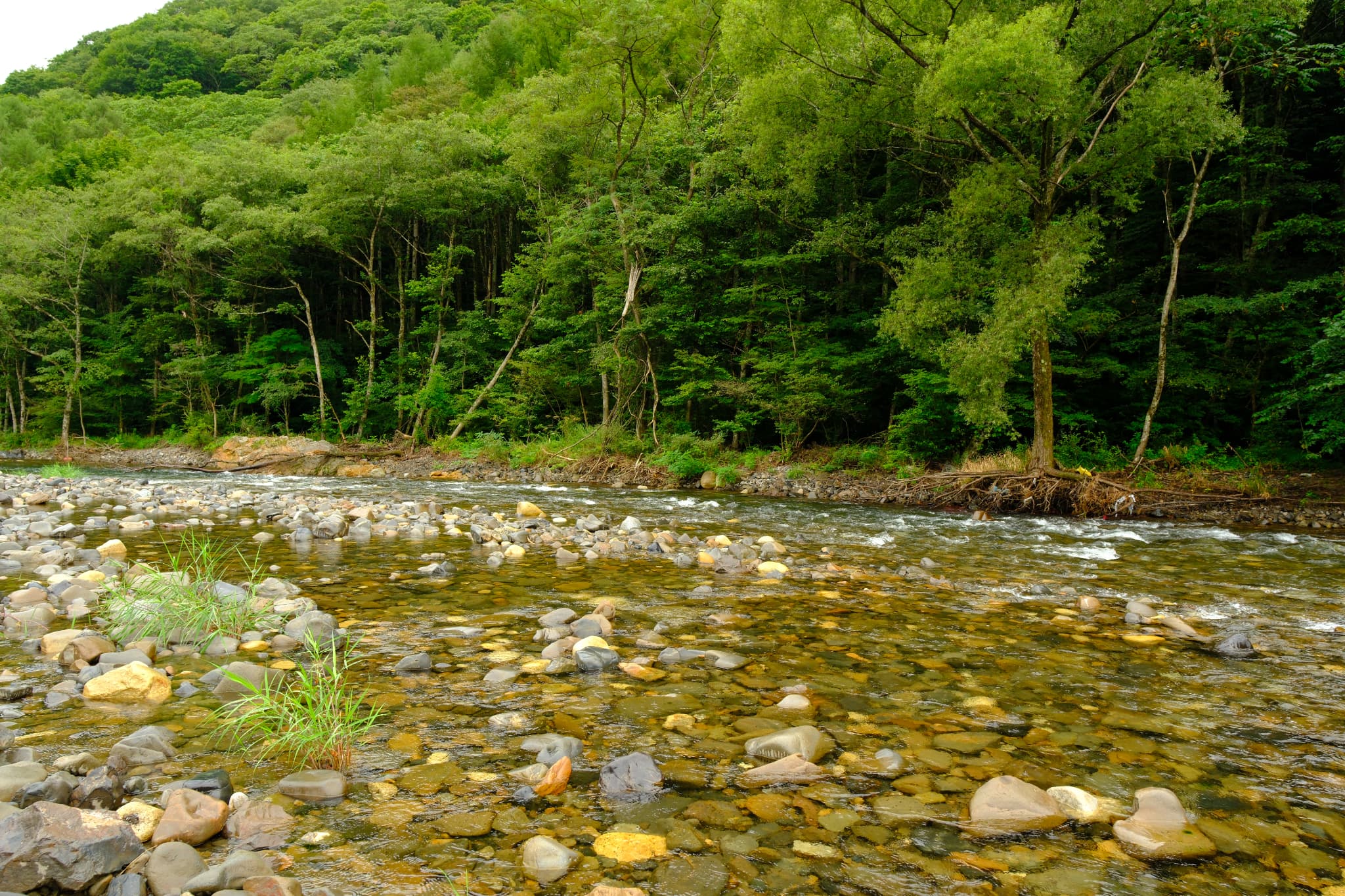
Miyanokoshi-juku
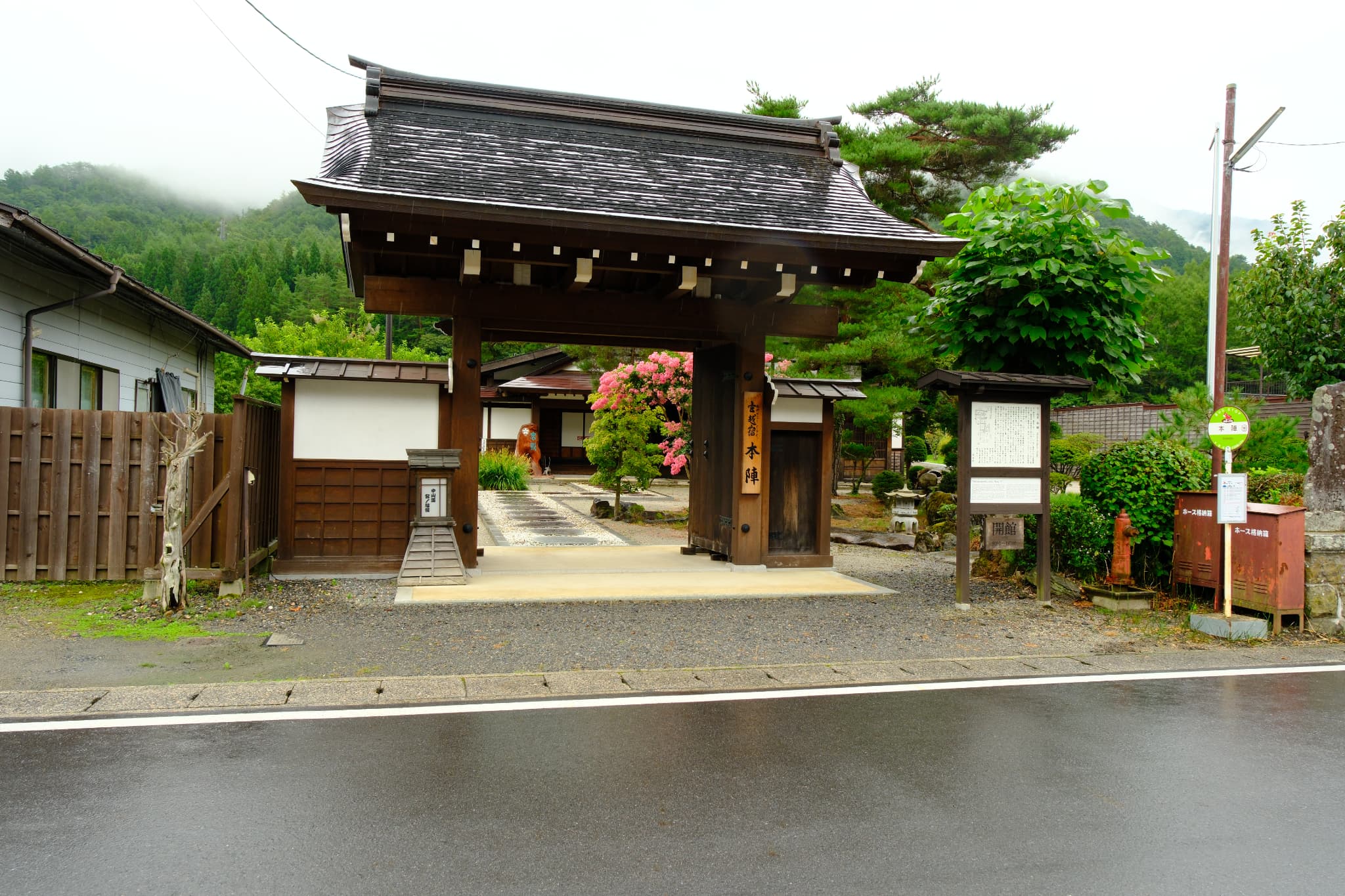
- Nearest Station: JR Chūō Main Line, Miyanokoshi Station
- Condition: The post town has mostly lost its historical atmosphere, but there is a restored Honjin (main inn).
- Walking distance from the station: About a 5-minute walk
The town itself has almost no traces of its former post town appearance. However, the Honjin remains, so it is worth visiting just to see this restored building.
The local signboard includes the following information:
“Miyanokoshi-juku suffered several major fires, and the Honjin was completely destroyed in the big fire of 1865, but it was quickly rebuilt. It was again hit by a large fire in 1883; although the main building was lost, the guest hall remained. Afterward, it was partially modified for use as a private residence, but it is the only surviving Honjin among the 11 post towns of Kiso, and it is a valuable building where even the room used by Emperor Meiji remains as it was.”
- Miyanokoshi-juku Honjin (About a 5-minute walk from Miyanokoshi Station – Google Maps)
https://www.town-kiso.com/facility/100031/ - Tokuon-ji Temple (About a 5-minute walk from Miyanokoshi Station – Google Maps)
https://db.go-nagano.net/topics_detail6/id=5454 - Yoshinaka-kan (About a 5-minute walk from Miyanokoshi Station – Google Maps)
https://yoshinakayakata.com/
Tokuon-ji Temple and Yoshinaka-kan are located on the same grounds. The Kiso region is connected to the samurai Kiso Yoshinaka, and these two buildings are also deeply related to him.
Kiso Yoshinaka, formally known as Minamoto no Yoshinaka, was a cousin of Minamoto no Yoritomo and Minamoto no Yoshitsune. The surname “Minamoto” is significant in Japanese history and appears in elementary school history studies.
Kiso Yoshinaka’s formal name is Minamoto no Yoshinaka. He is referred to as “Kiso” because he lost his father in his youth and was raised by his mother’s relatives in “Kiso Valley” (now Kiso in Nagano Prefecture), leading to the name “Kiso Yoshinaka.
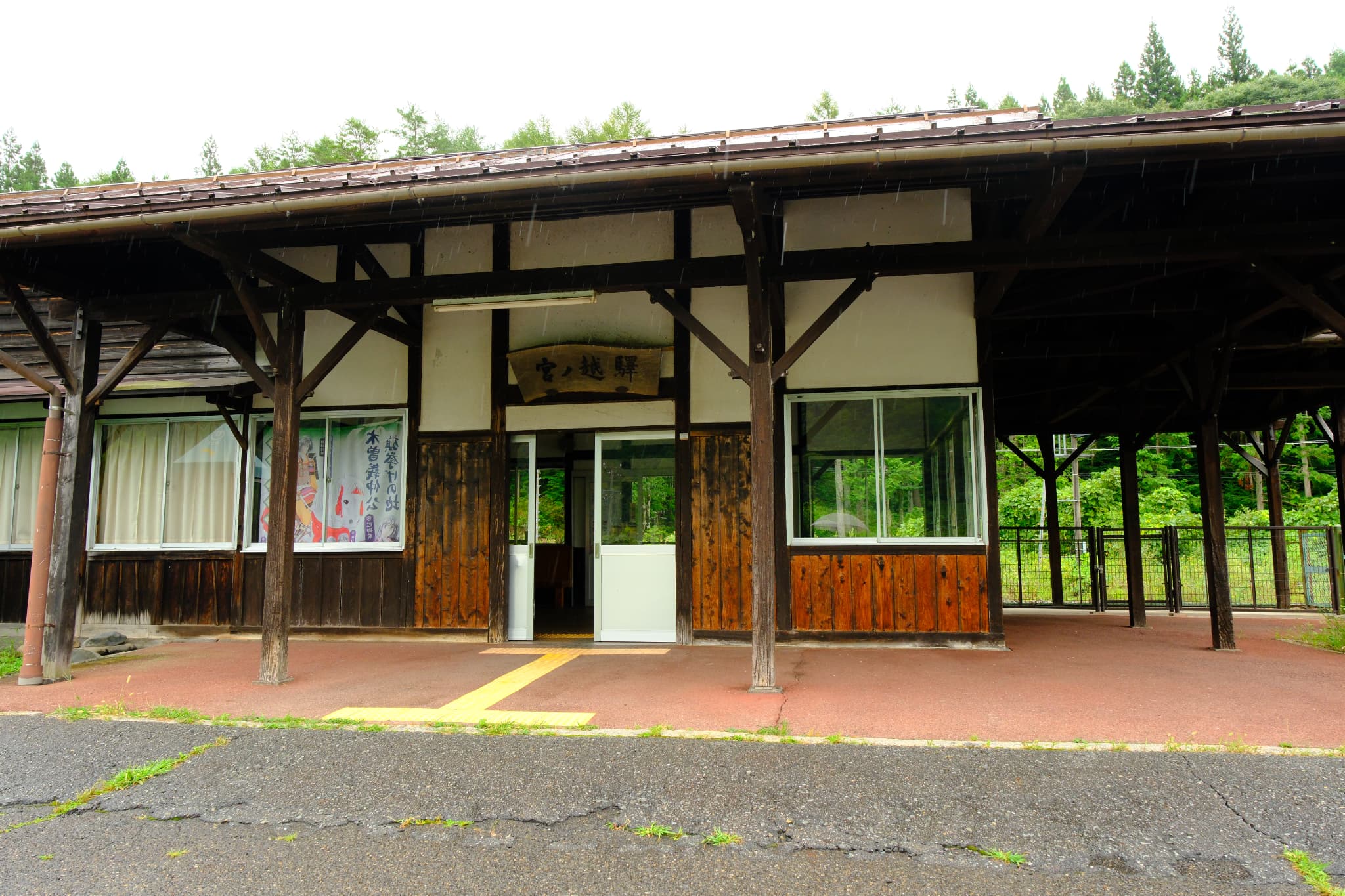
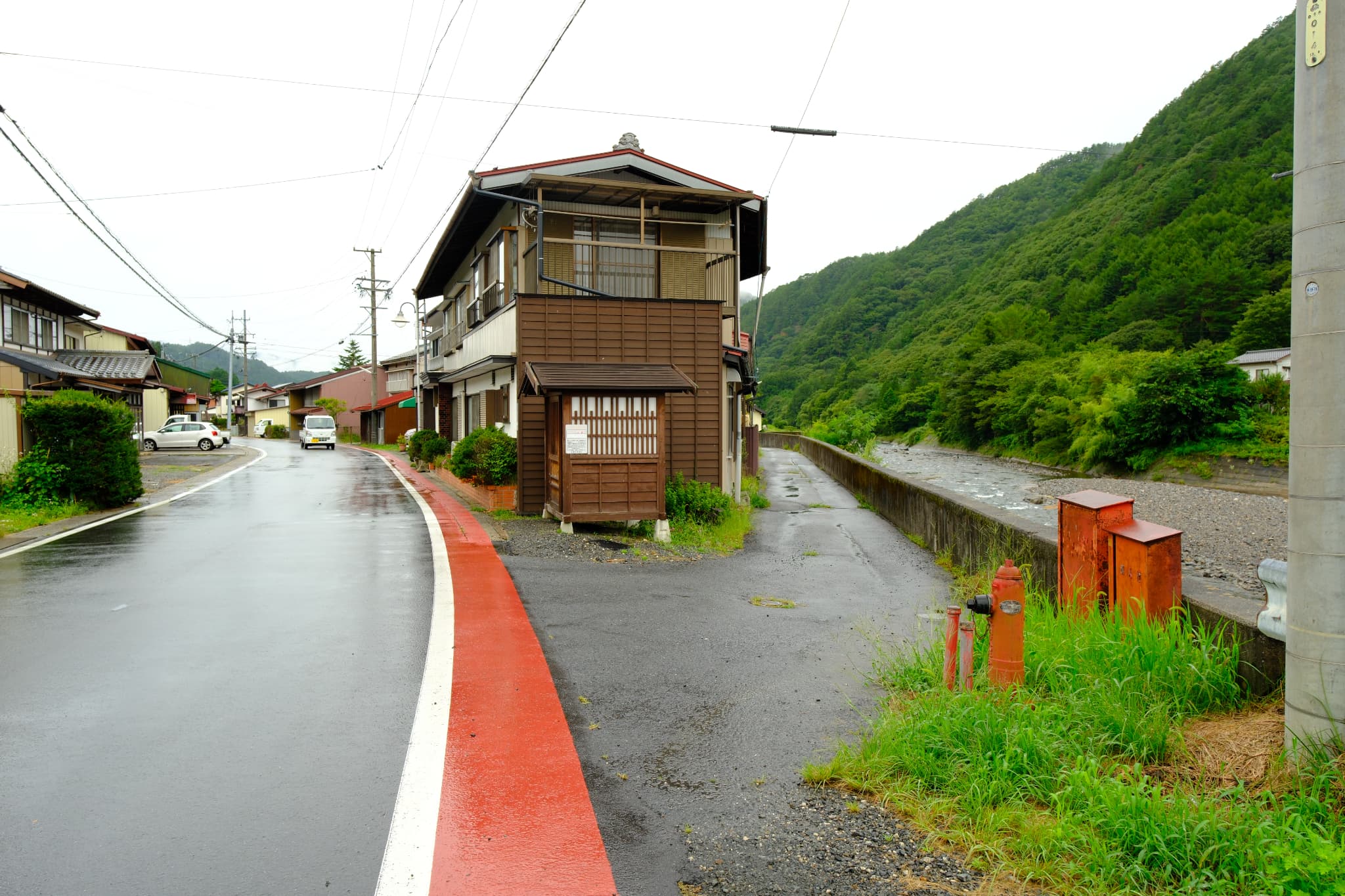
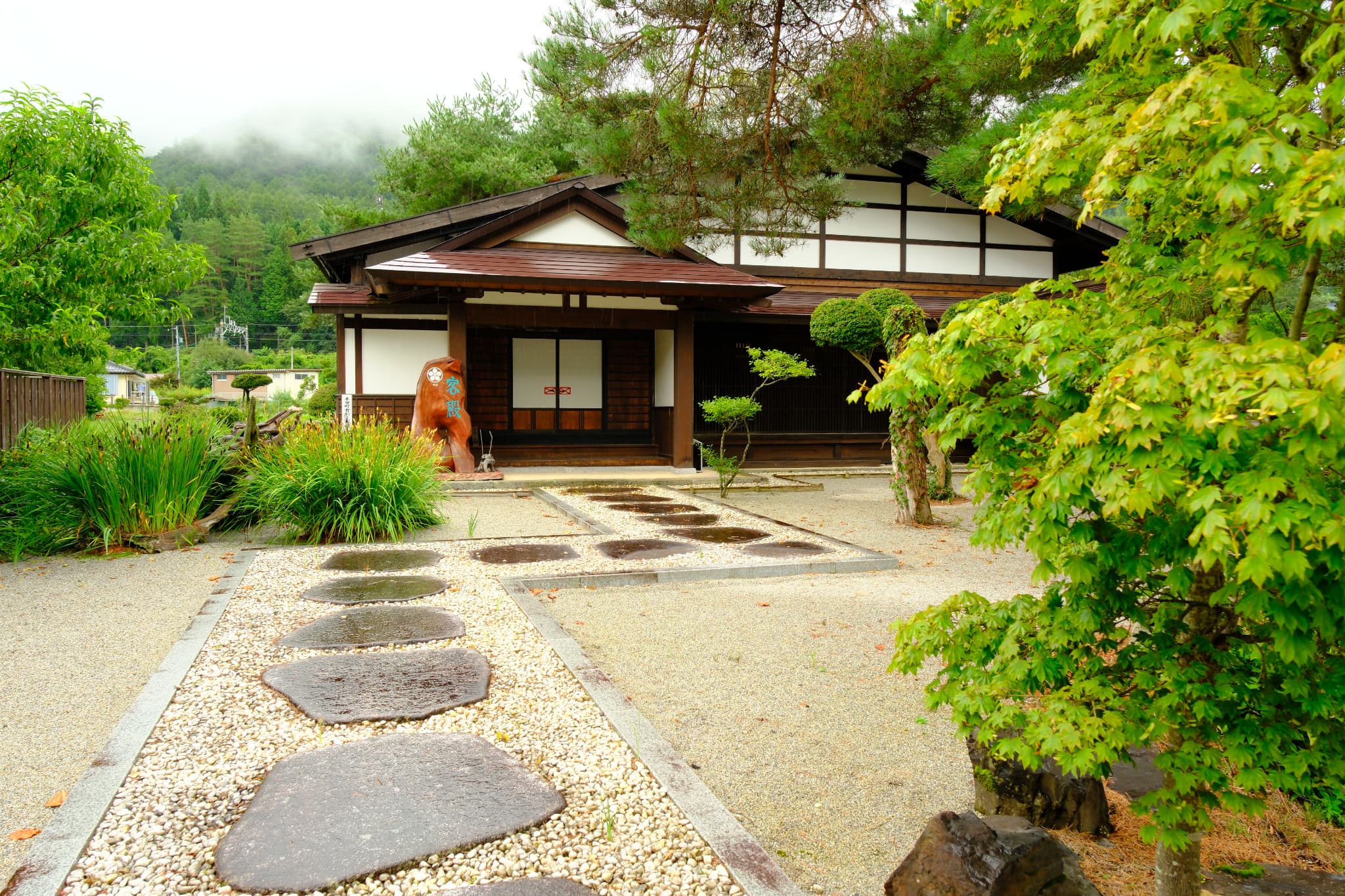
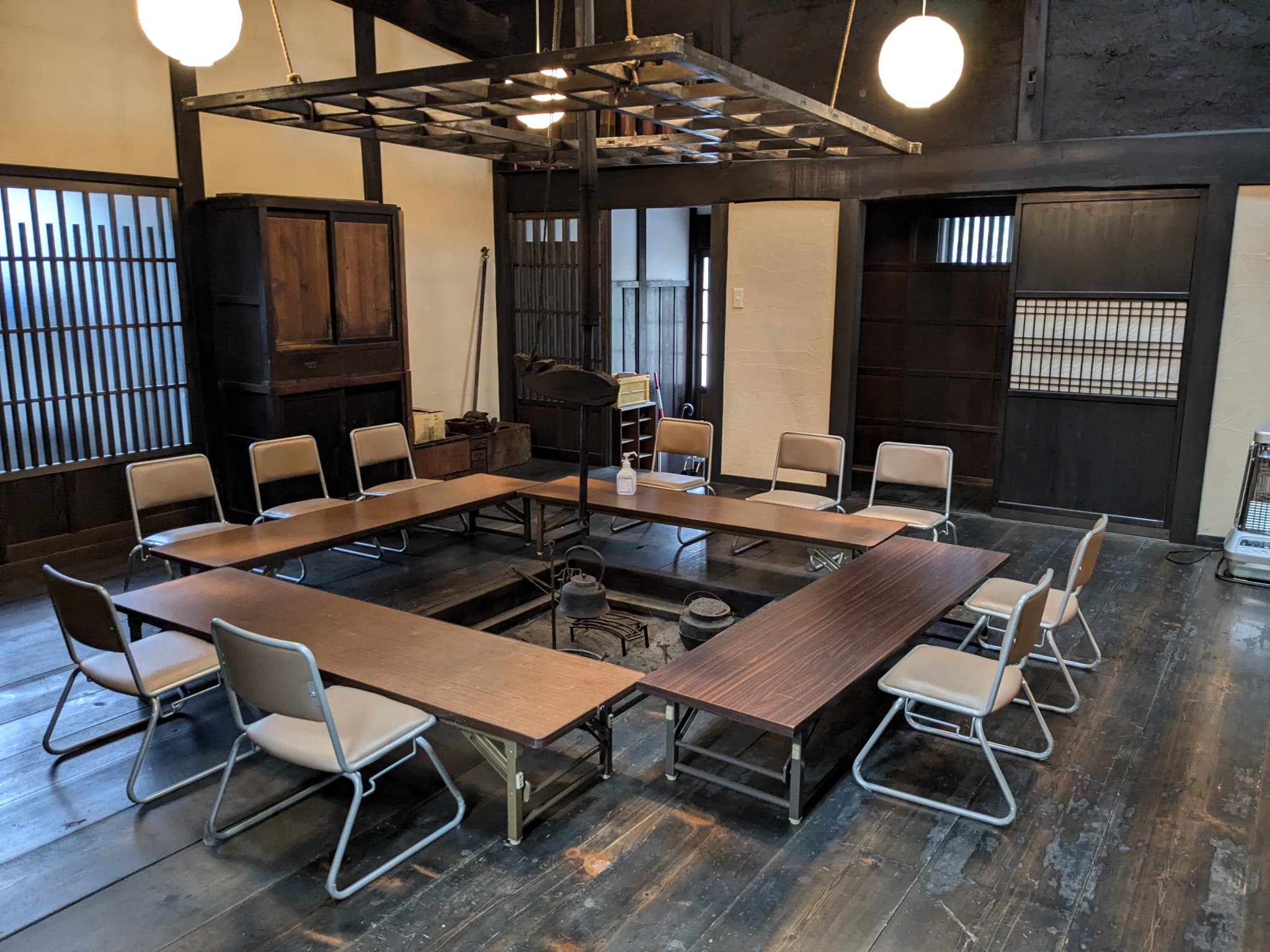
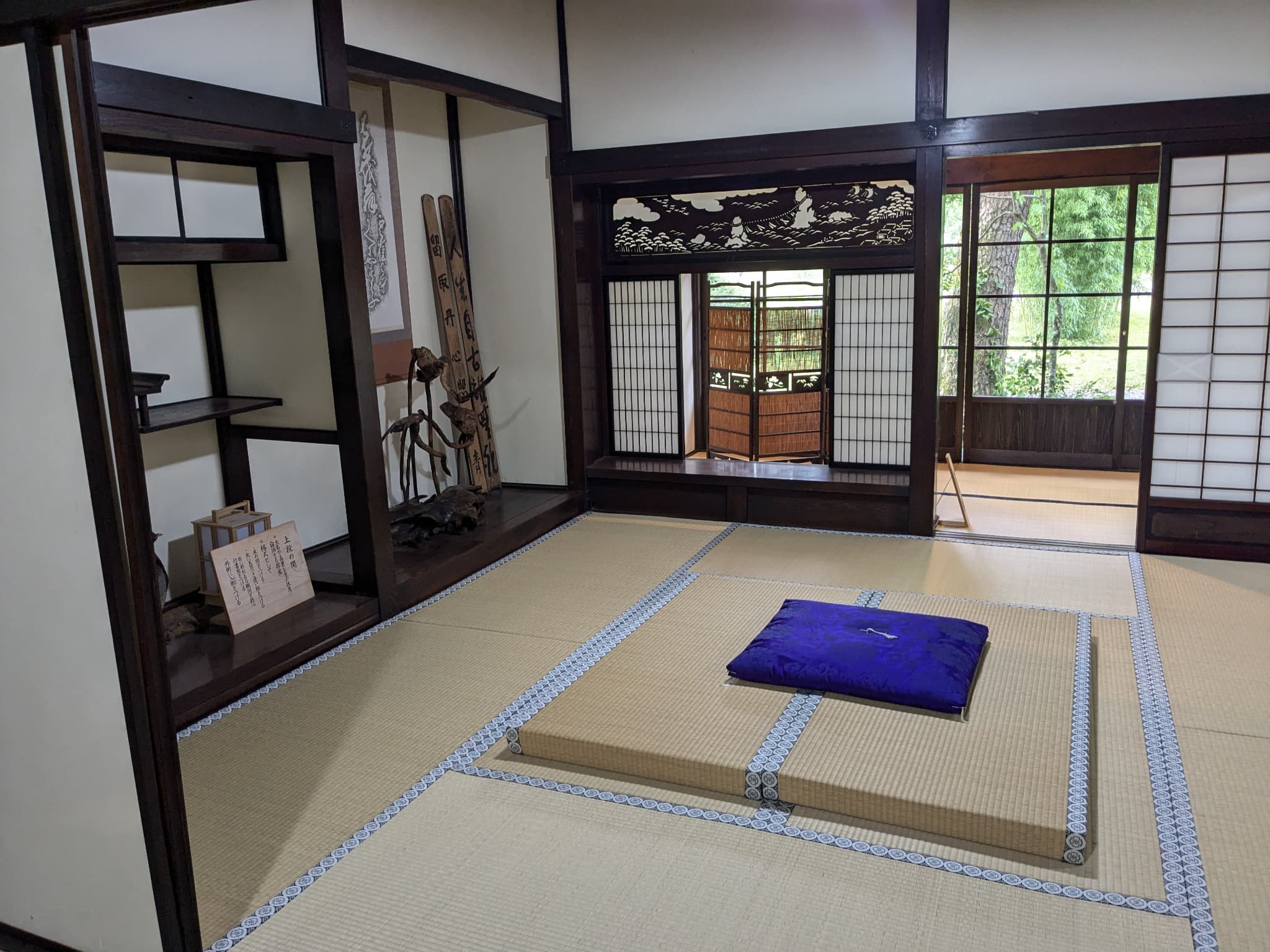
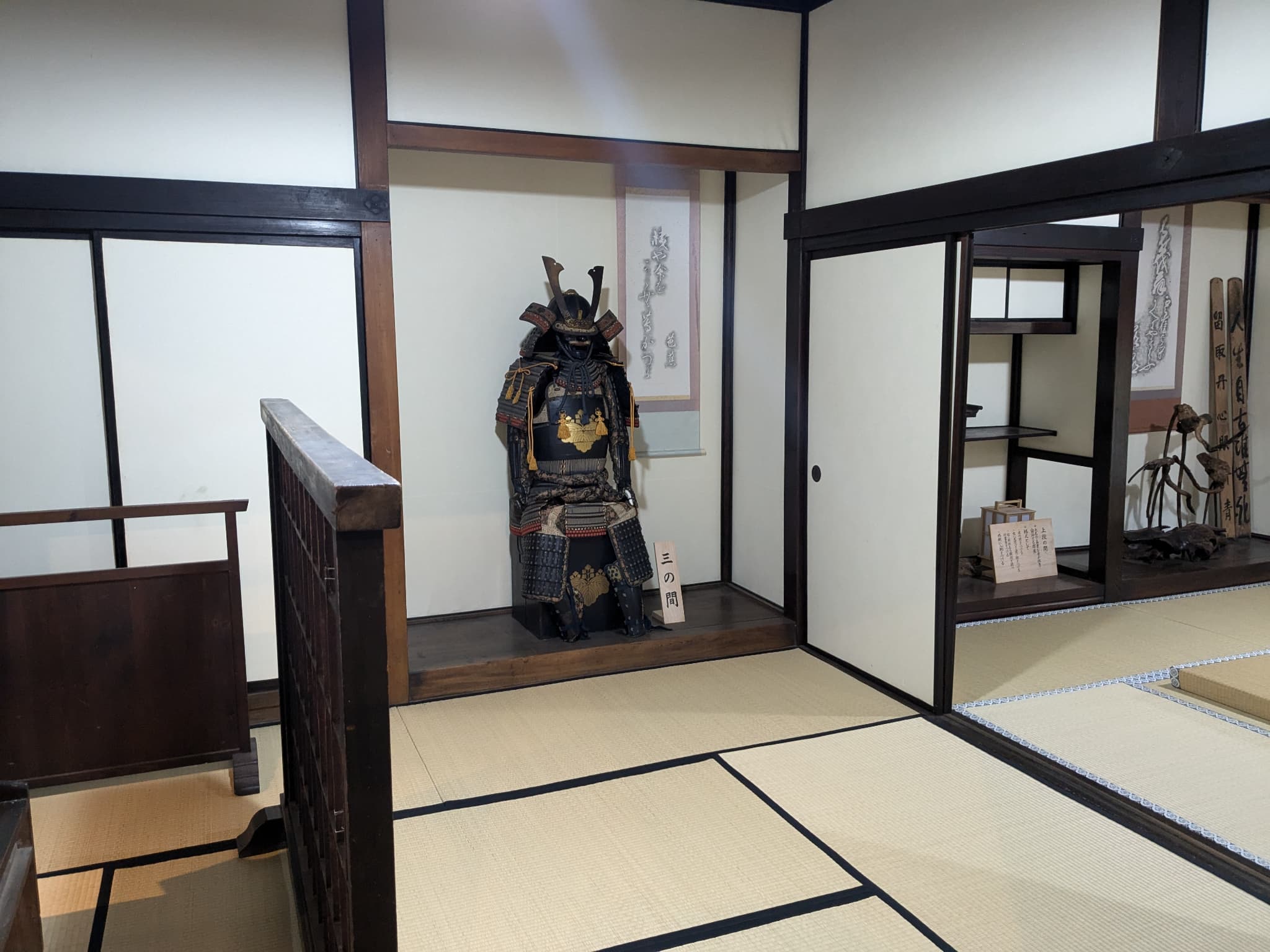
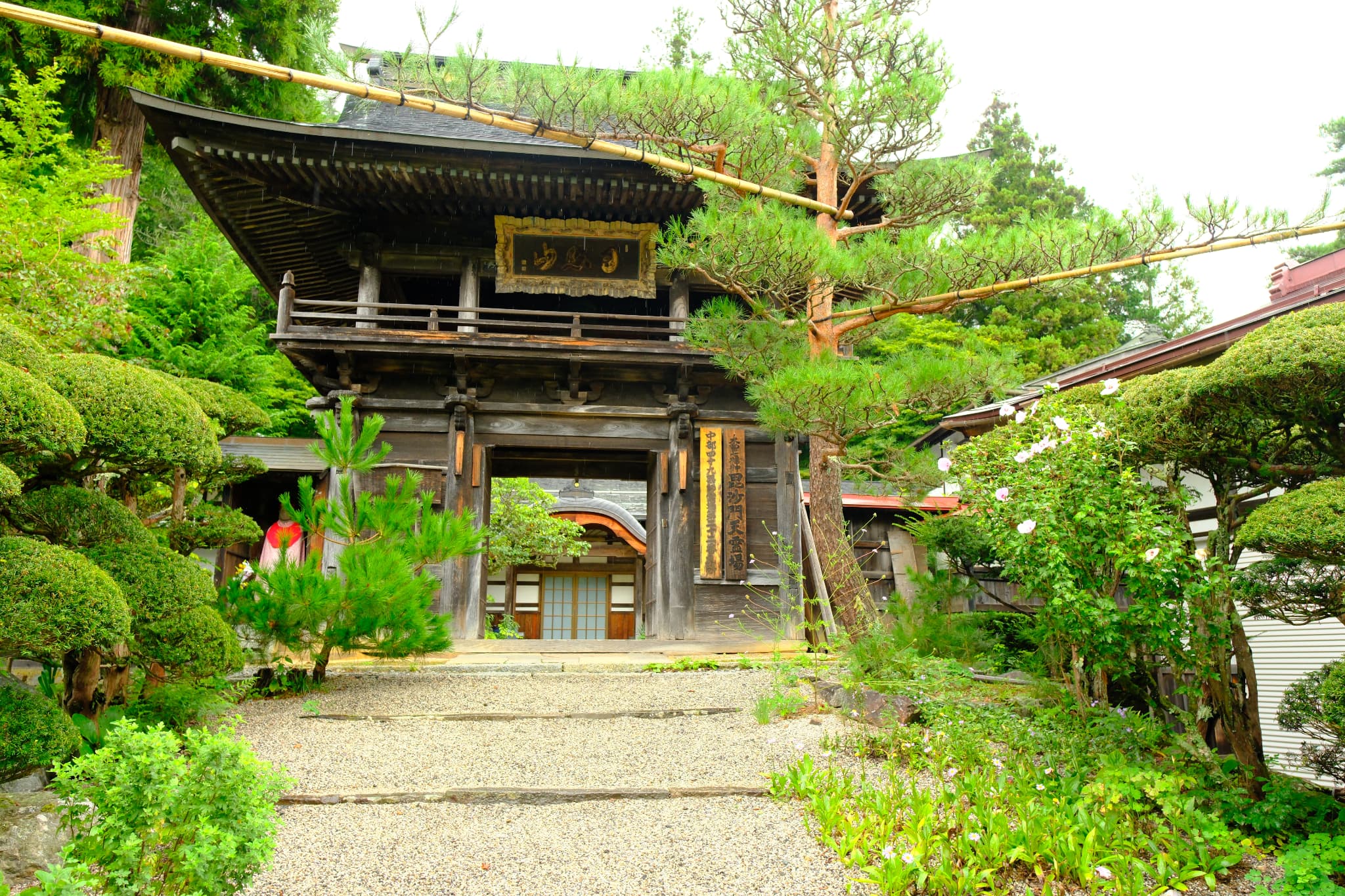
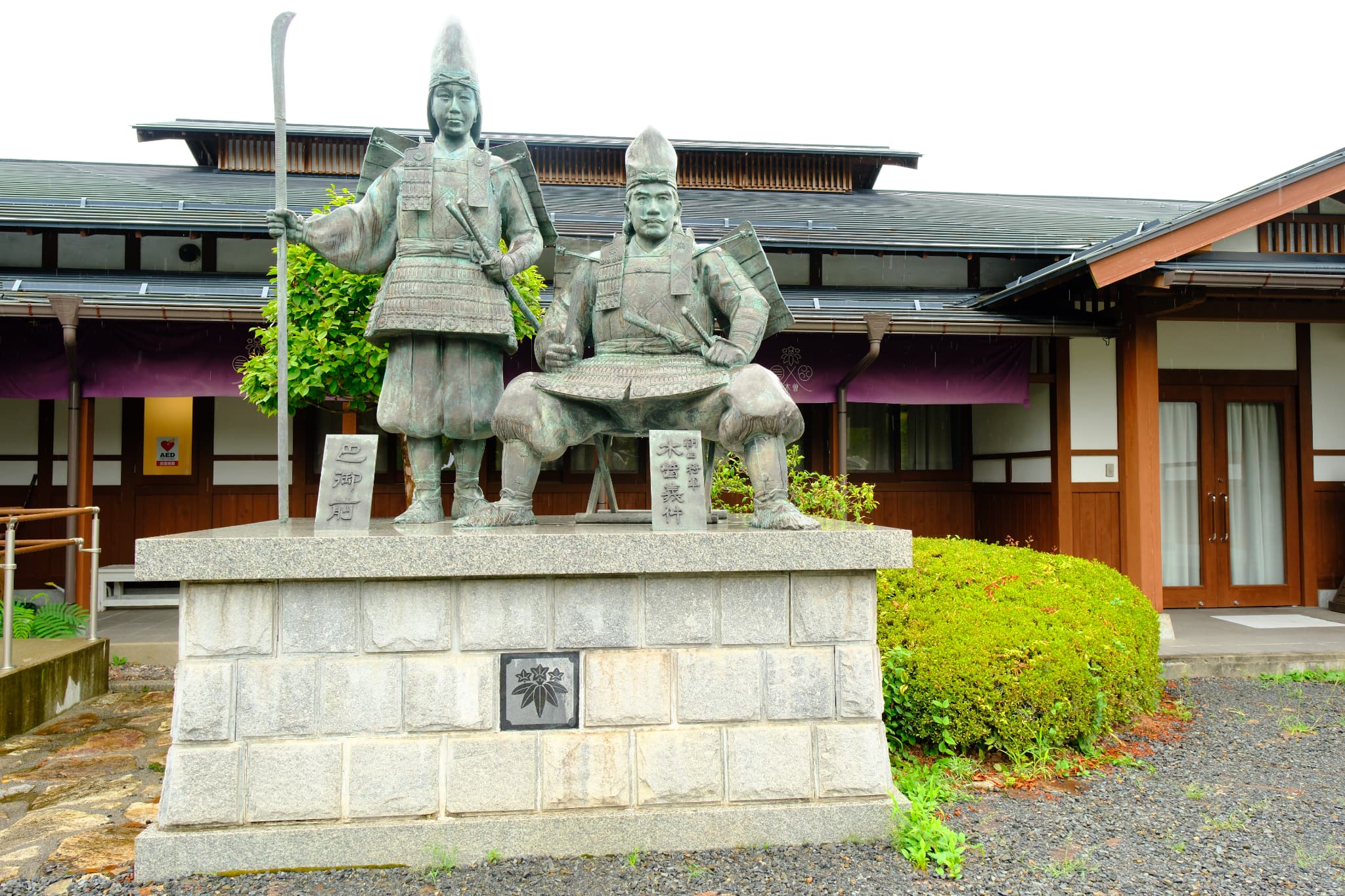
- Nearest Station: JR Chūō Main Line, Kiso-Fukushima Station
Note: It is also possible to travel to “Kiso-Fukushima Station” from Shinjuku, Tokyo, by express bus. However, as the website is only in Japanese, if you find booking difficult, it’s better to take the train. The bus fare is an attractive 4,800 yen one-way.
https://ontakekotsu.com/highway - Condition: The post town retains a strong historical atmosphere.
- Walking distance from the station: About a 10-minute walk
In Fukushima-juku, parts of the town strongly retain its historical atmosphere. The area most vividly preserving this is known as “Kami-no-dan” (Upper Section), which is located higher up and accessed by stairs.
Additionally, Kiso-Fukushima Station is well-equipped with ryokans, convenience stores, restaurants, souvenir shops, and sake breweries, making it a recommended base for sightseeing.
- Fukushima-juku Area (About a 10-minute walk from Kiso-Fukushima Station – Google Maps)
https://www.cbr.mlit.go.jp/iikoku/drive/kisoji/hukushima.html - Fukushima Sekisho Ruins and Fukushima Sekisho Museum (About a 19-minute walk from Kiso-Fukushima Station: Fukushima Sekisho – Google Maps, Fukushima Sekisho Museum – Google Maps)
https://www.town-kiso.com/facility/100024/
The Sekisho (checkpoint) and Sekisho Museum are about 30 seconds apart on foot, so please check the map for their locations. The museum is a reconstructed building of the original checkpoint. - Yamamura Daikan-yashiki (About a 16-minute walk from Kiso-Fukushima Station – Google Maps)
https://www.town-kiso.com/facility/100025/ - Nanawarai Sake Brewery (About a 12-minute walk from Kiso-Fukushima Station – Google Maps)
https://www.nanawarai.co.jp/en/
This is a sake brewery where you can purchase sake at the store. - Nakanori Sake Brewery (About a 9-minute walk from Kiso-Fukushima Station – Google Maps)
https://nakanorisan.com/
This is a sake brewery where you can purchase sake at the store.
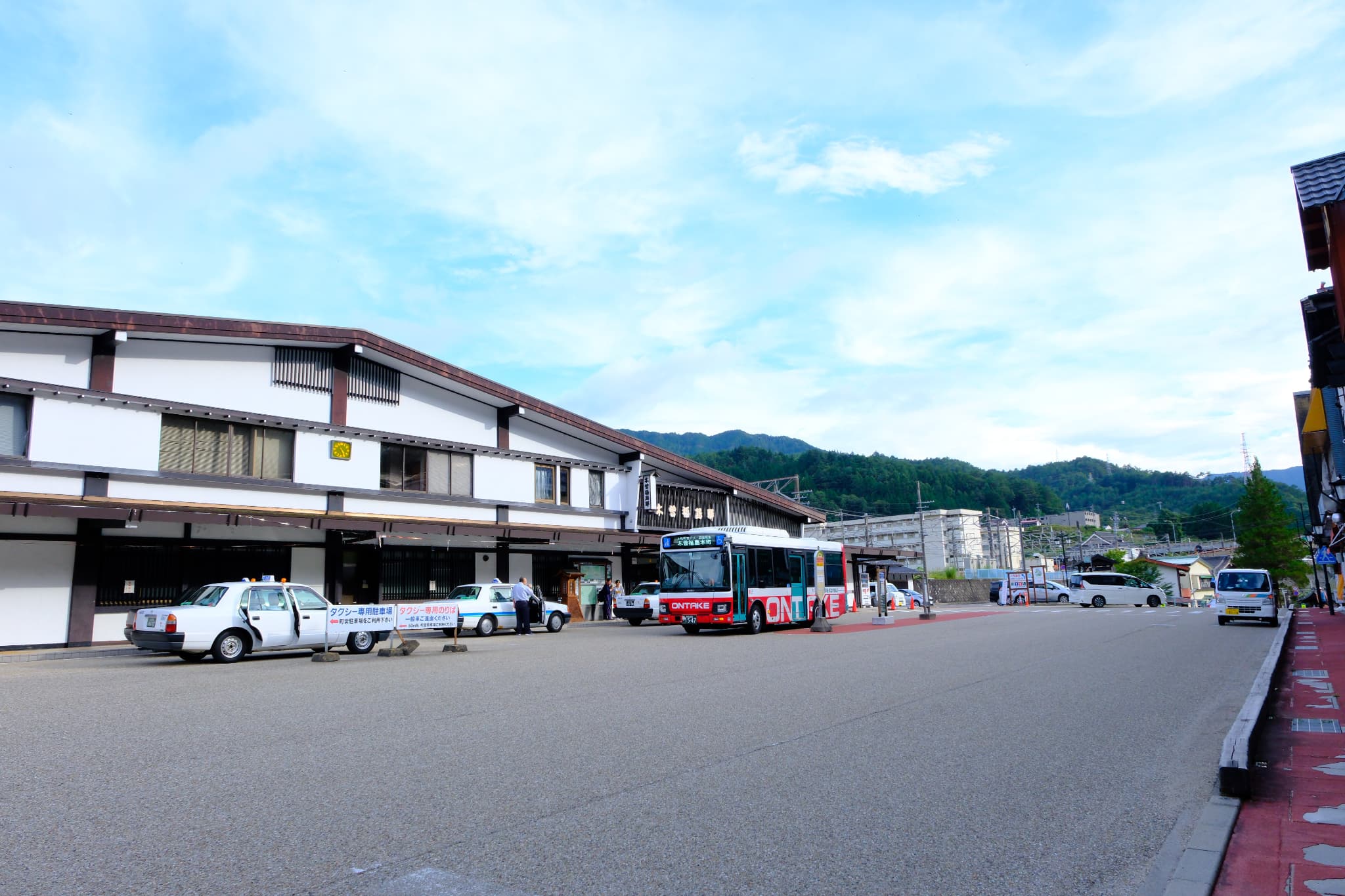
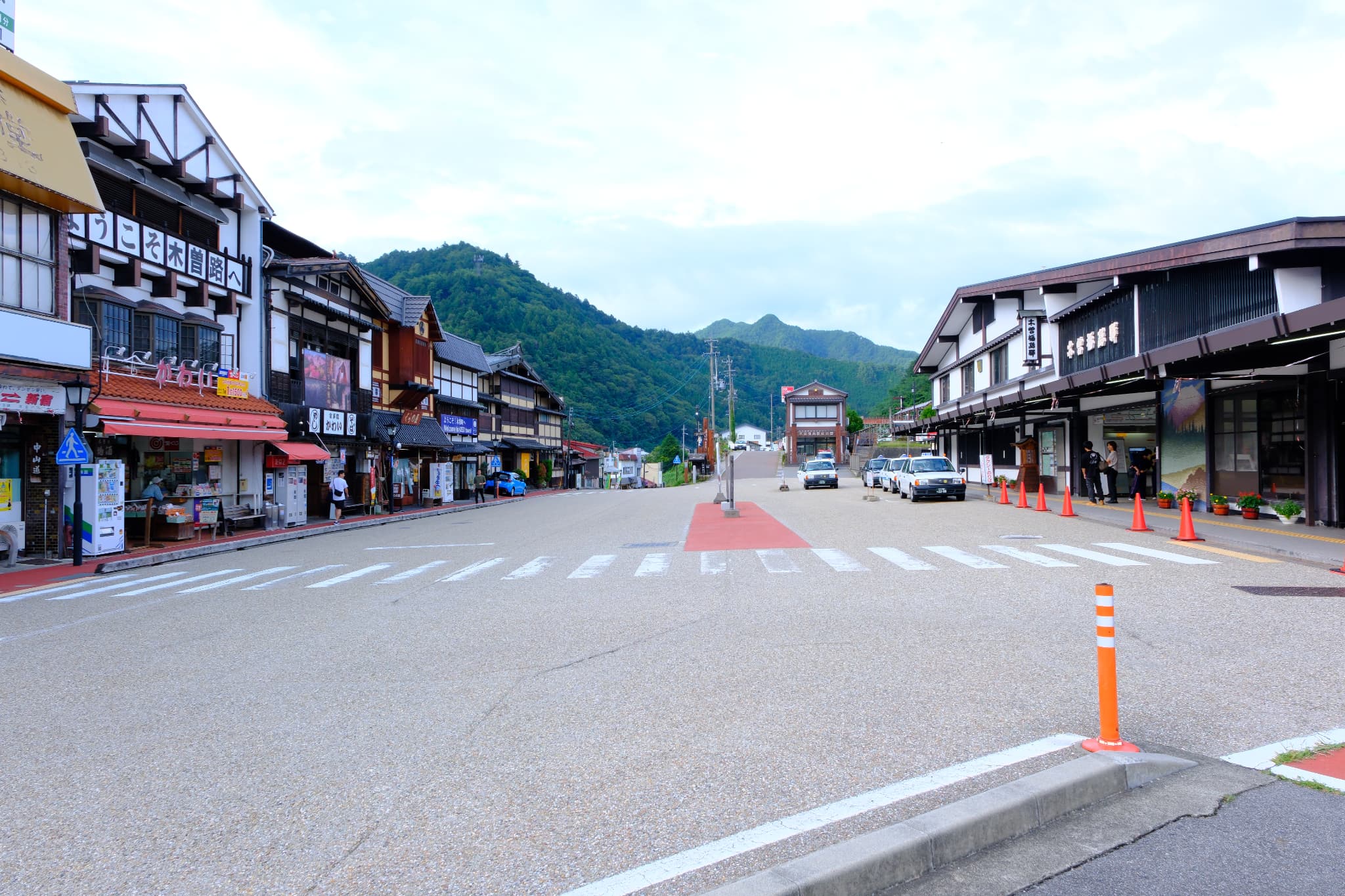
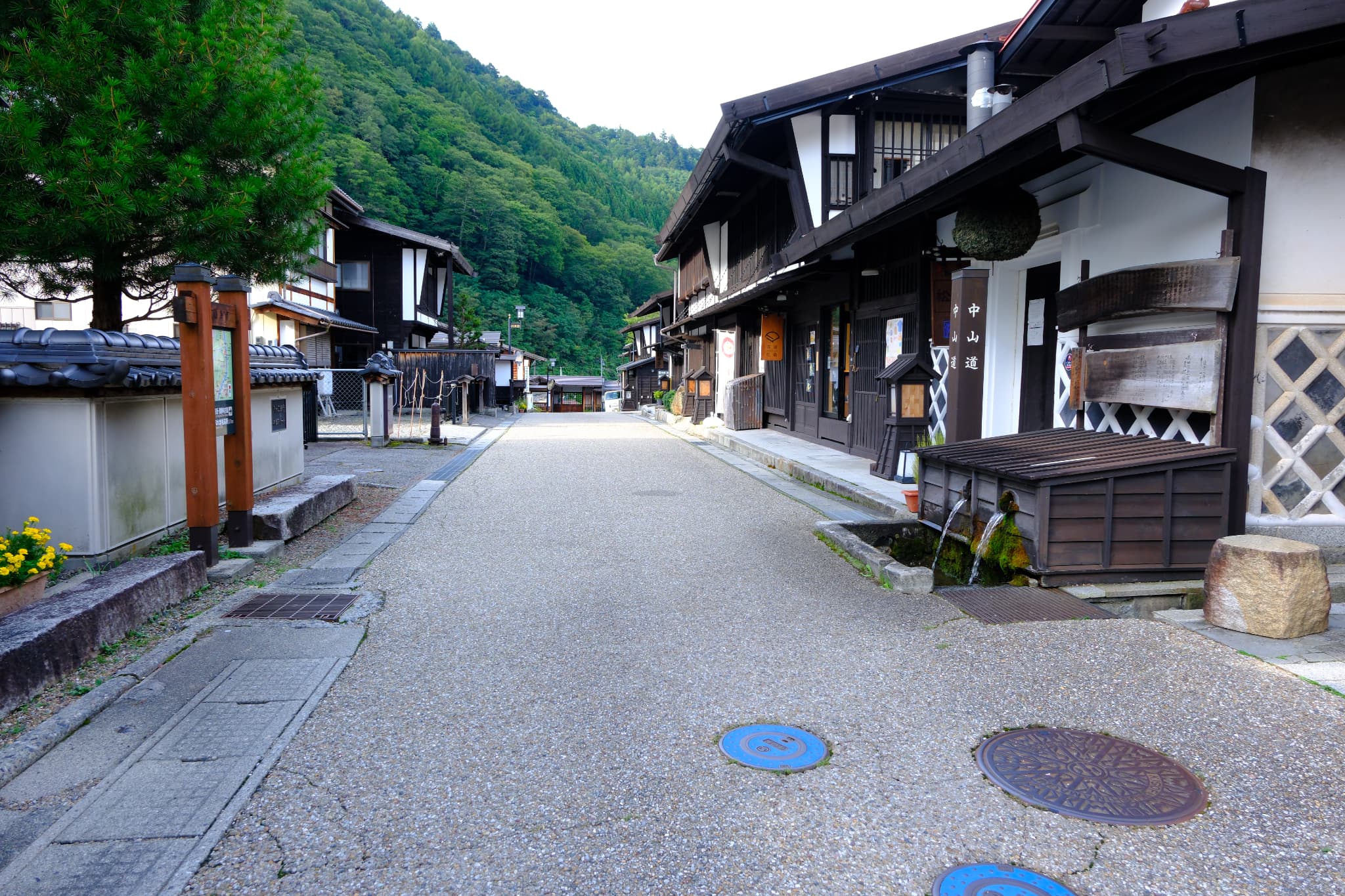
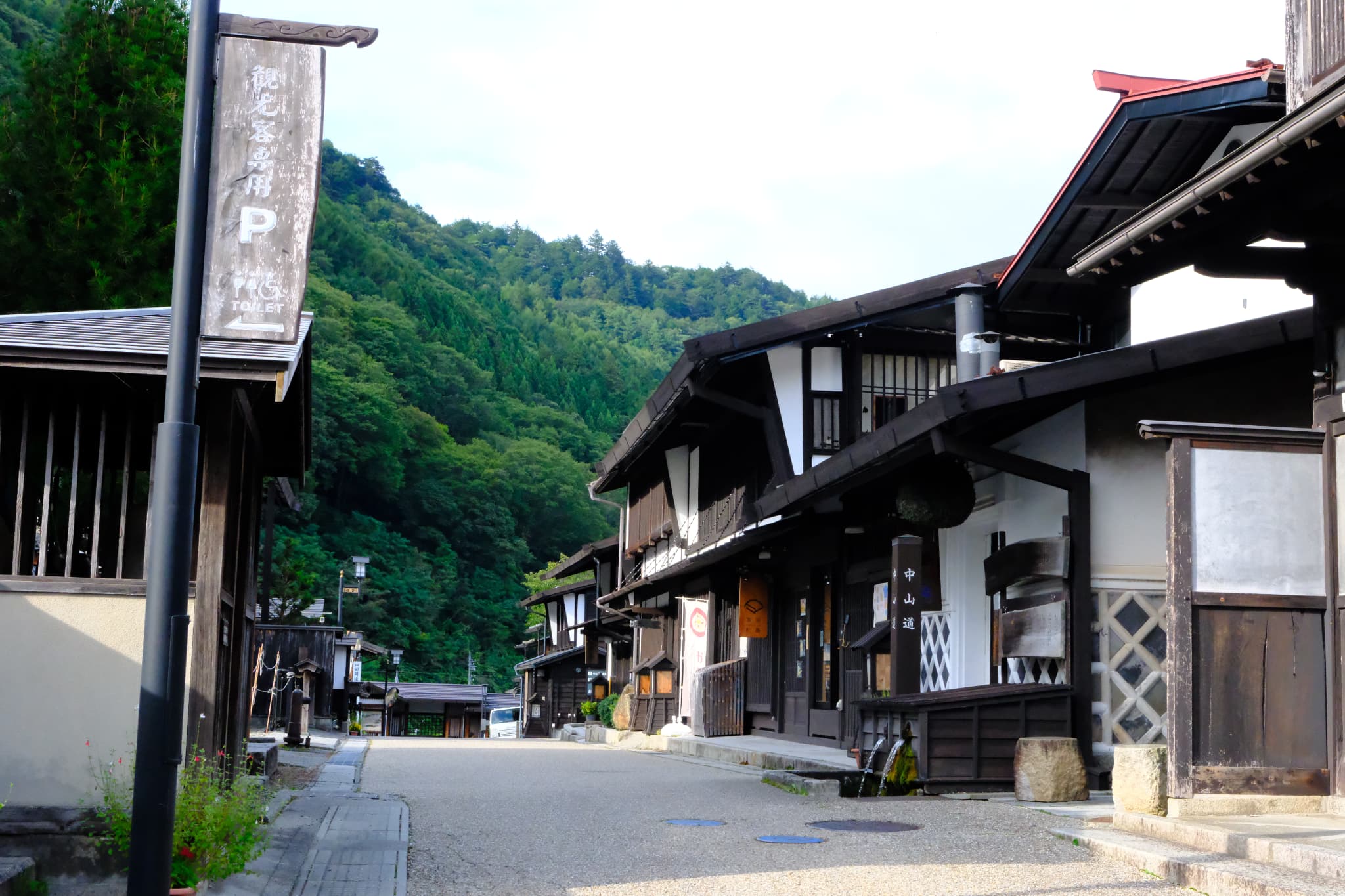
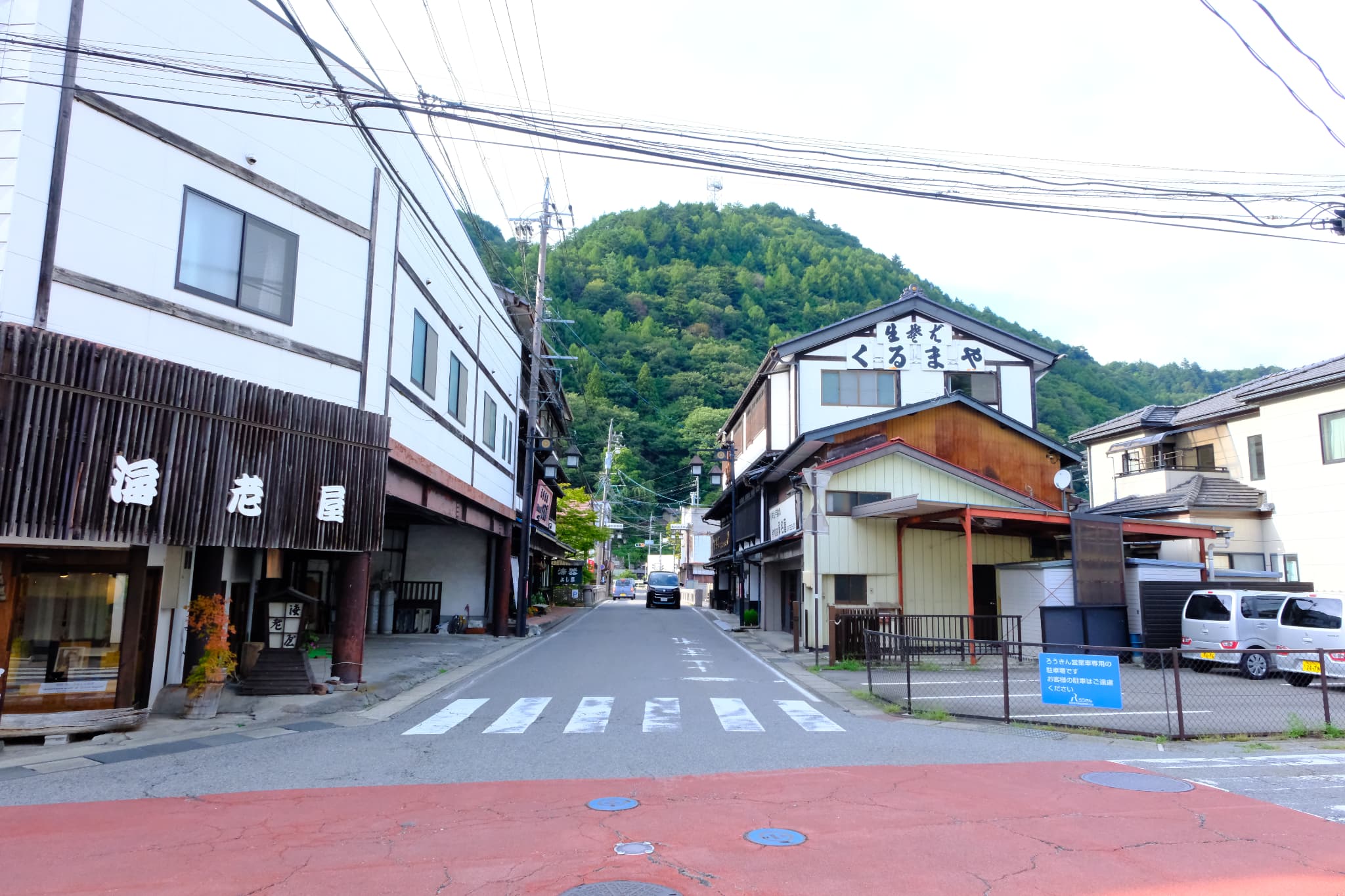
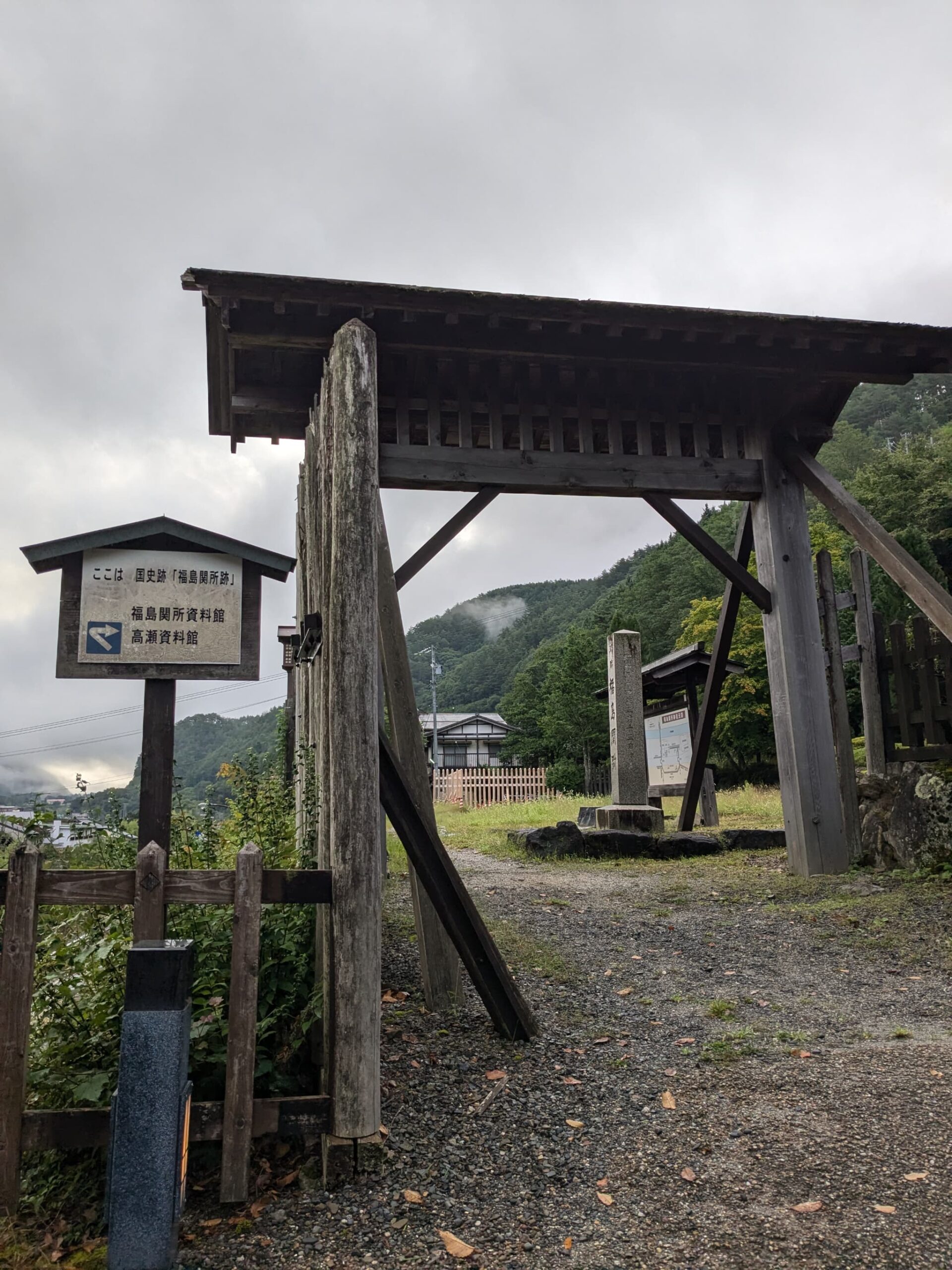
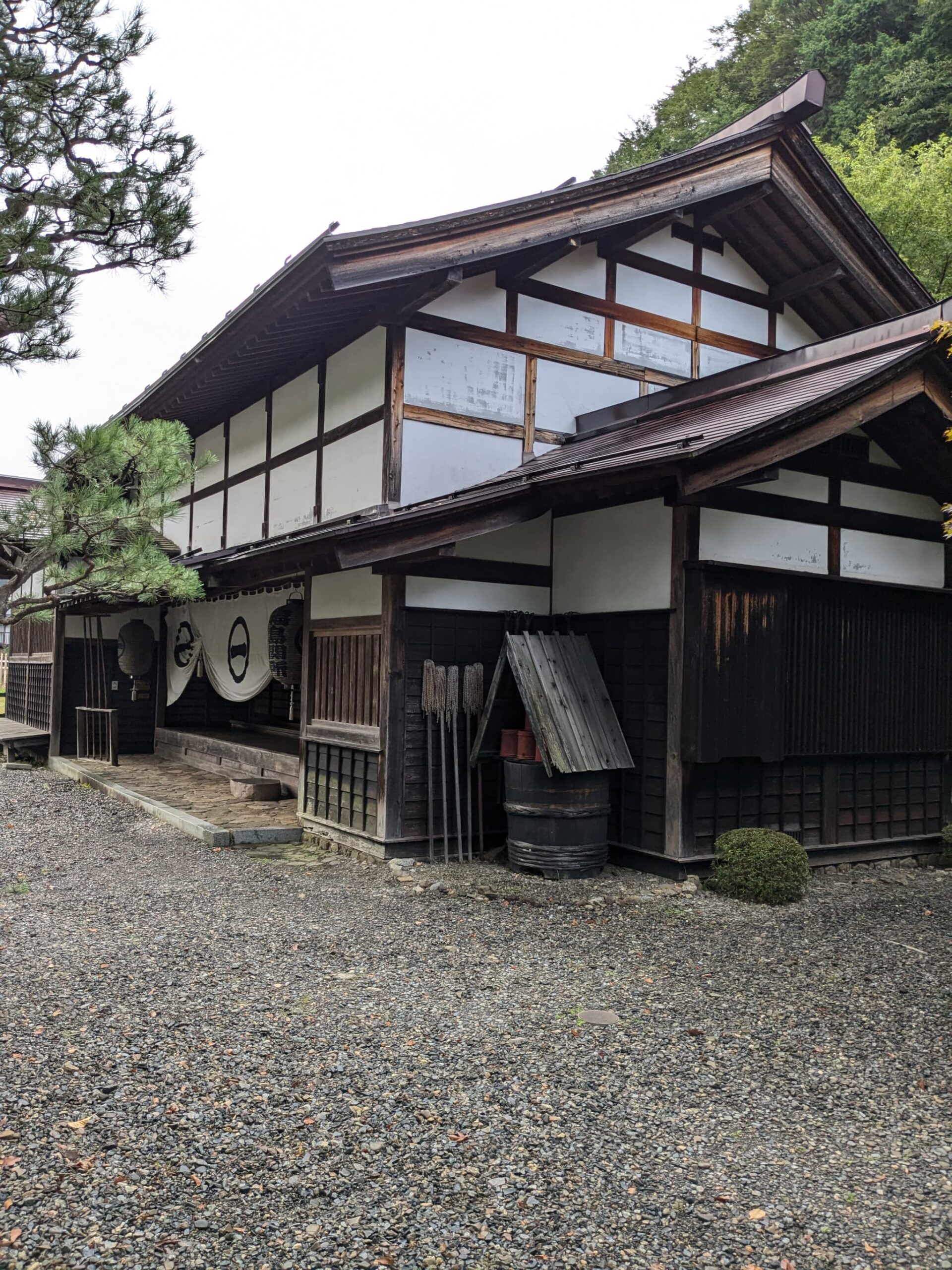
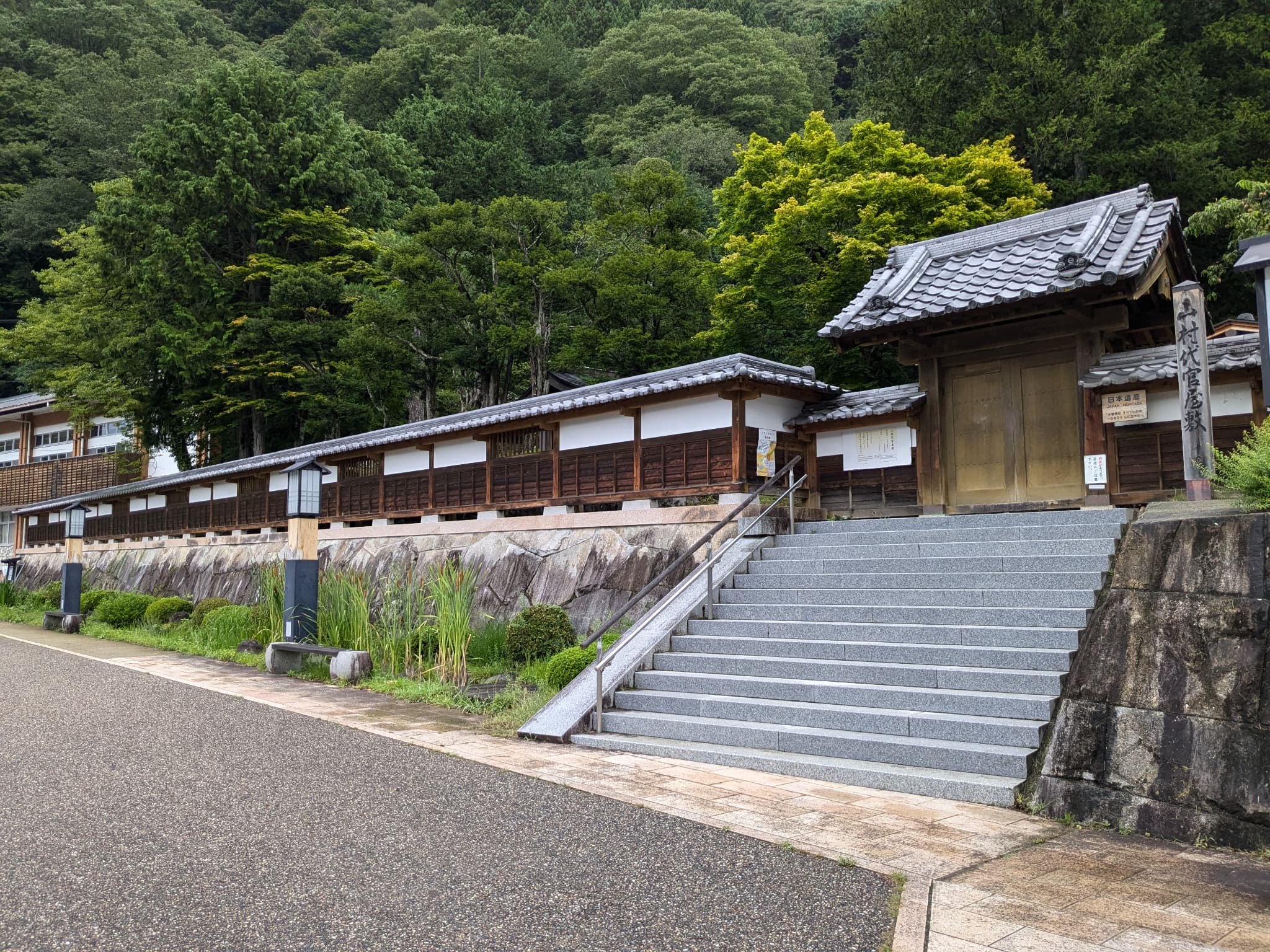
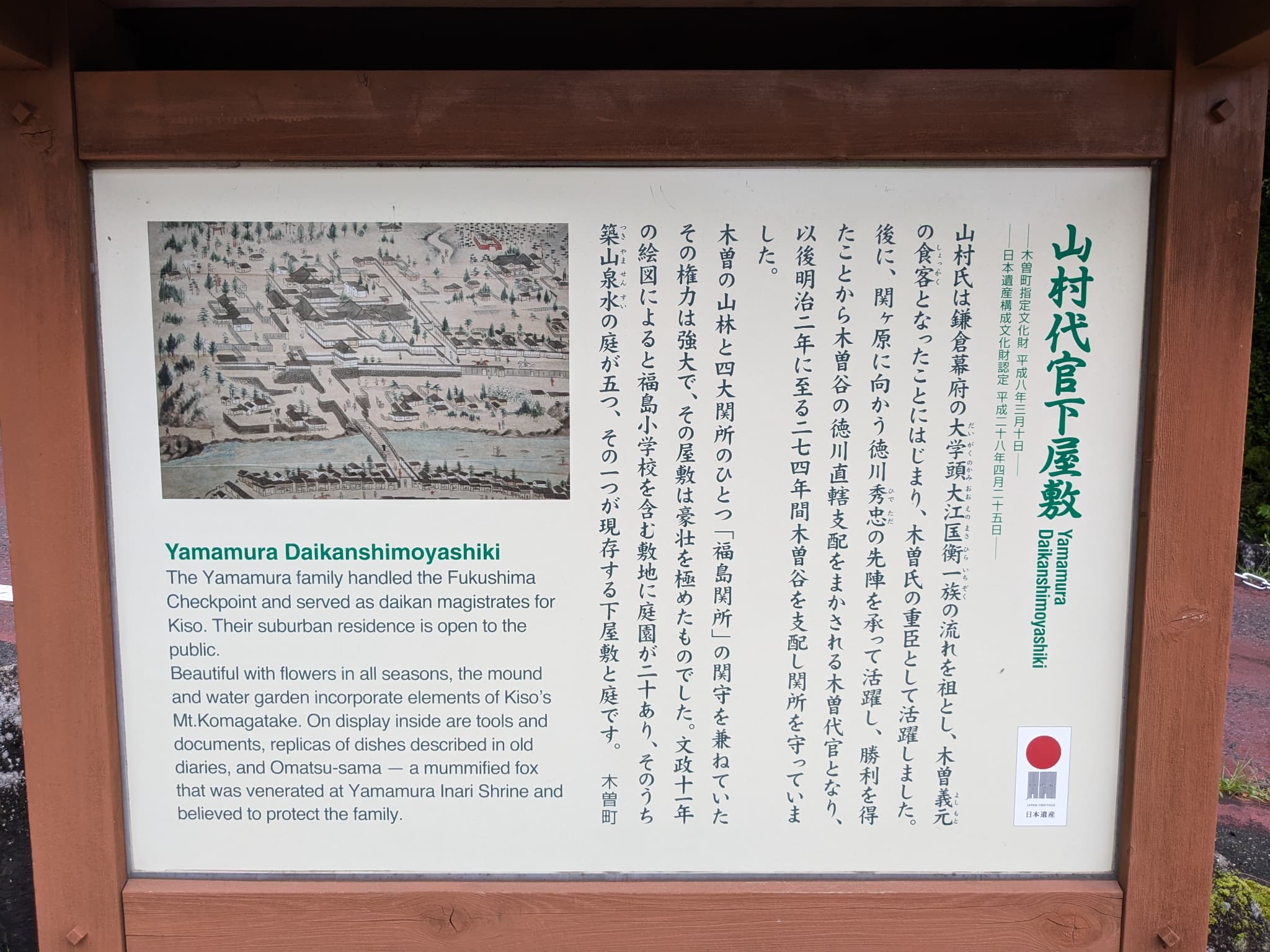

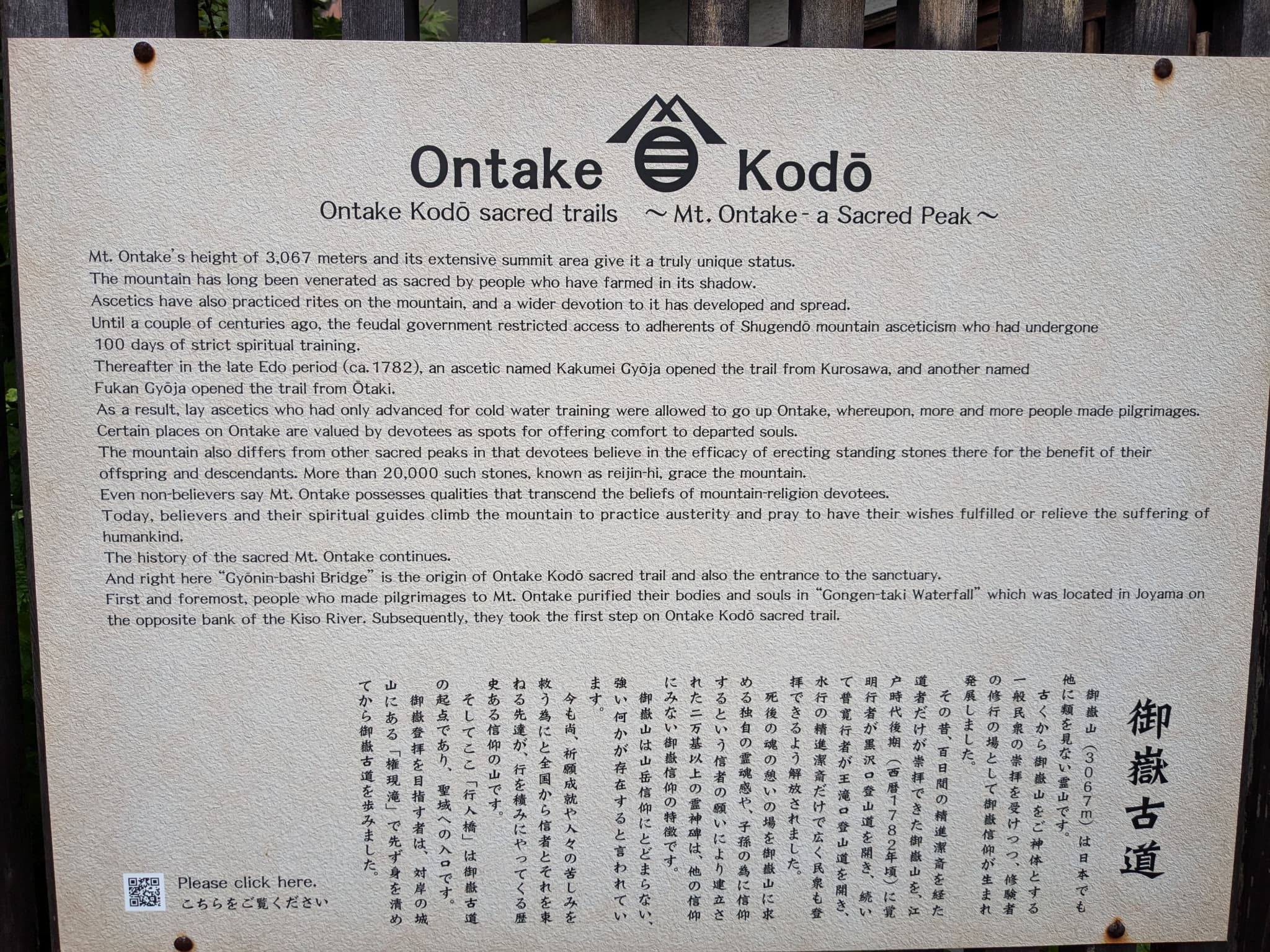
Agematsu-juku

- Nearest Station: JR Chūō Main Line, Agematsu Station
- Condition: The post town retains almost none of its historical atmosphere.
- Walking distance from the station: About a 7-minute walk
While the townscape of the post town is not very evident, there is a scenic spot called “Nezame-no-Toko.”
- Agematsu-juku Area (About a 7-minute walk from Agematsu Station – Google Maps)
https://kiso-hinoki.jp/colibri-wp/tourist/%E4%B8%AD%E5%B1%B1%E9%81%93/ - Nezame-no-Toko (From Agematsu Station – Google Maps)
https://kiso-hinoki.jp/colibri-wp/tourist/nezamenotoko/
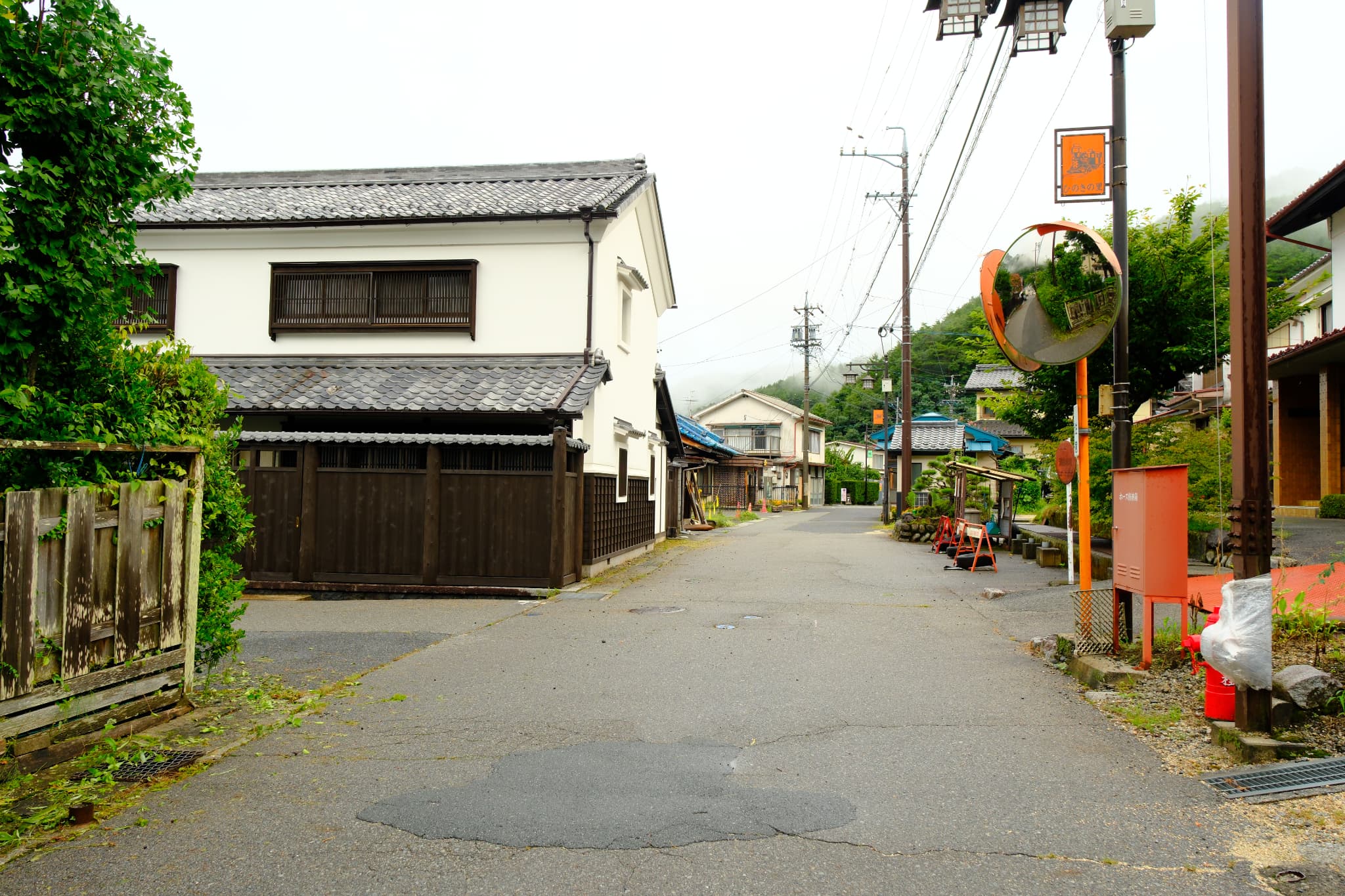

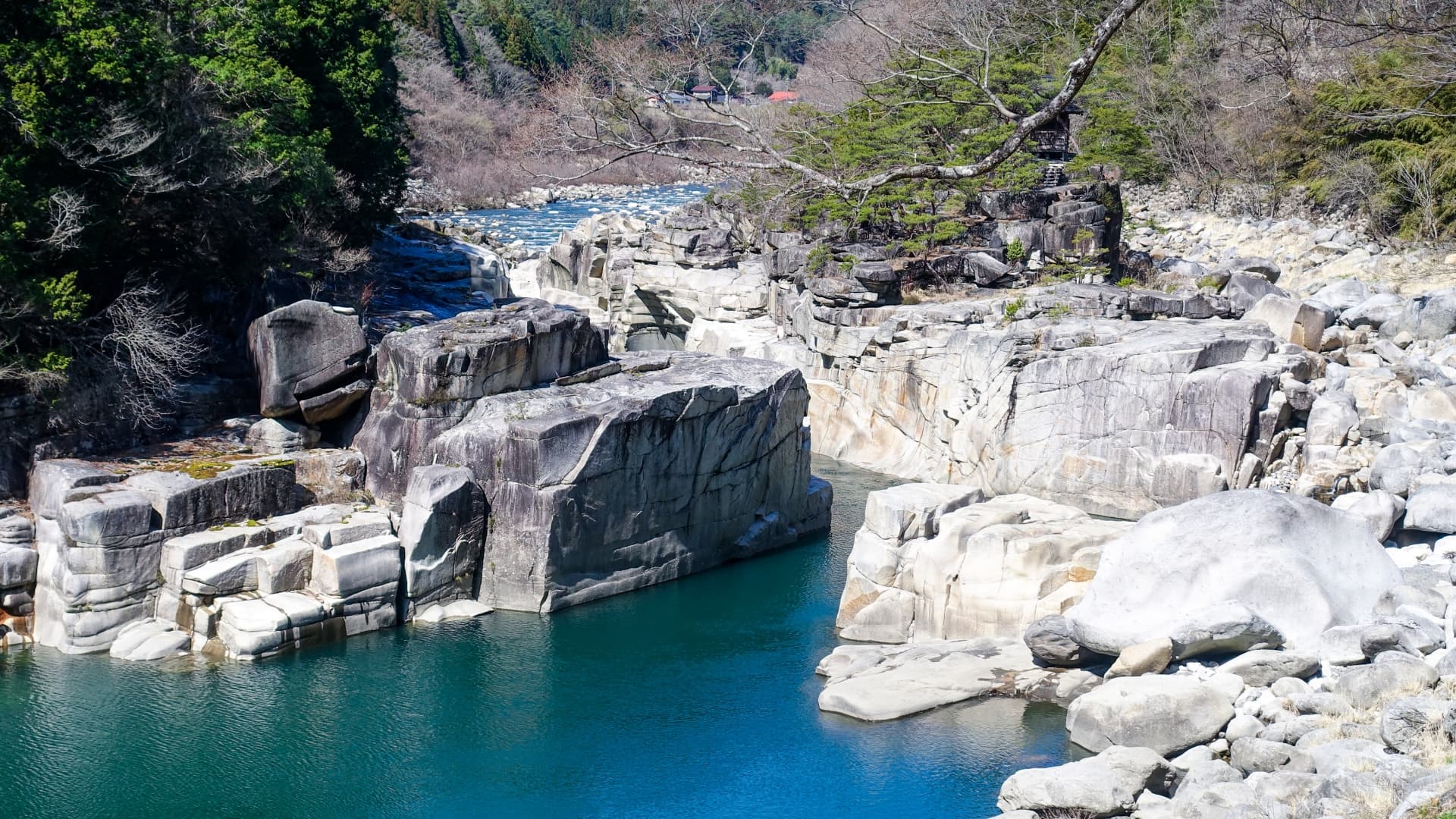
Suhara-juku
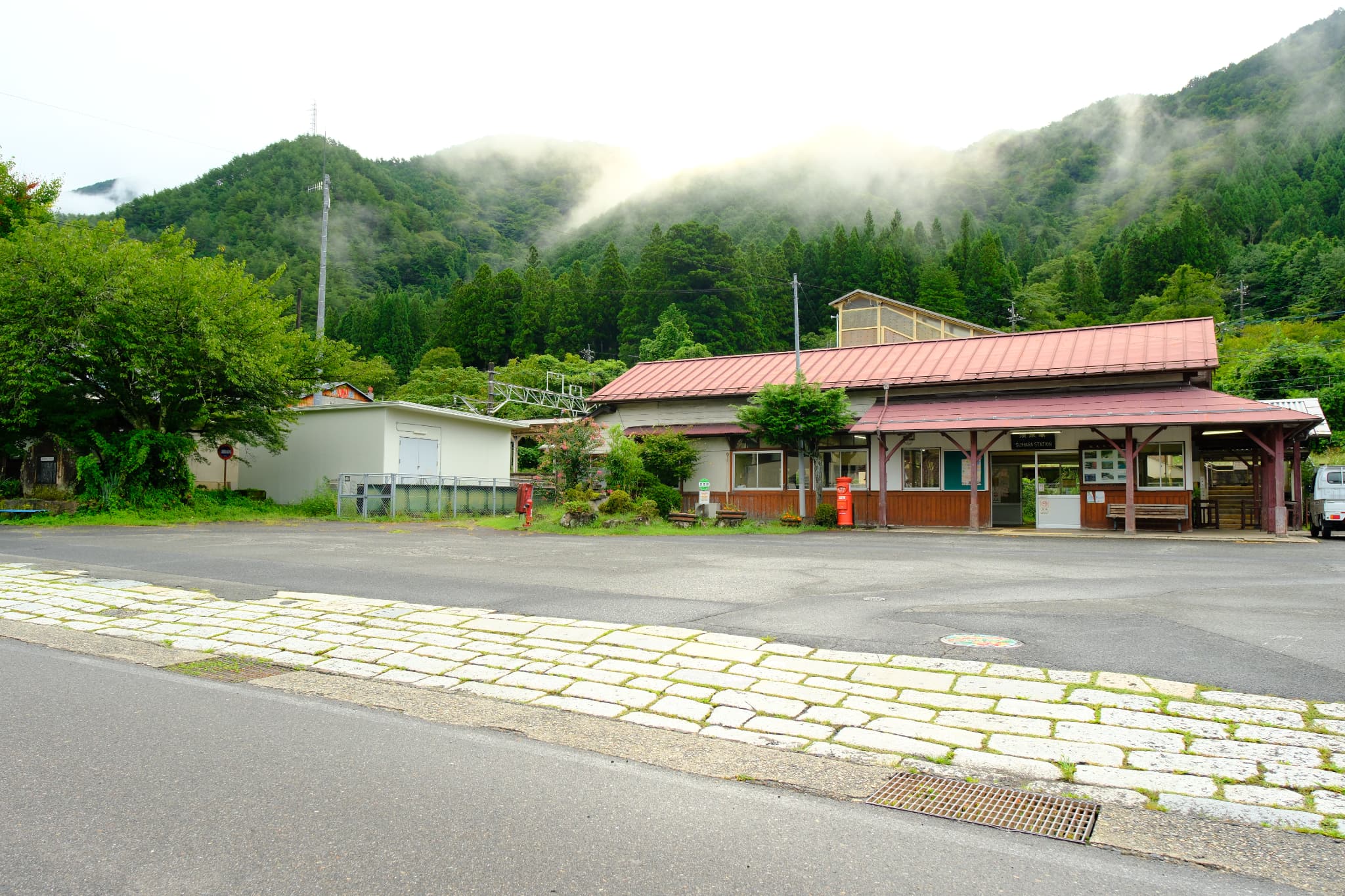
- Nearest Station: JR Chūō Main Line, Subara Station
- Condition: The post town retains some of its historical atmosphere, though not as distinctly as Narai-juku or Fukushima-juku.
- Walking distance from the station: About a 4-minute walk
While not as clearly preserved as Narai-juku or Fukushima-juku, there are still traces of the historical ambiance throughout the area. There is a temple called Jōshō-ji, which is especially beautiful on sunny days when the entrance gate visible from the stairs below is illuminated by sunlight.
- Subara-juku Area (About a 4-minute walk from Subara Station – Google Maps)
https://www.cbr.mlit.go.jp/iikoku/drive/kisoji/suhara.html - Jōshō-ji Temple (About an 8-minute walk from Subara Station – Google Maps)
https://japan-heritage.bunka.go.jp/ja/culturalproperties/result/2029/
The building is registered as an Important Cultural Property.
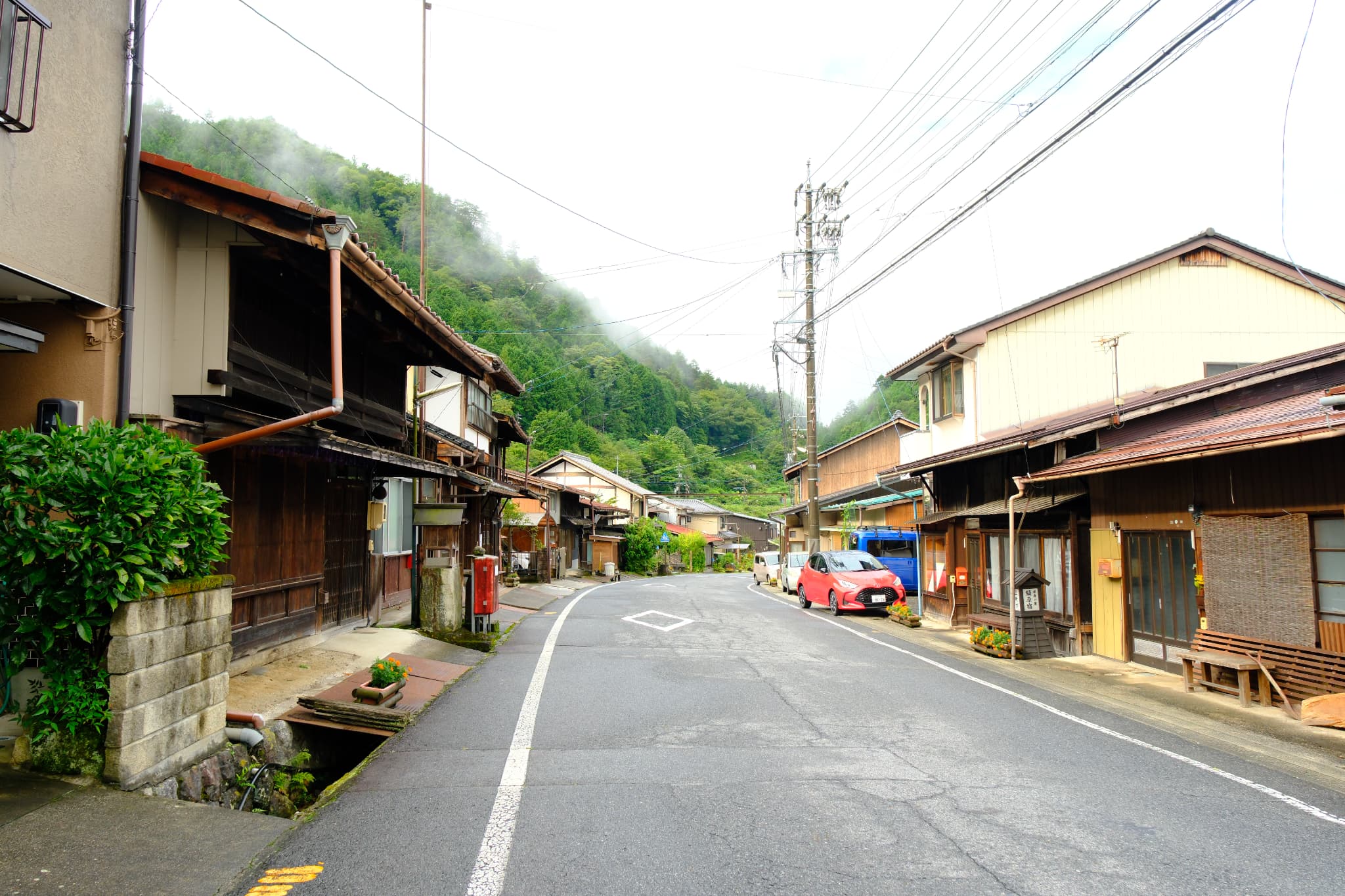
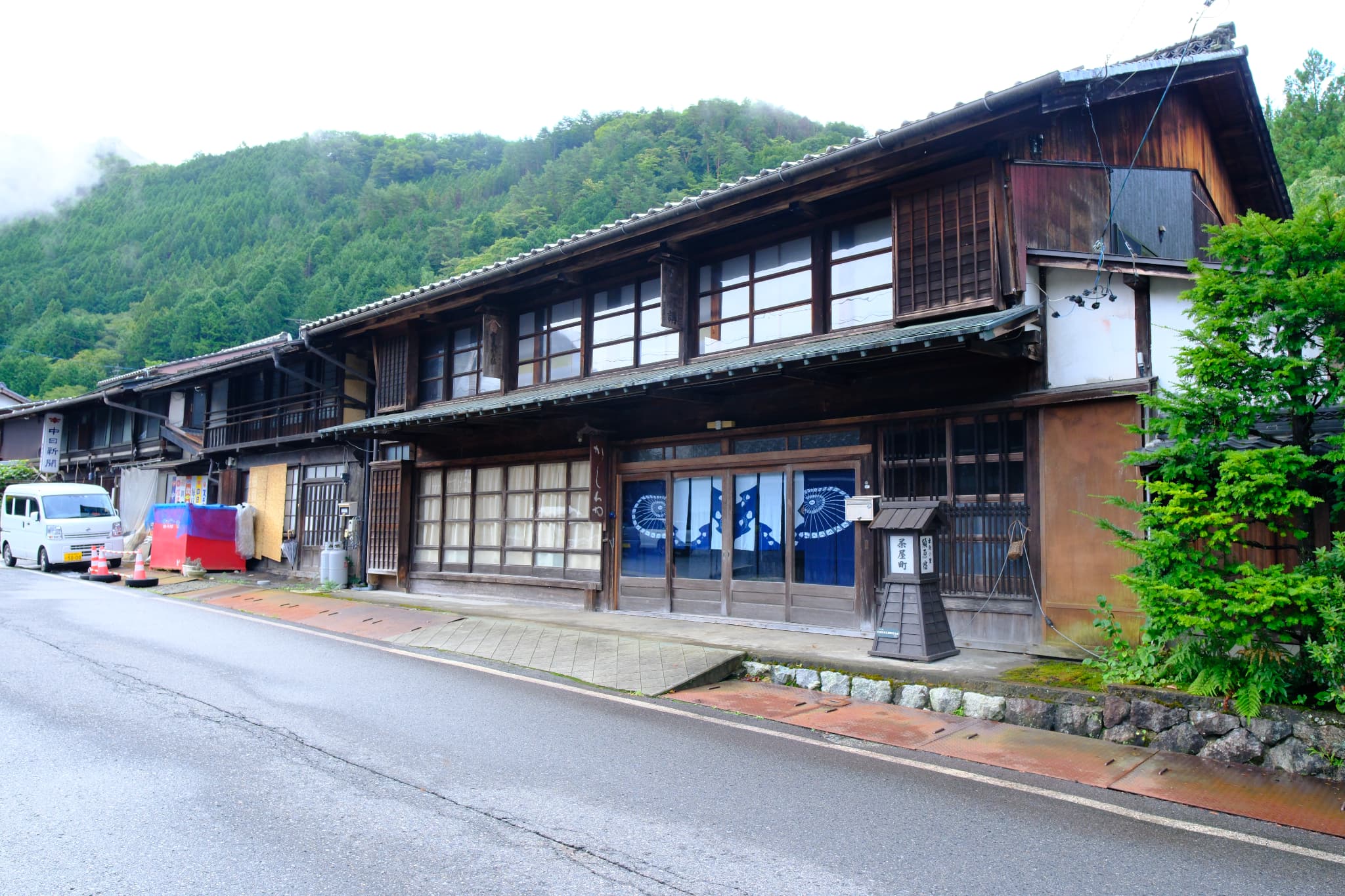
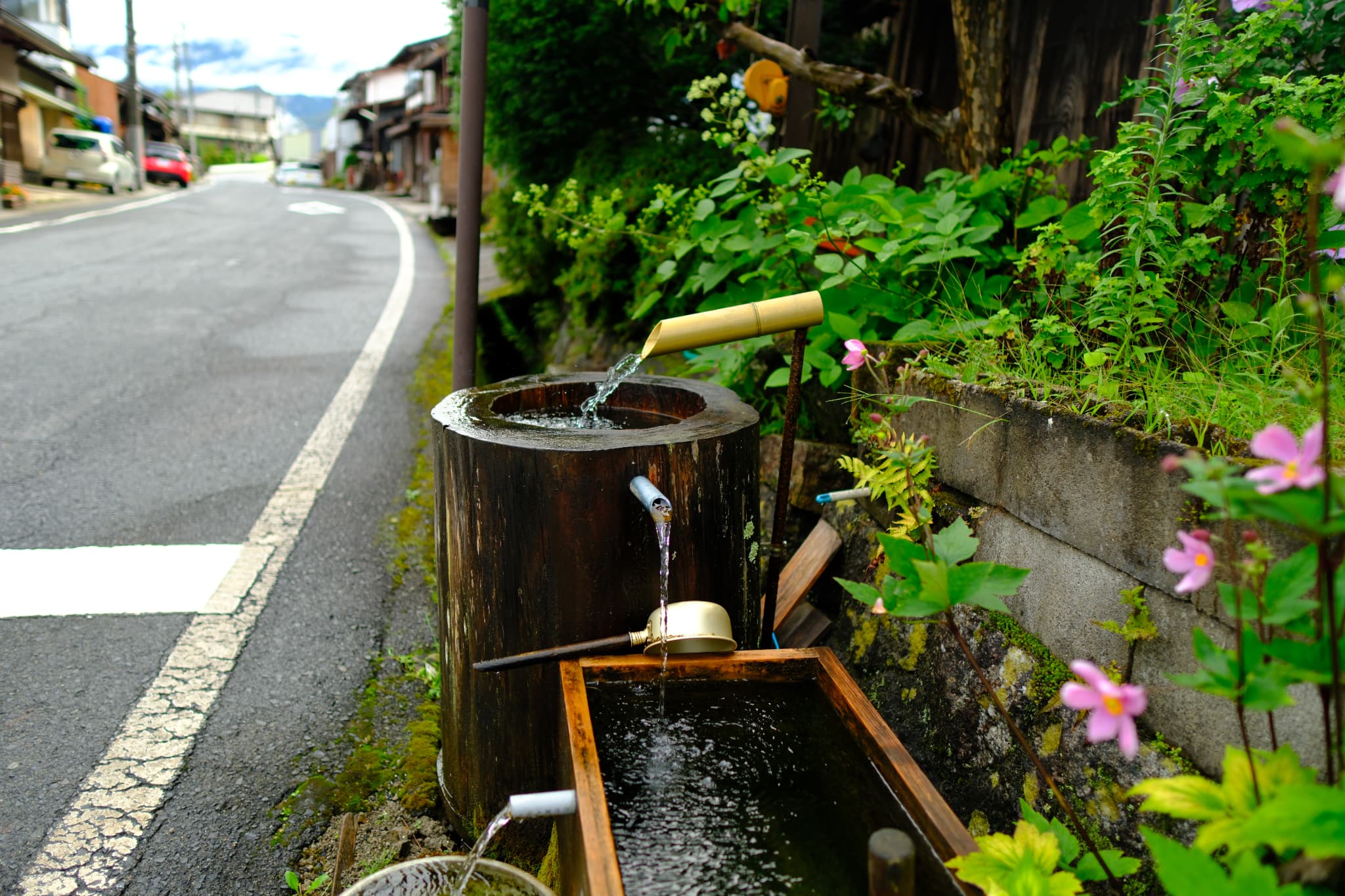
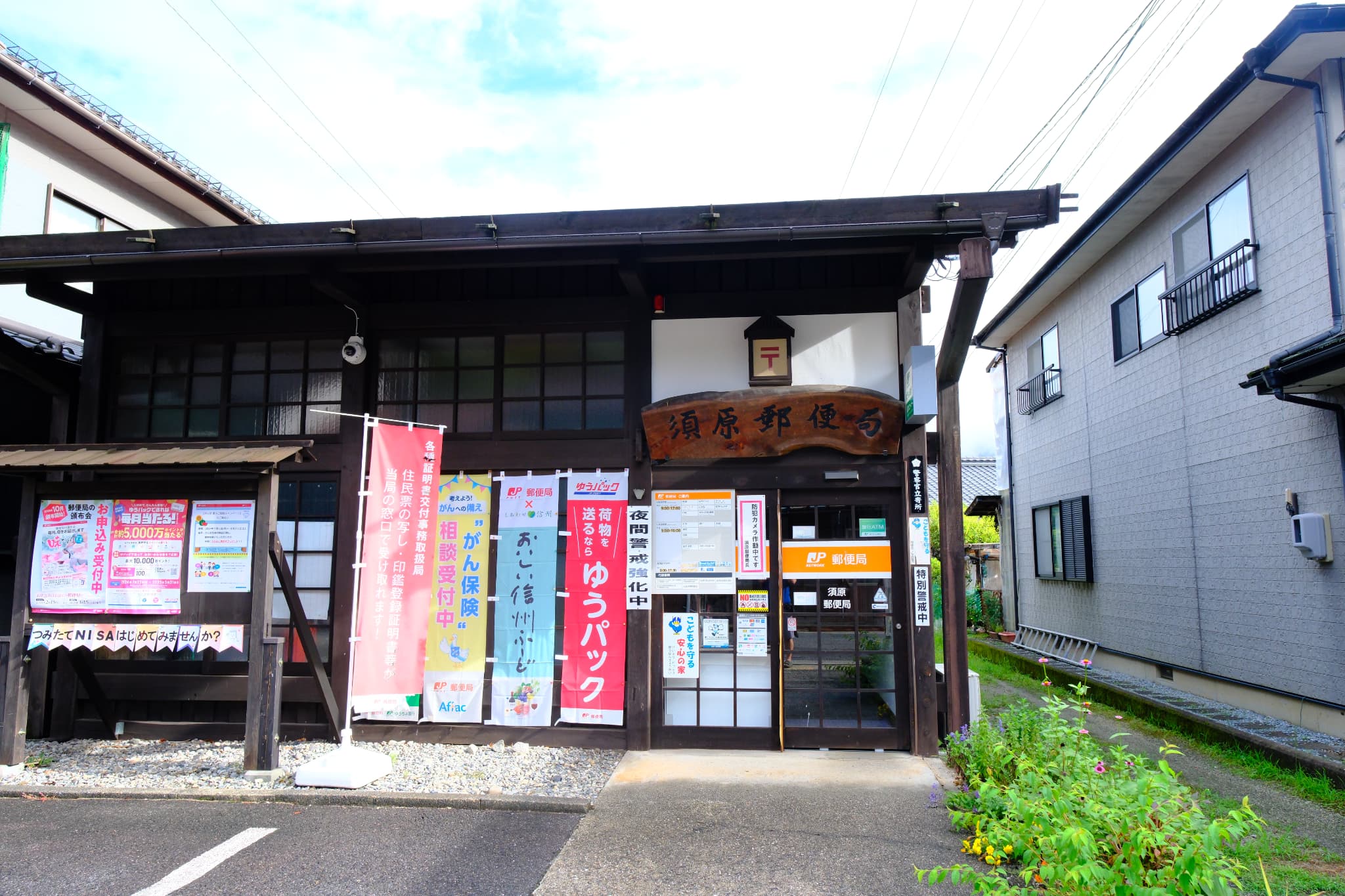
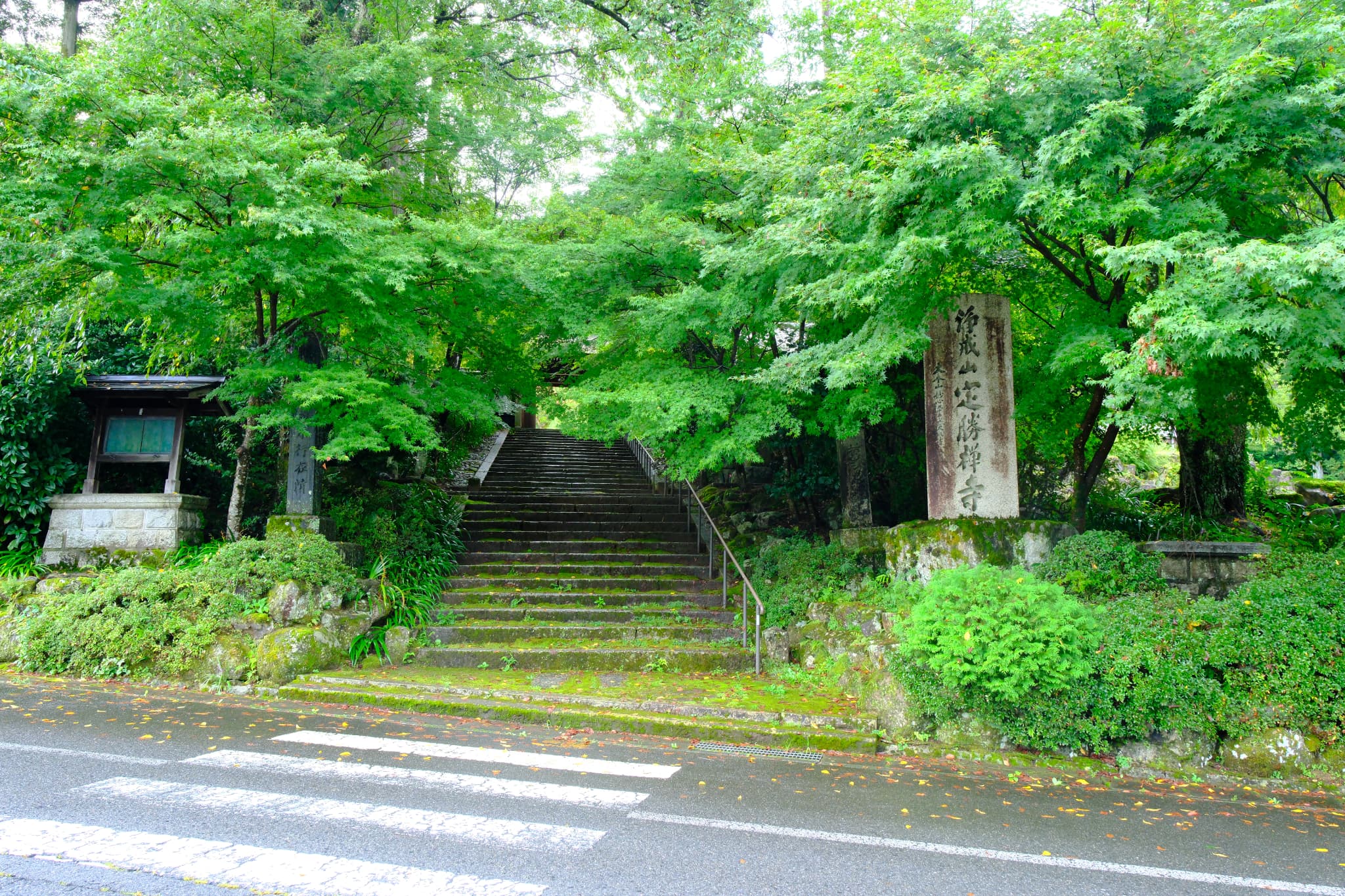
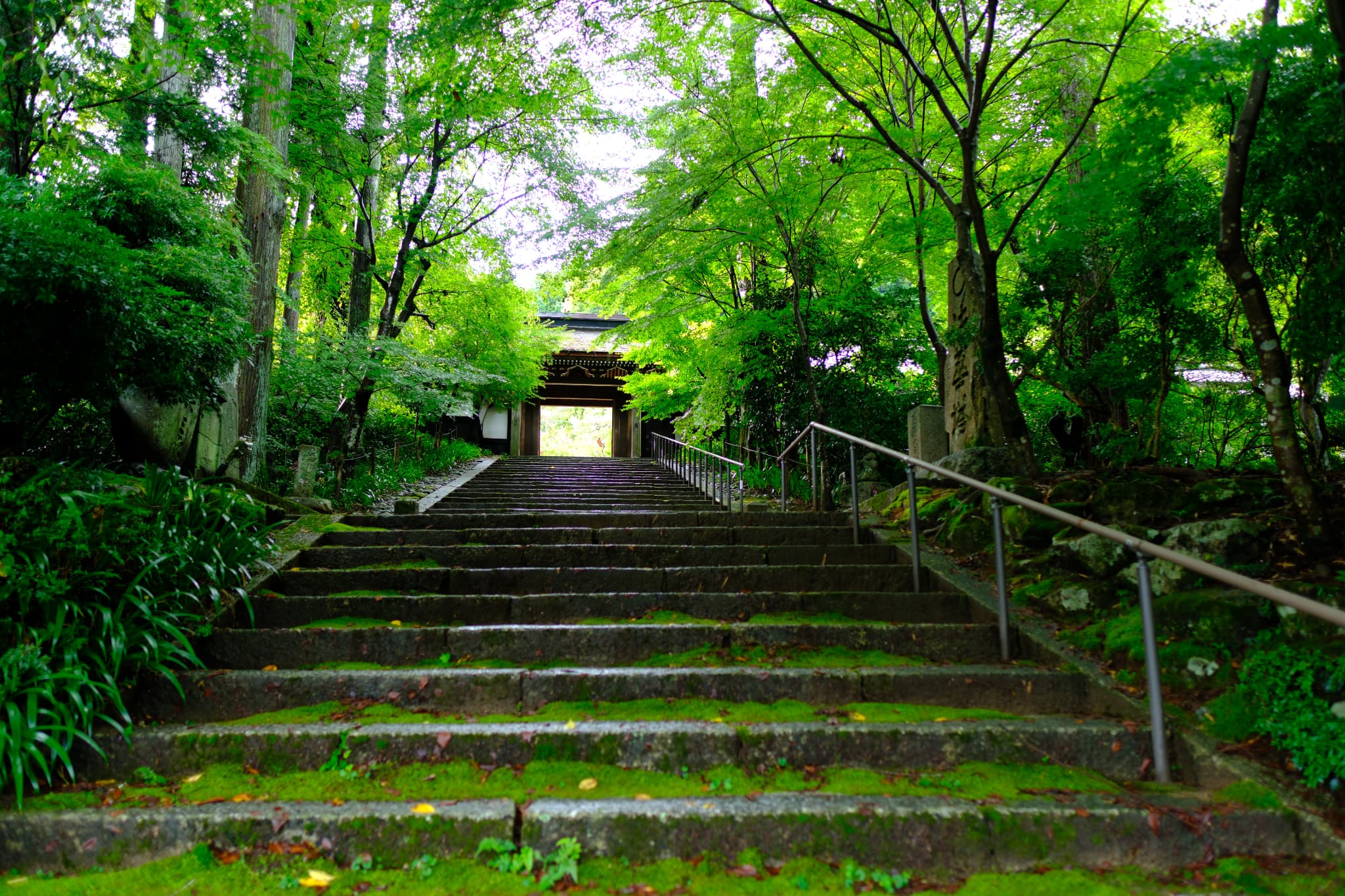
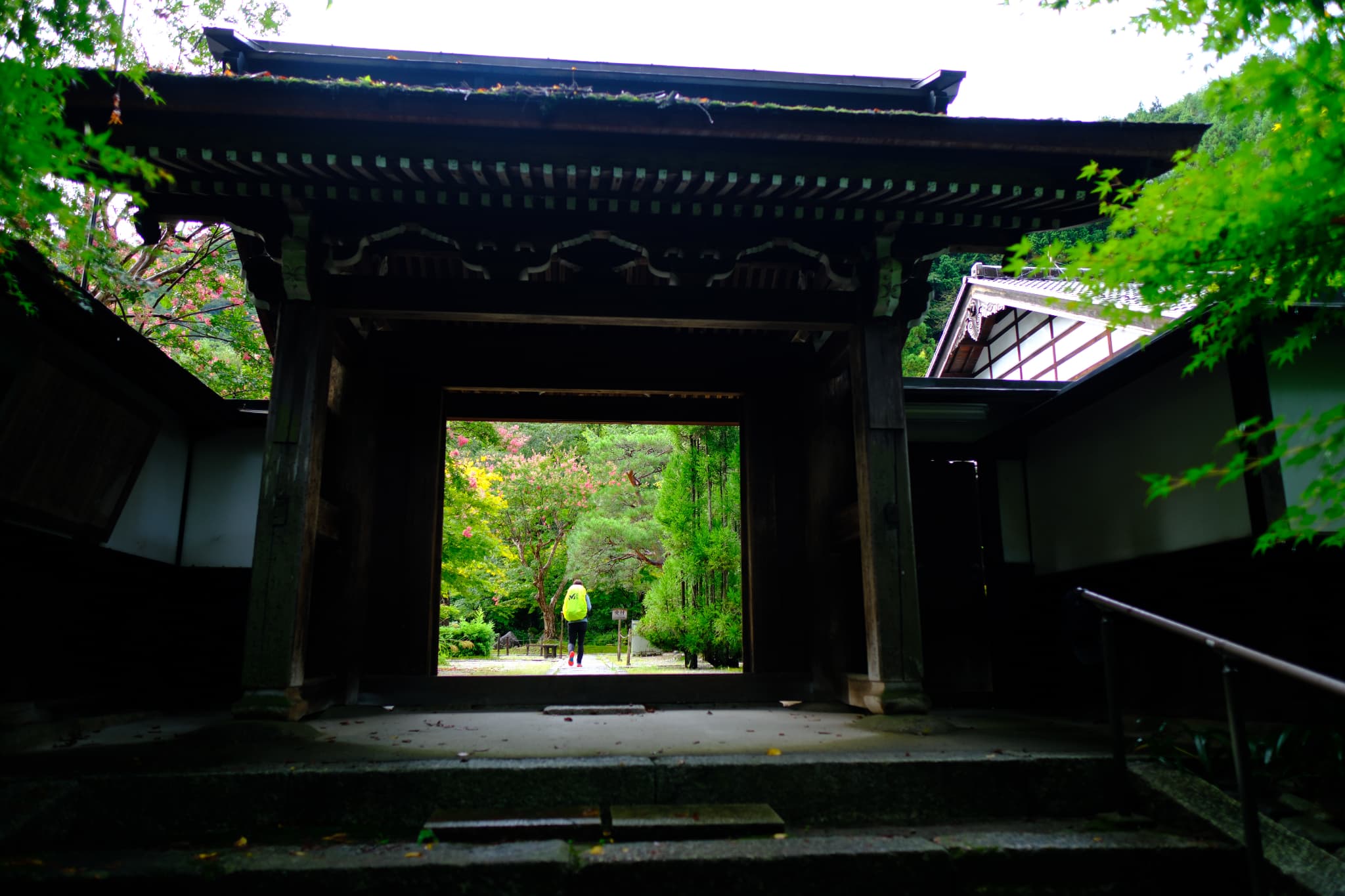
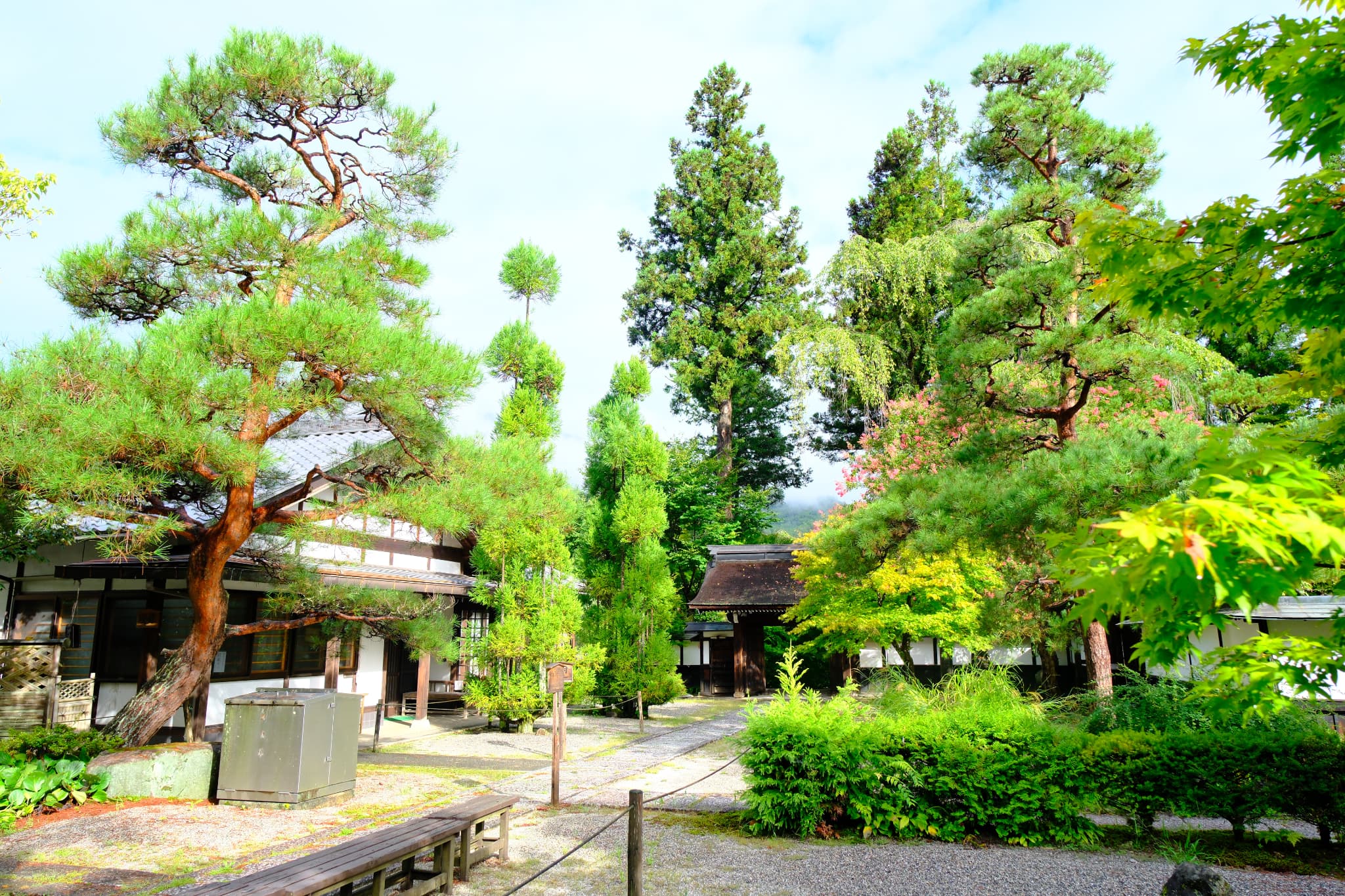
Nojiri-juku
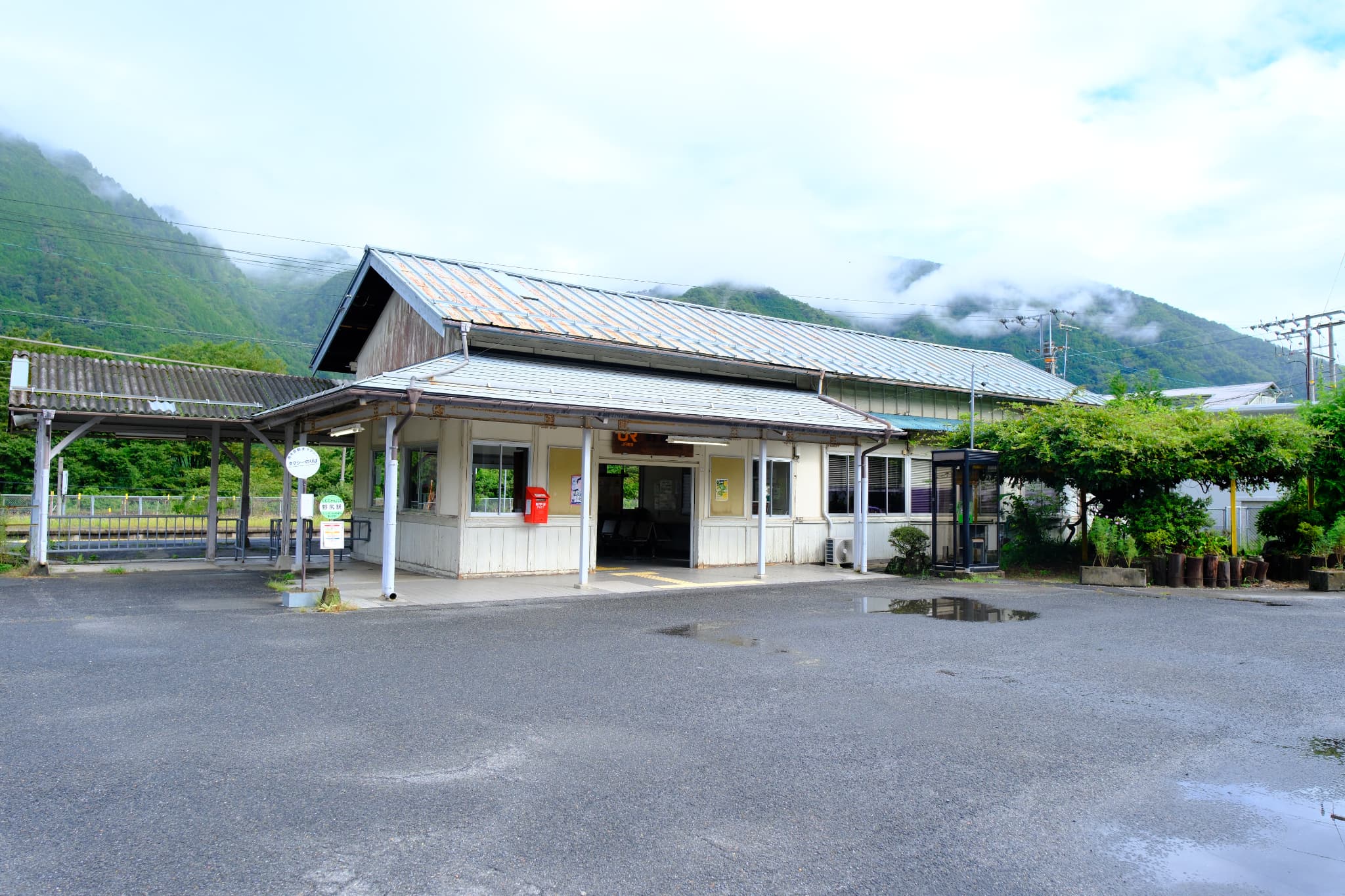
- Nearest Station: JR Chūō Main Line, Nojiri Station
- Condition: The post town retains almost no historical atmosphere.
- Walking distance from the station: About a 3-minute walk
Nojiri-juku has almost no traces of its historical past. However, there is a notable feature called “Shichi-Magari” (Seven Curves), where the road makes large turns. It is said that this was designed to ward off external threats.
While the historical atmosphere is not preserved, Nojiri Station is located in a very scenic area. If you exit the station and walk up the slope to the right (there is only one ticket gate), you will find that the view of the mountains is stunningly beautiful and grand.
- Nojiri-juku (About a 3-minute walk from Nojiri Station – Google Maps)
https://www.vill.okuwa.lg.jp/kanko/miru-asobu/nakasendoshukuba/plays_nojiri.html
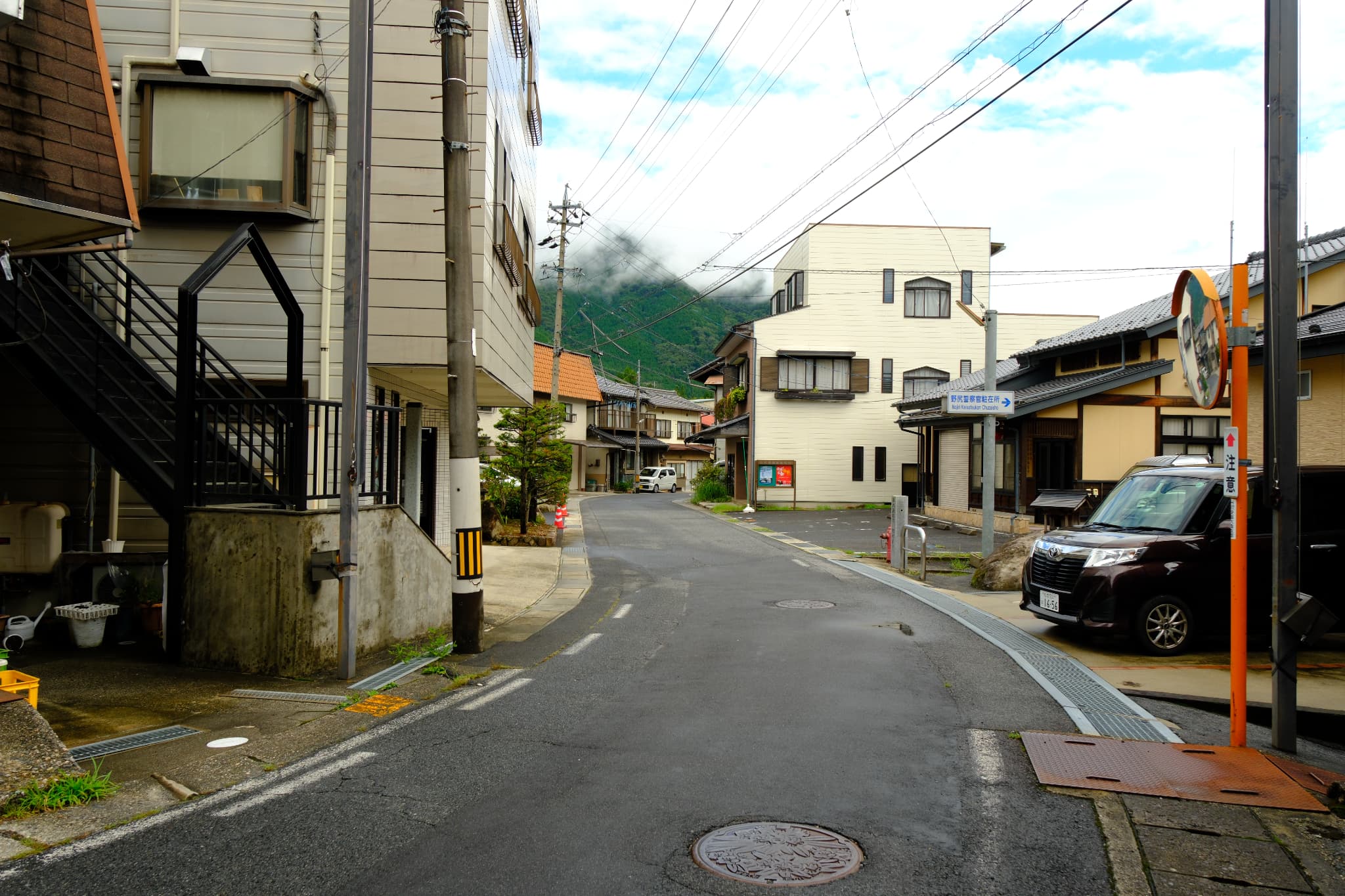

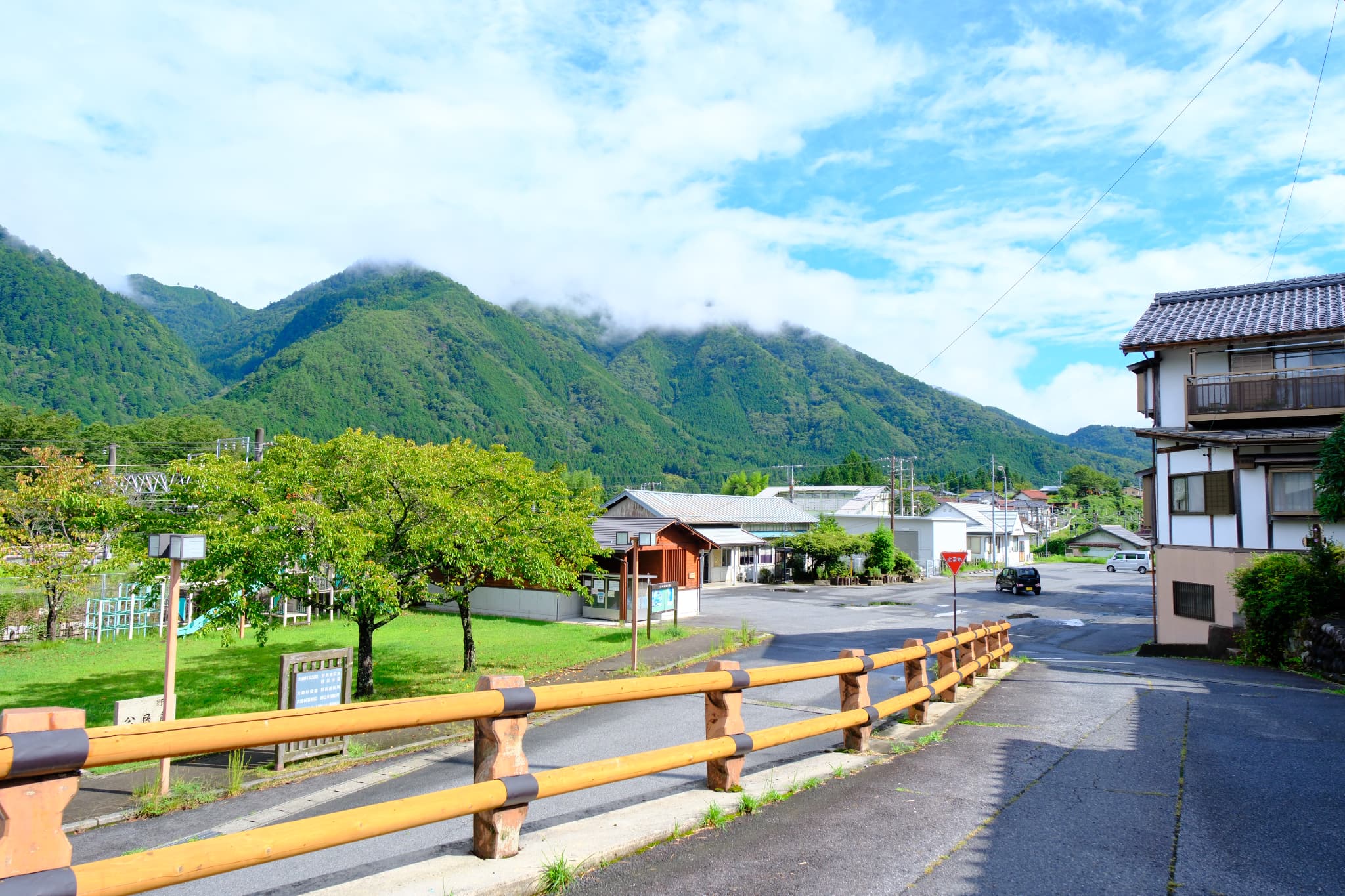
Midono-juku
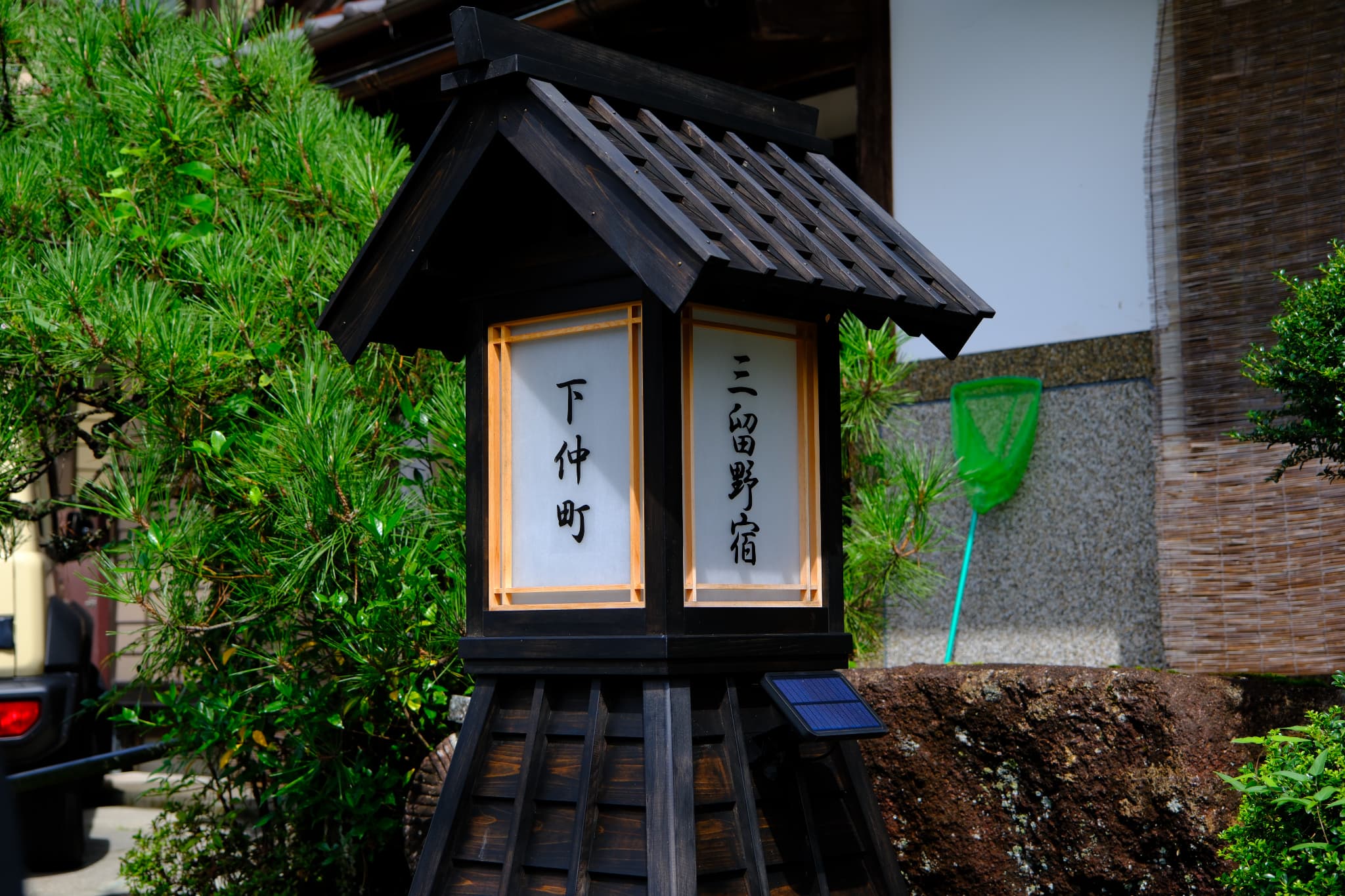
- Nearest Station: JR Chūō Main Line, Minami-Kiso Station
- Condition: Almost no traces of the post town remain.
- Walking distance from the station: About a 19-minute walk
Midorino-juku was largely destroyed by a fire in 1881.
- Midorino-juku Honjin Ruins (About a 19-minute walk from Minami-Kiso on Google Maps)
https://www.cbr.mlit.go.jp/iikoku/drive/kisoji/midono.html - Momoseki Bridge (About a 5-minute walk from Minami-Kiso on Google Maps)
https://nagiso.jp/topics/momosuke-bridge/
The bridge had deteriorated and was temporarily closed, but it was restored to its original state through major repairs from 1993 to 1996.
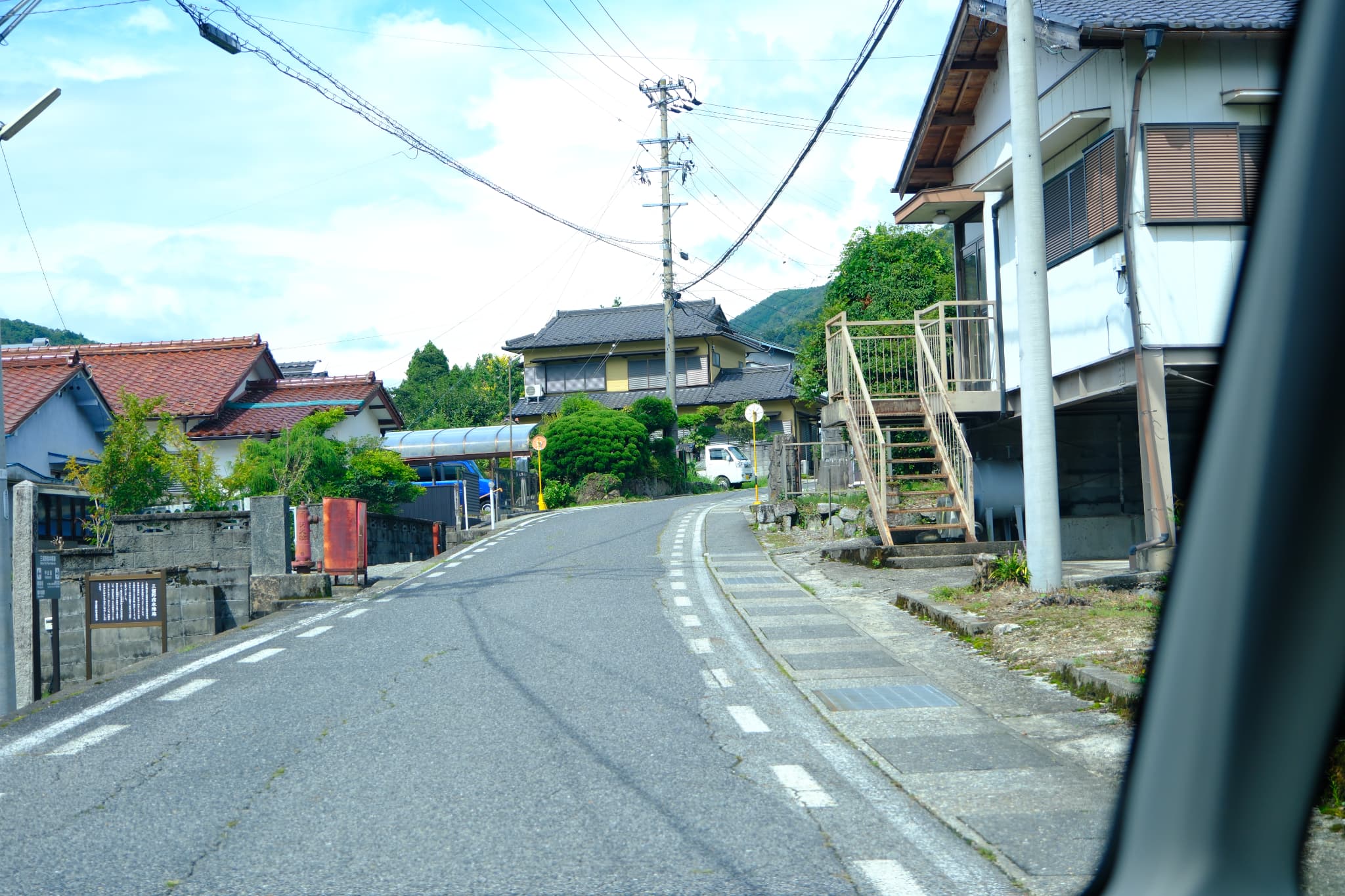
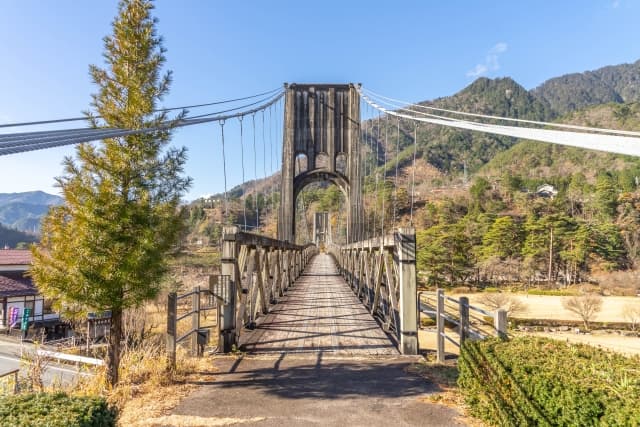
Tsumago-juku
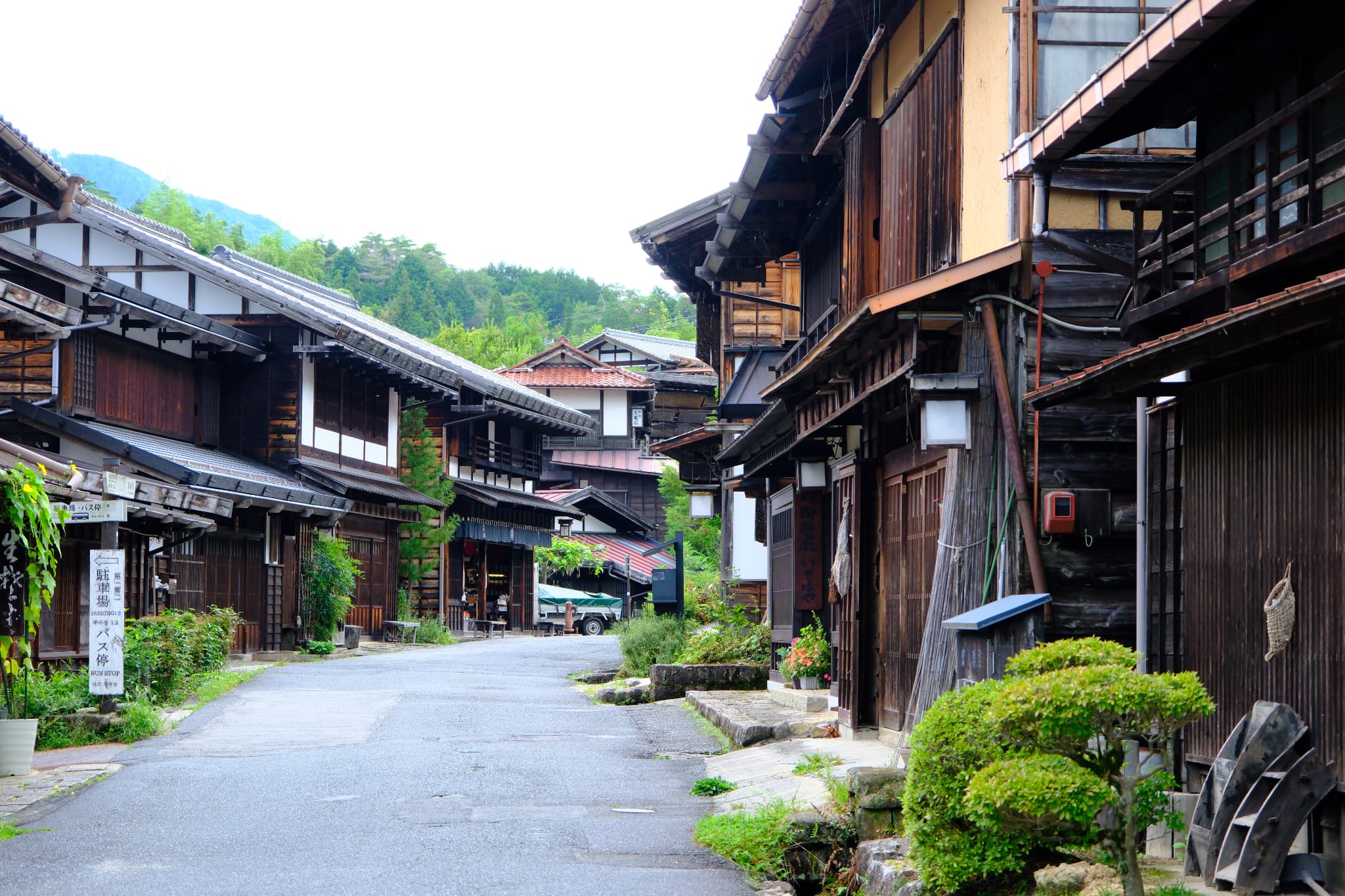
Nearest Station: JR Chūō Main Line, Nagiso Station
Condition: The historical ambiance of the post town is well-preserved.
Walking Distance from Station: Approximately 40 minutes
Since it takes about 40 minutes to walk from the station, taking a taxi or bus is recommended. If you choose to take the bus, alight at the “Tsumago” or “Omata-bashi” bus stops.
Access Information (English explanations available for bus riding)
Note: Buses from Nagiso Station arrive at either the “Magome Line” or “Hokujin Line” stops at Tsumago or Omata-bashi.
If you are driving, there is a parking lot available. Parking is paid only, costing 500 yen per visit.
Tsumago-juku is one of the famous post towns along the Samurai Road. It is beautifully preserved and retains much of its historical charm. If you’re curious about its beauty, be sure to check out the photos.
The area features dining options, souvenir shops, and cafes. The site is quite extensive, so take your time to explore and find your favorite spots.
- Tsumago-juku (Walking from Nagiso Station: 40 minutes, Taxi: 7 minutes, Bus: 7–10 minutes – Google Maps)
https://tsumago.jp/
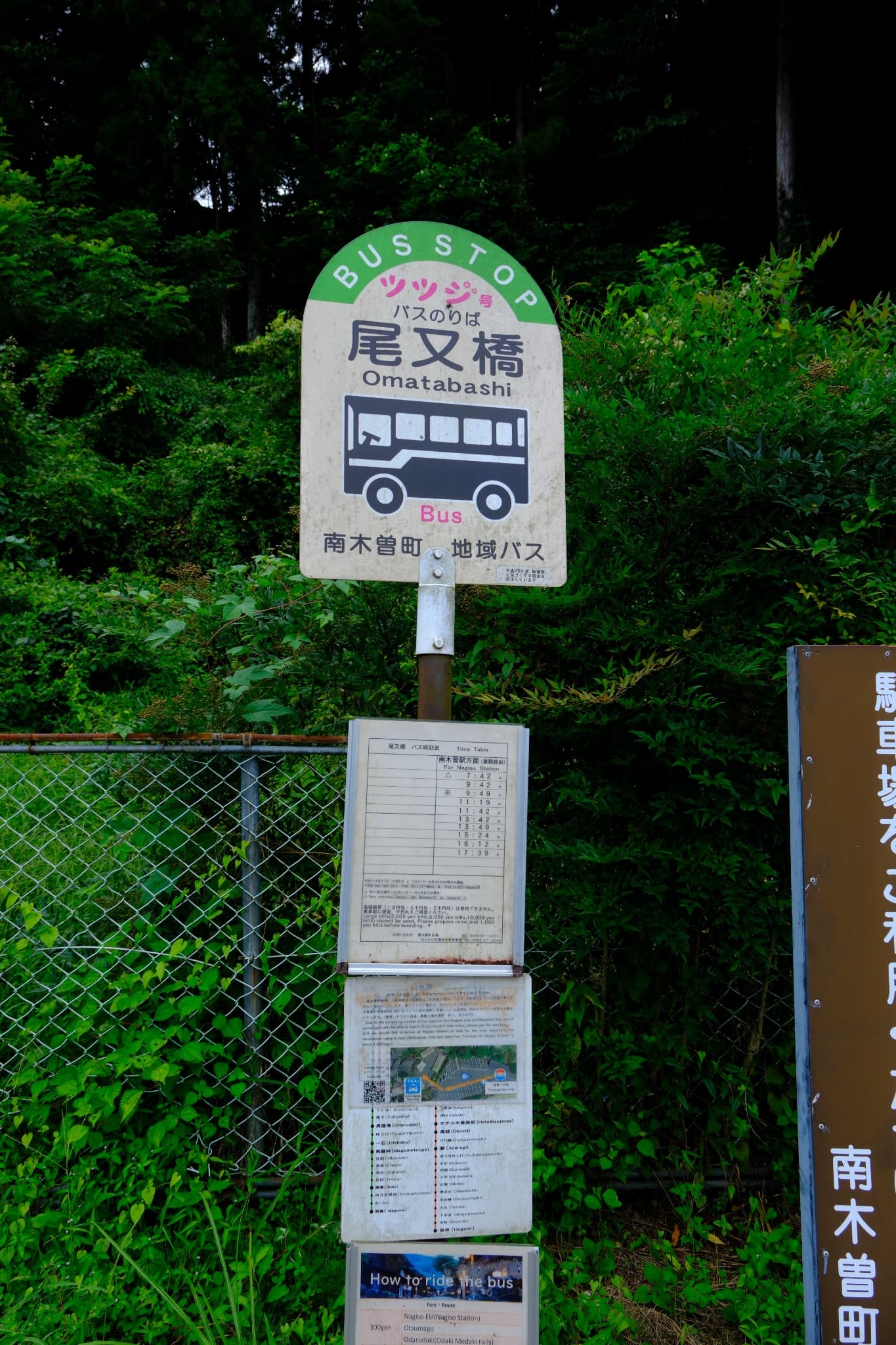
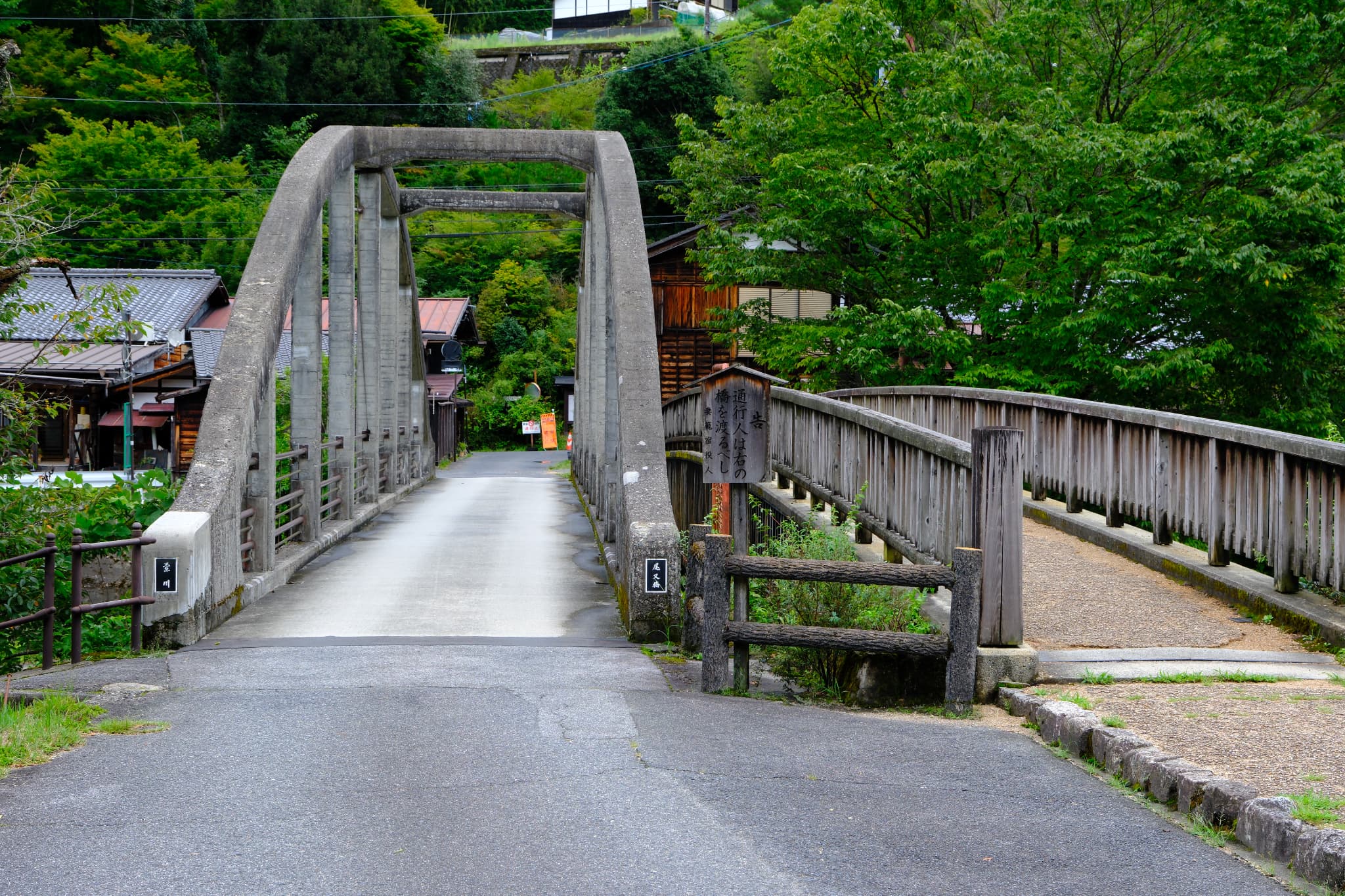
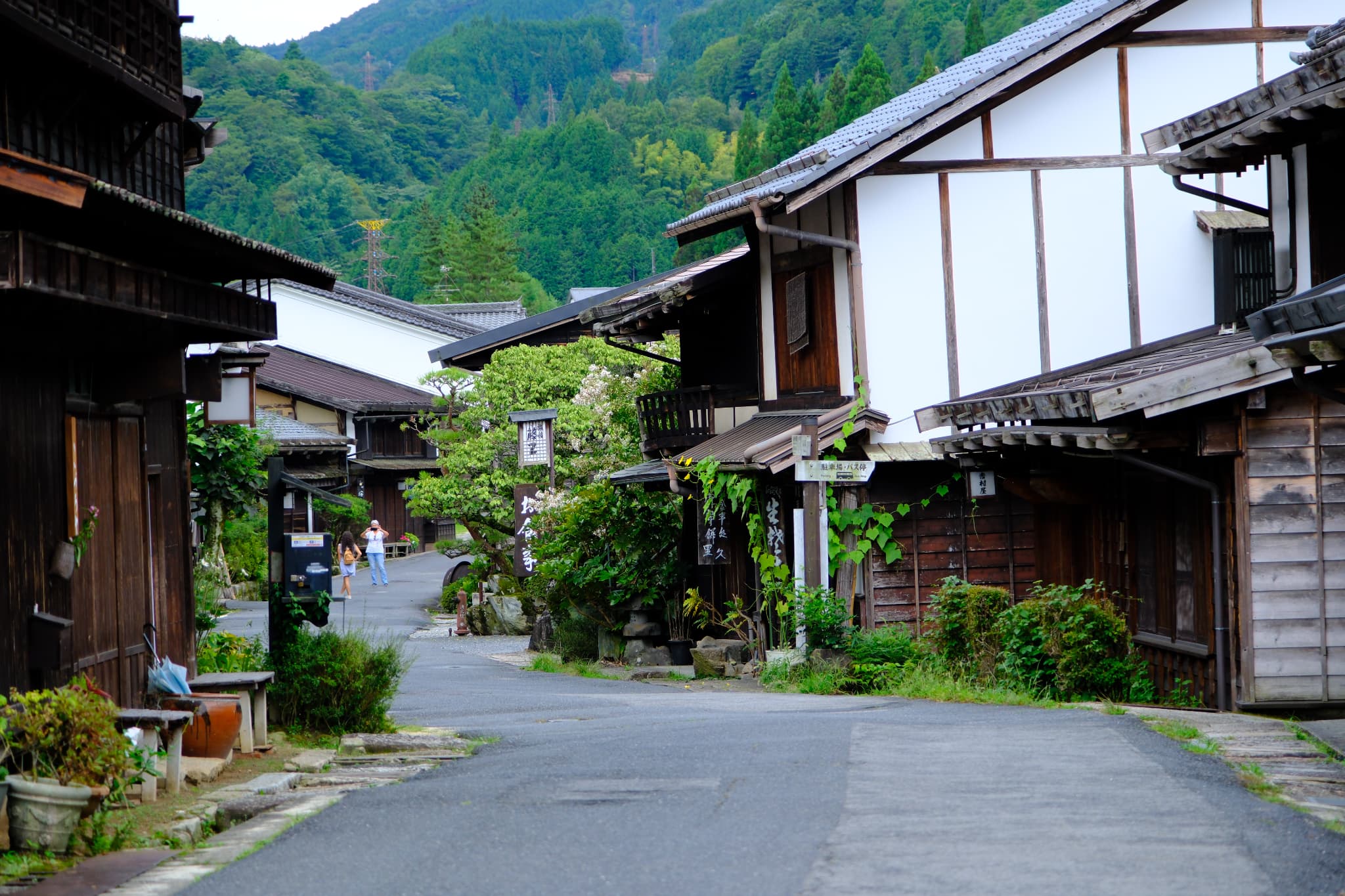
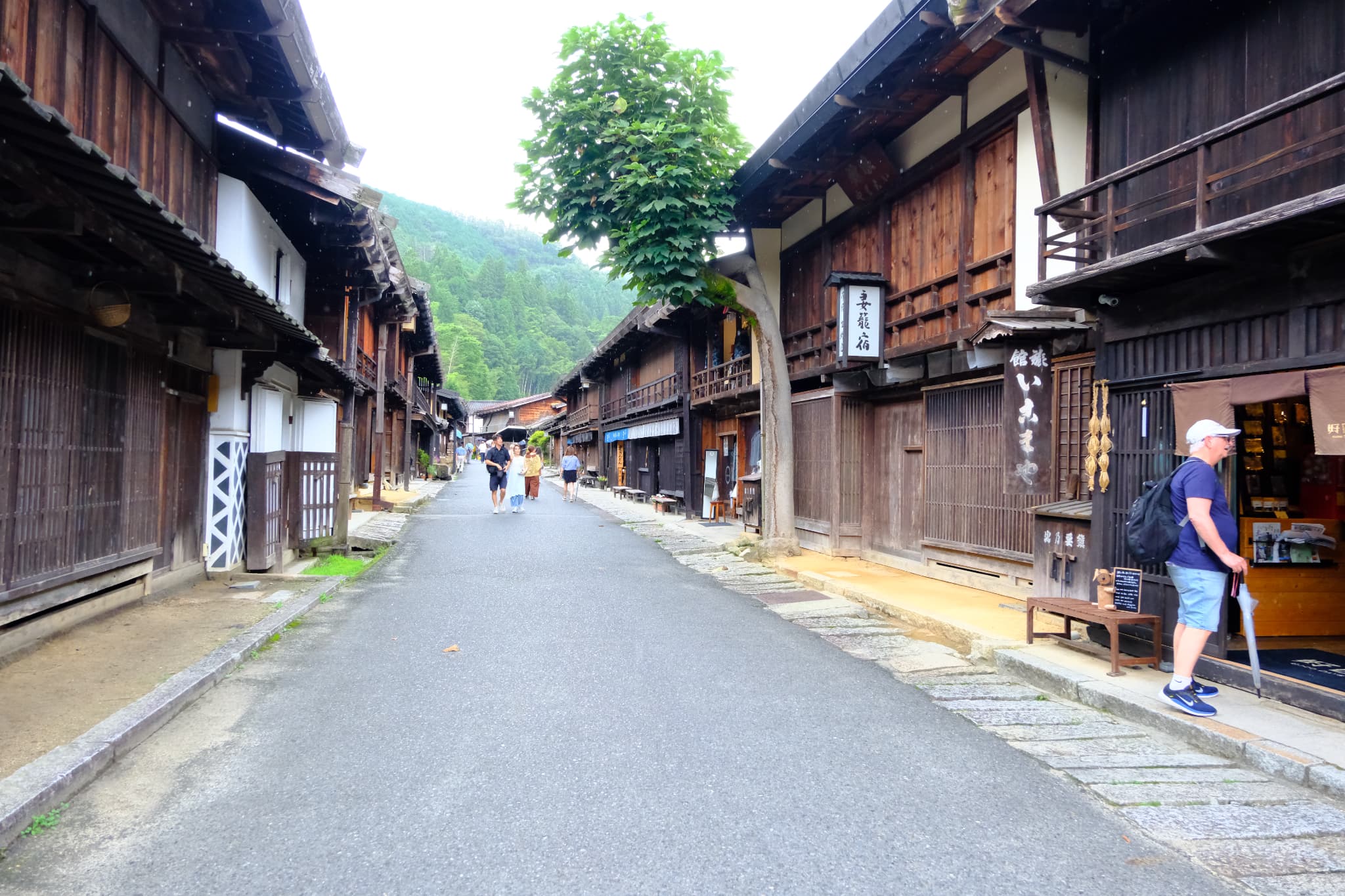
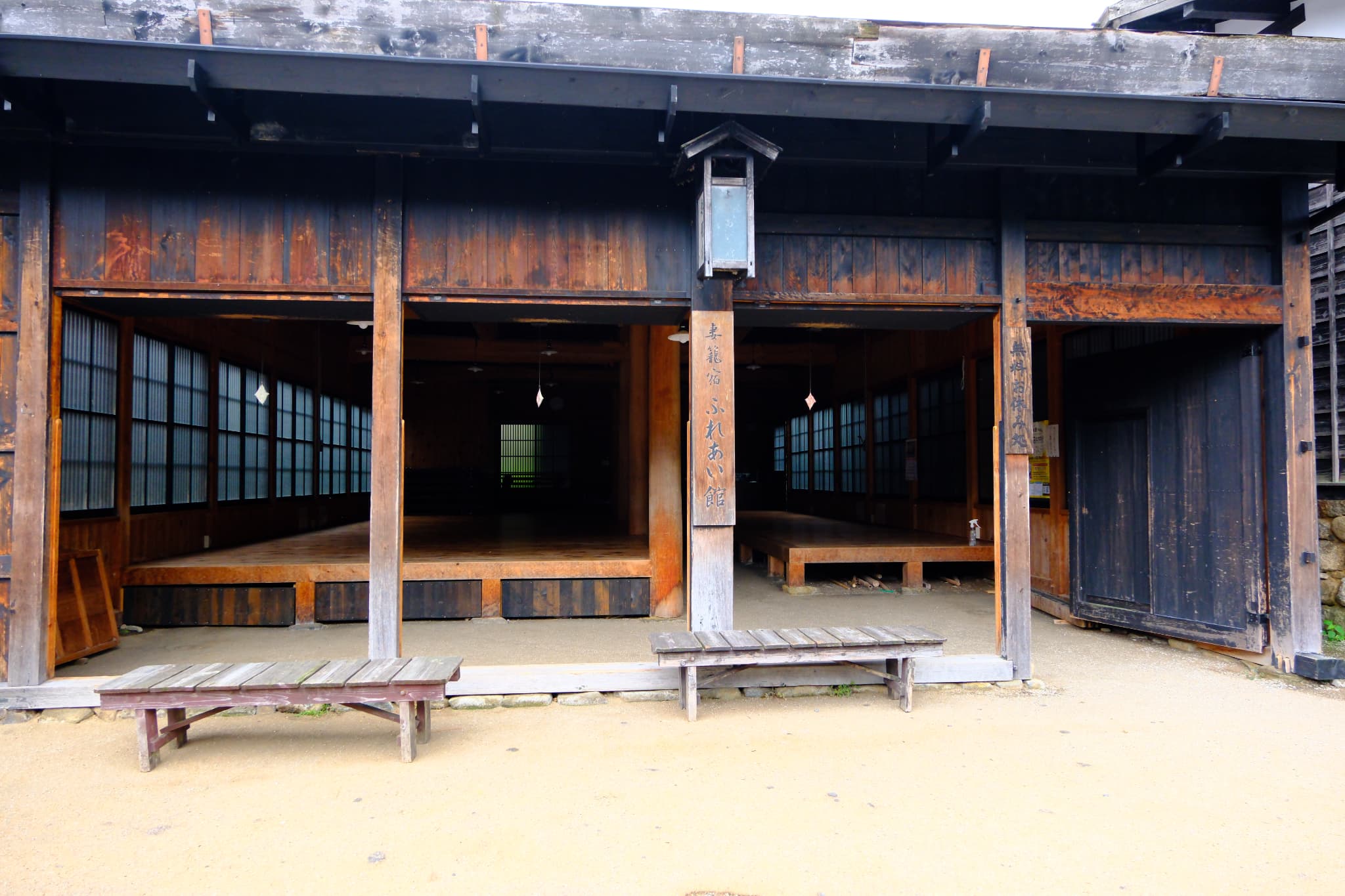
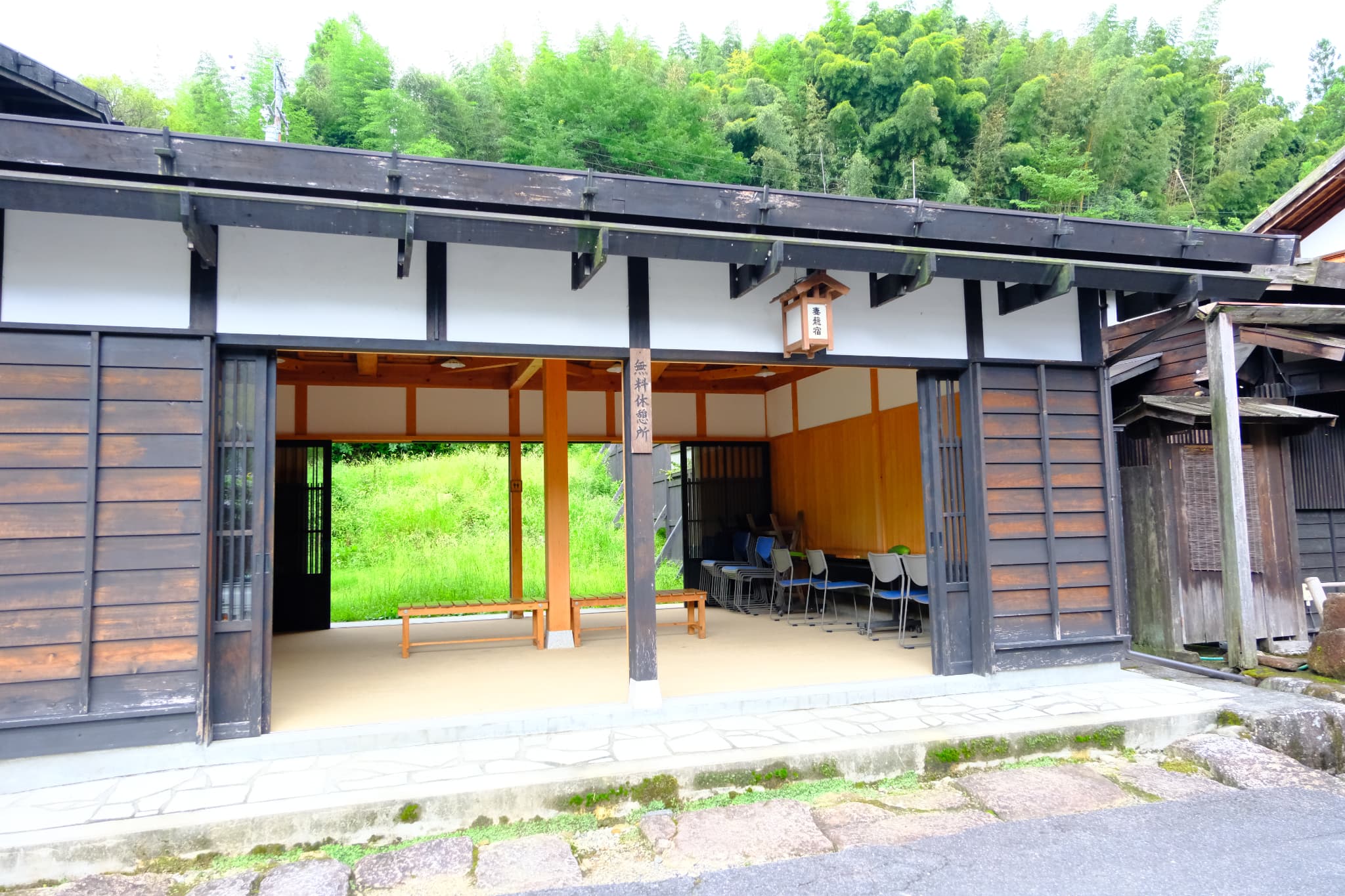
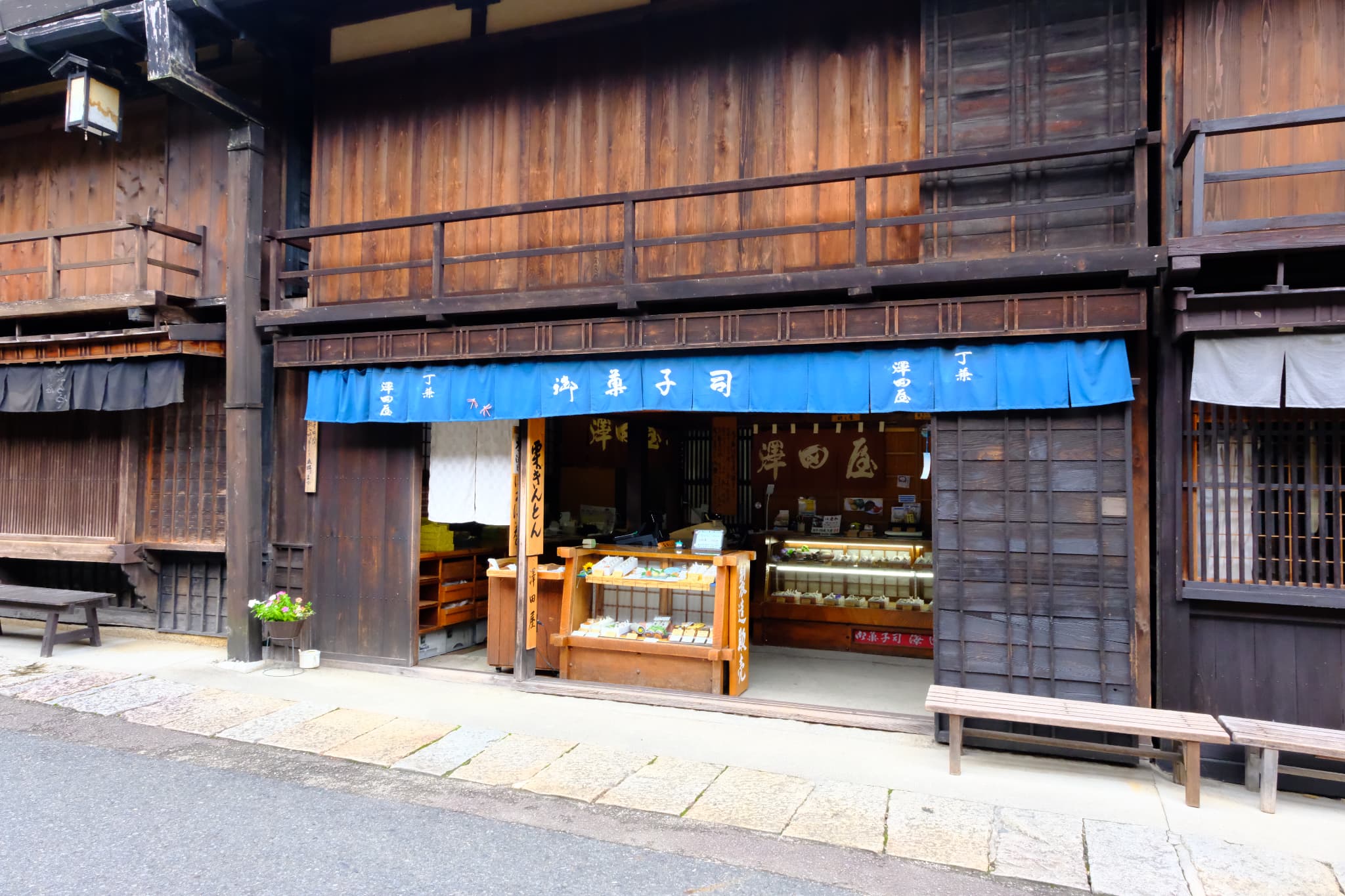
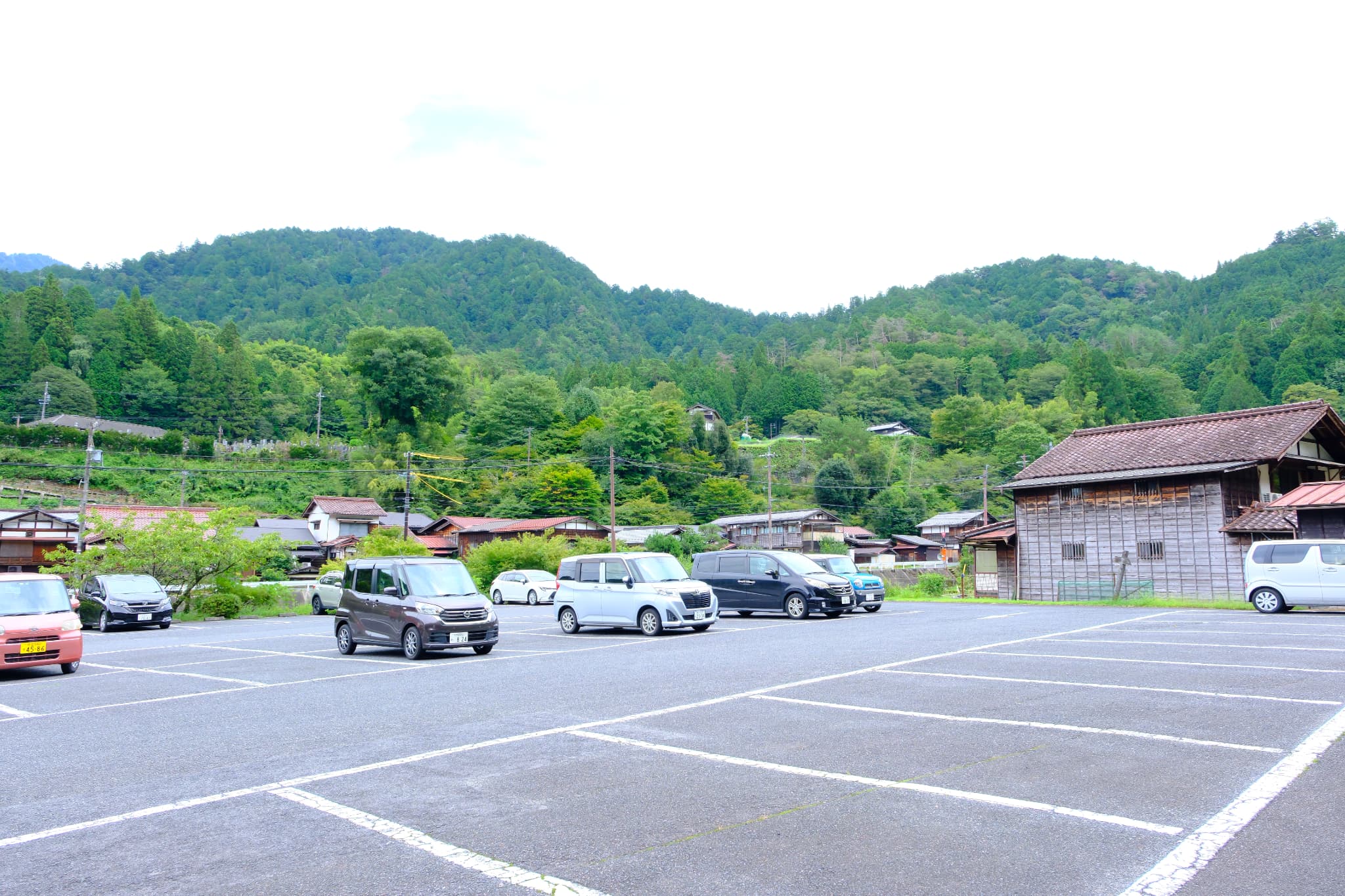
Magome-juku
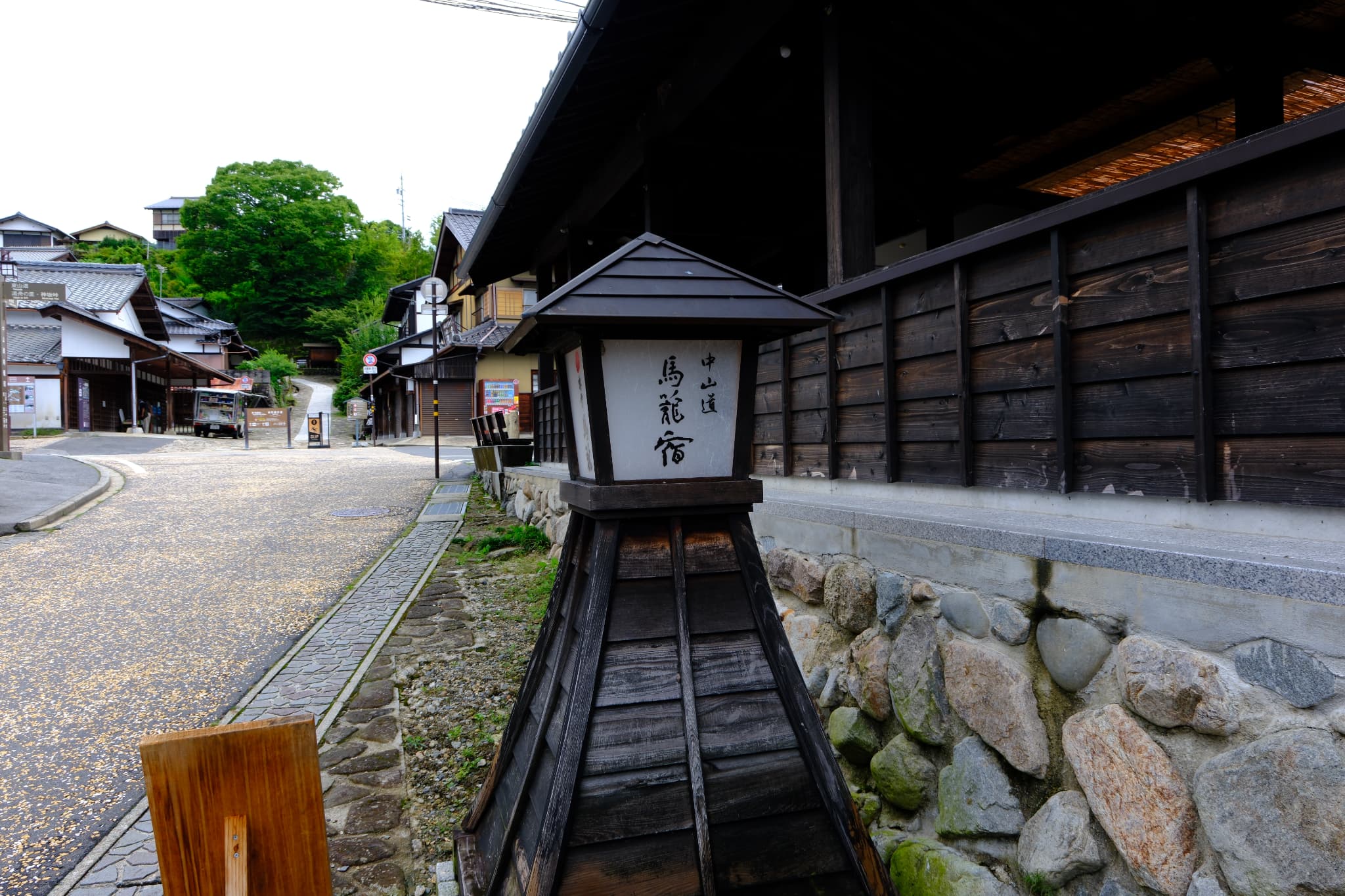
Nearest Stations: JR Chūō Main Line, Nagiso Station or Nakatsugawa Station
Condition: The atmosphere of the old post town is still strongly preserved.
Walking Distance from the Station: It takes about 2 hours and 30 minutes on foot, so it’s better to take a bus.
Access Information
From Nagiso Station, it takes about 35 minutes on the Magome Line. The bus stop for disembarking is “Magome”. (Note: The Hoshin Line does not go to Magome-juku, so be careful.)
From Nakatsugawa Station, it takes about 25 minutes on the Magome Line. The bus stop for disembarking is “Magome”. The bus stop at Nakatsugawa Station is number 3.
Magome-juku is the southernmost post town on the Kiso Road. While Tsumago-juku is known for its Samurai Road, the path connecting Magome-juku to Tsumago-juku is also referred to as Samurai Road internationally.
When the filming team visited, about 90% (or more) of the visitors were foreign tourists, especially from Korea. It seems that this area is not very well known to Japanese people.
Regarding the Samurai Road, you can start from either Tsumago-juku or Magome-juku, but the popular route is from Magome-juku to Tsumago-juku.
Magome-juku is unique compared to other post towns as it is located on a slope. The picturesque views of the countryside, including rice fields and mountains from the high ground, evoke a sense of excitement, making you think about how people in the past must have felt seeing these views. It truly represents Japan’s rural landscape!
- Magome-juku (It is not impossible to walk, but taking the bus is recommended. – Google Maps)
https://kiso-magome.com/access
Note: If you want to travel by bus between Tsumago-juku and Magome-juku, there are buses available, so no worries! Use the Magome Line bus to get to either Tsumago-juku or Magome-juku. Be cautious as the Hoshin Line does not go to these destinations.
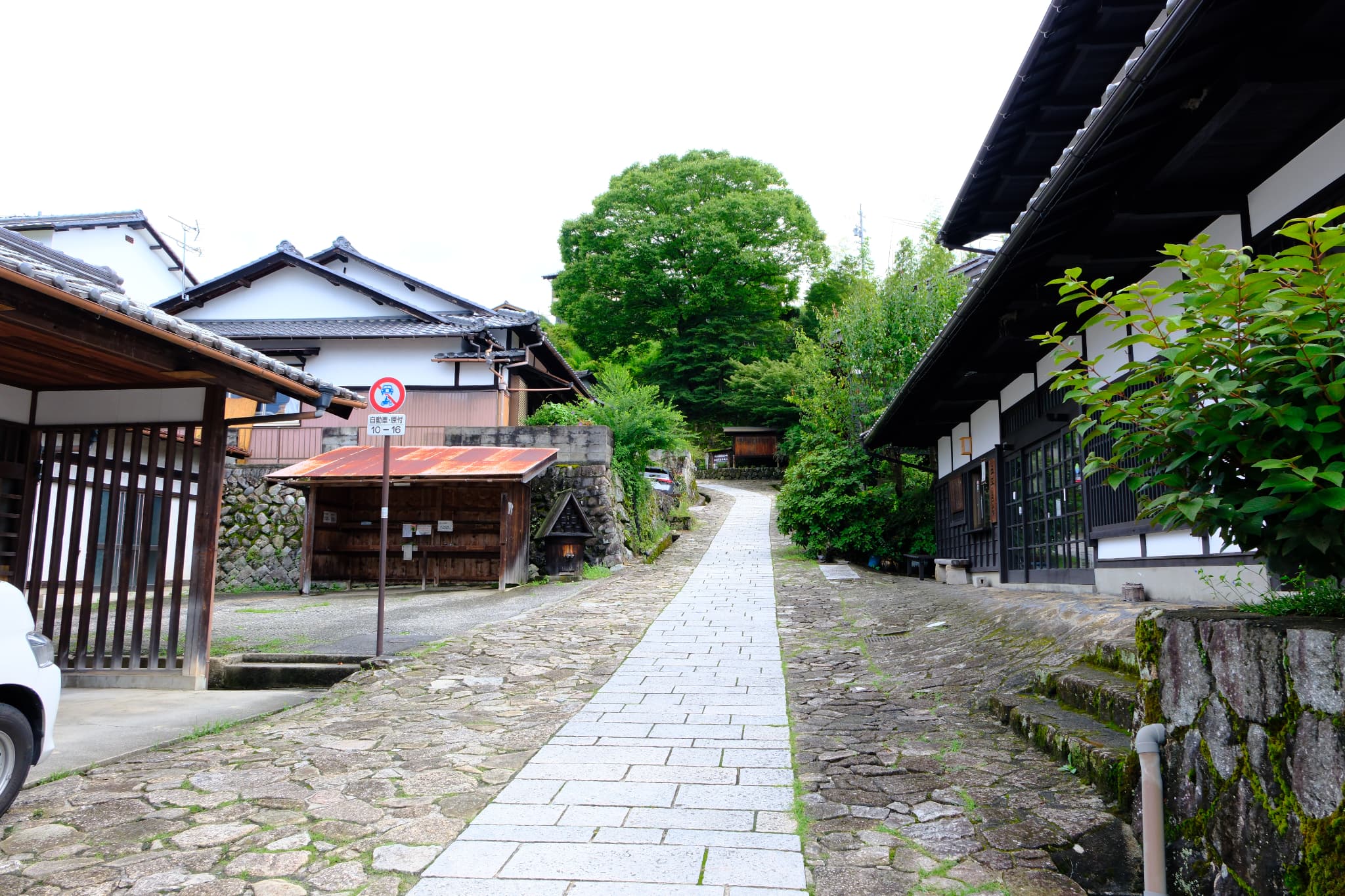
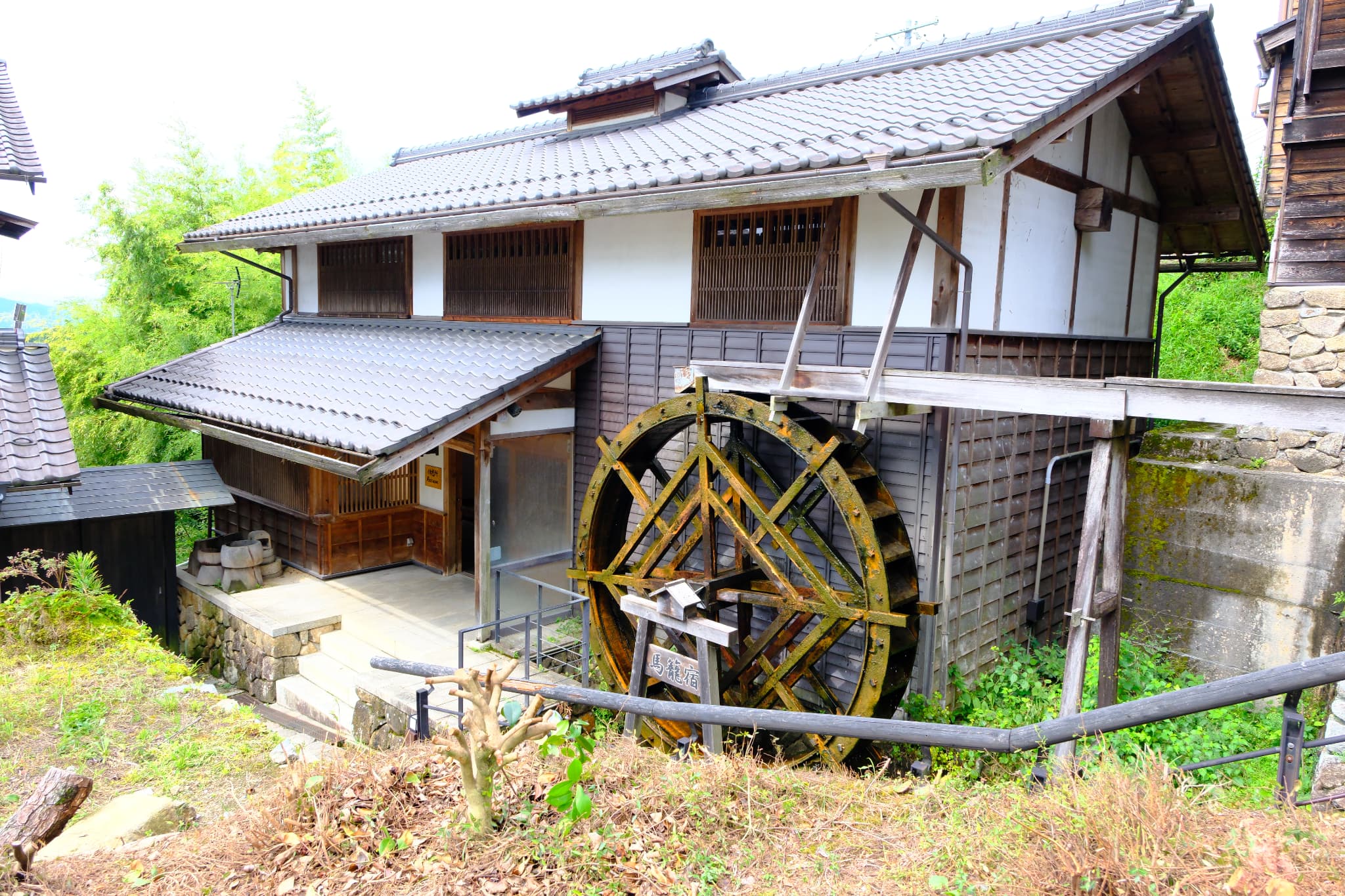
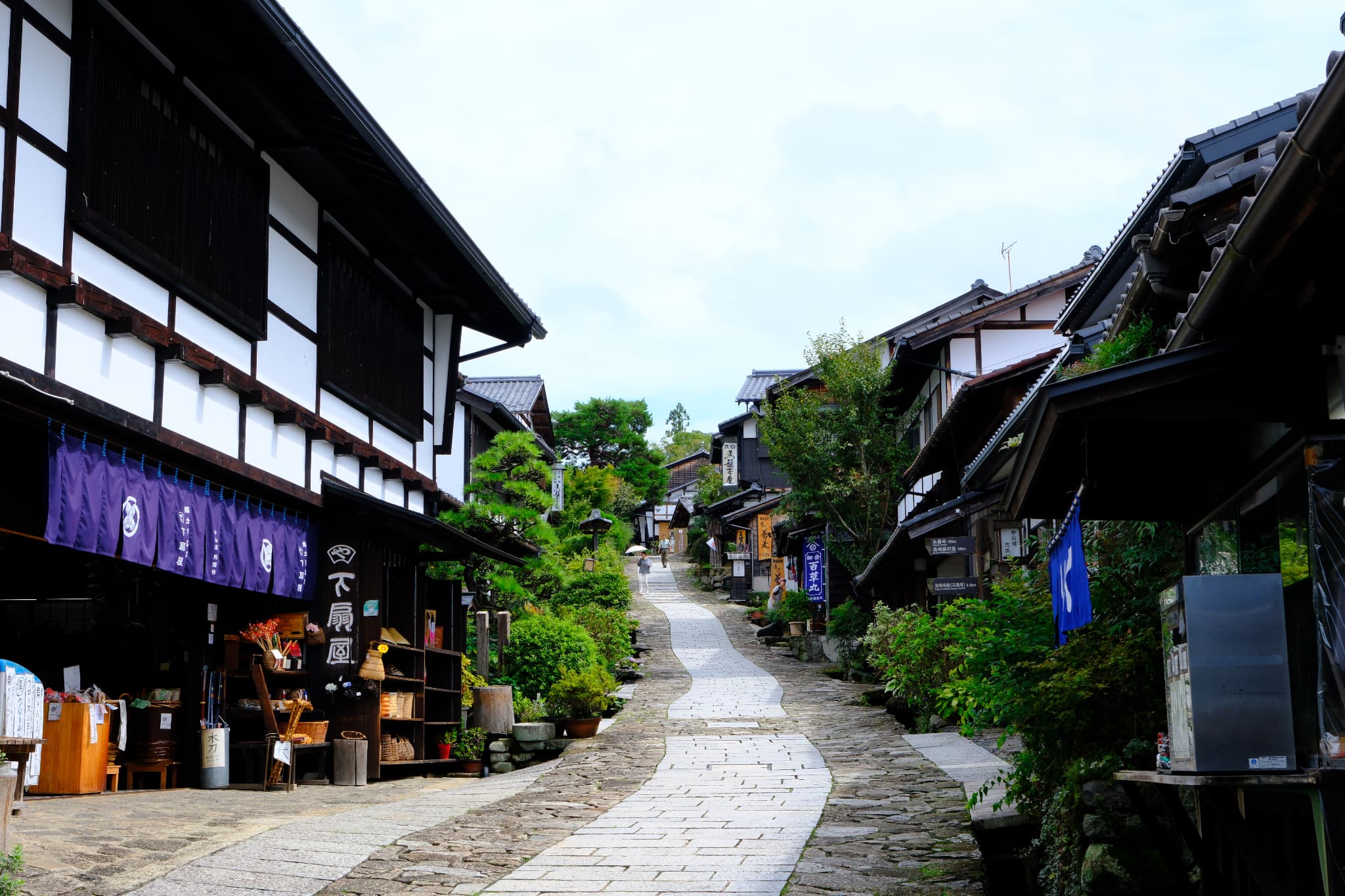
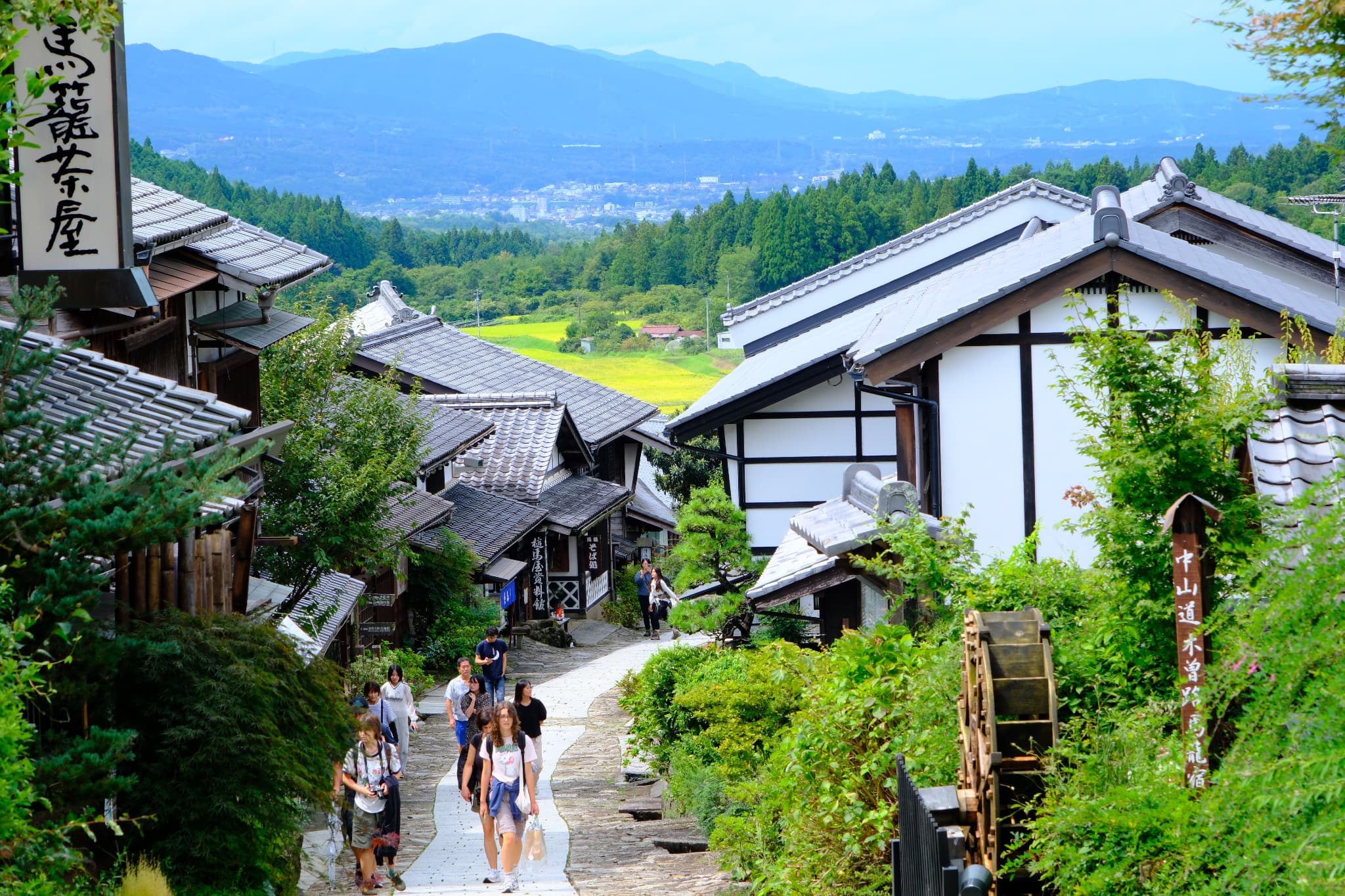
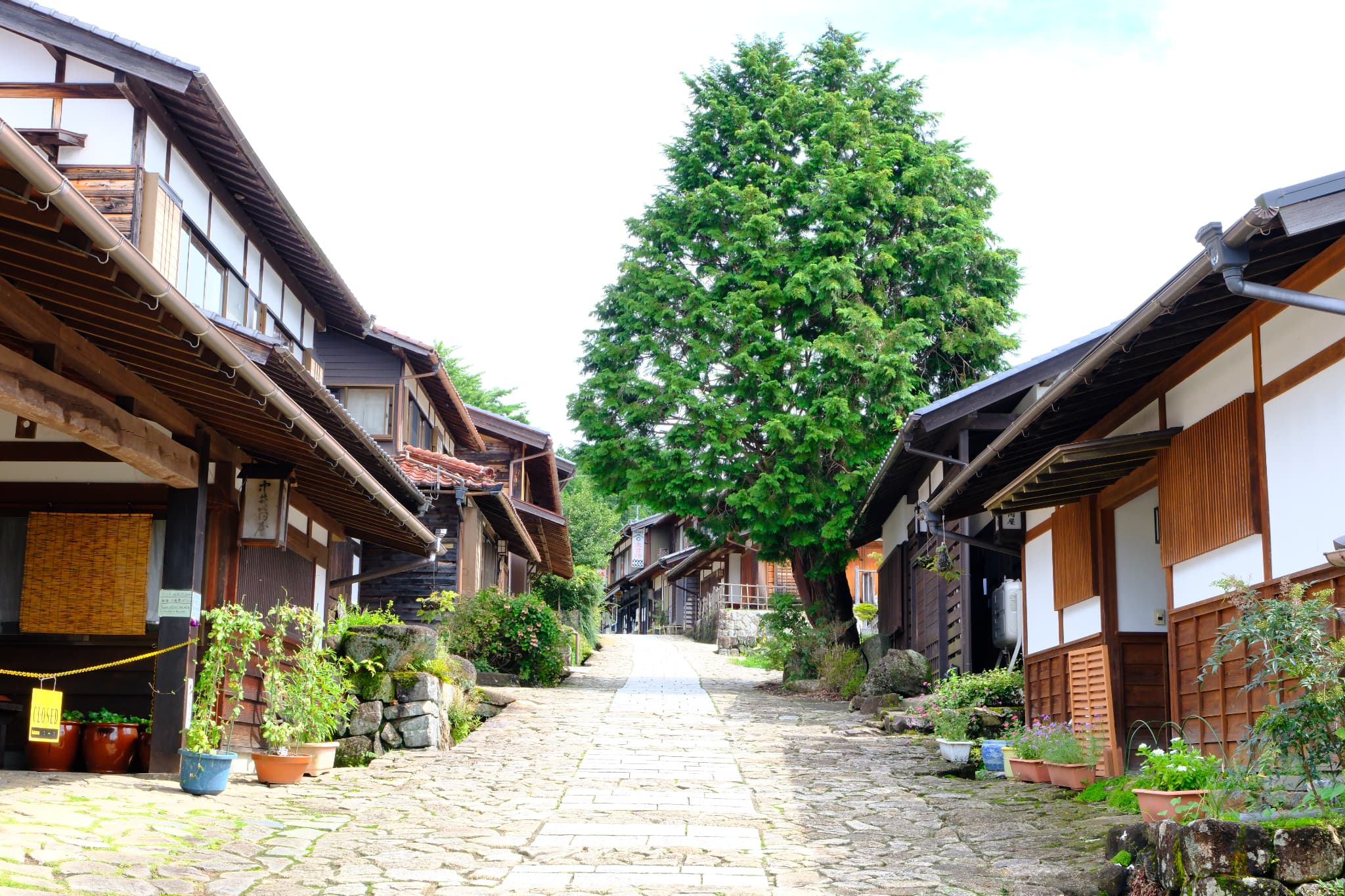
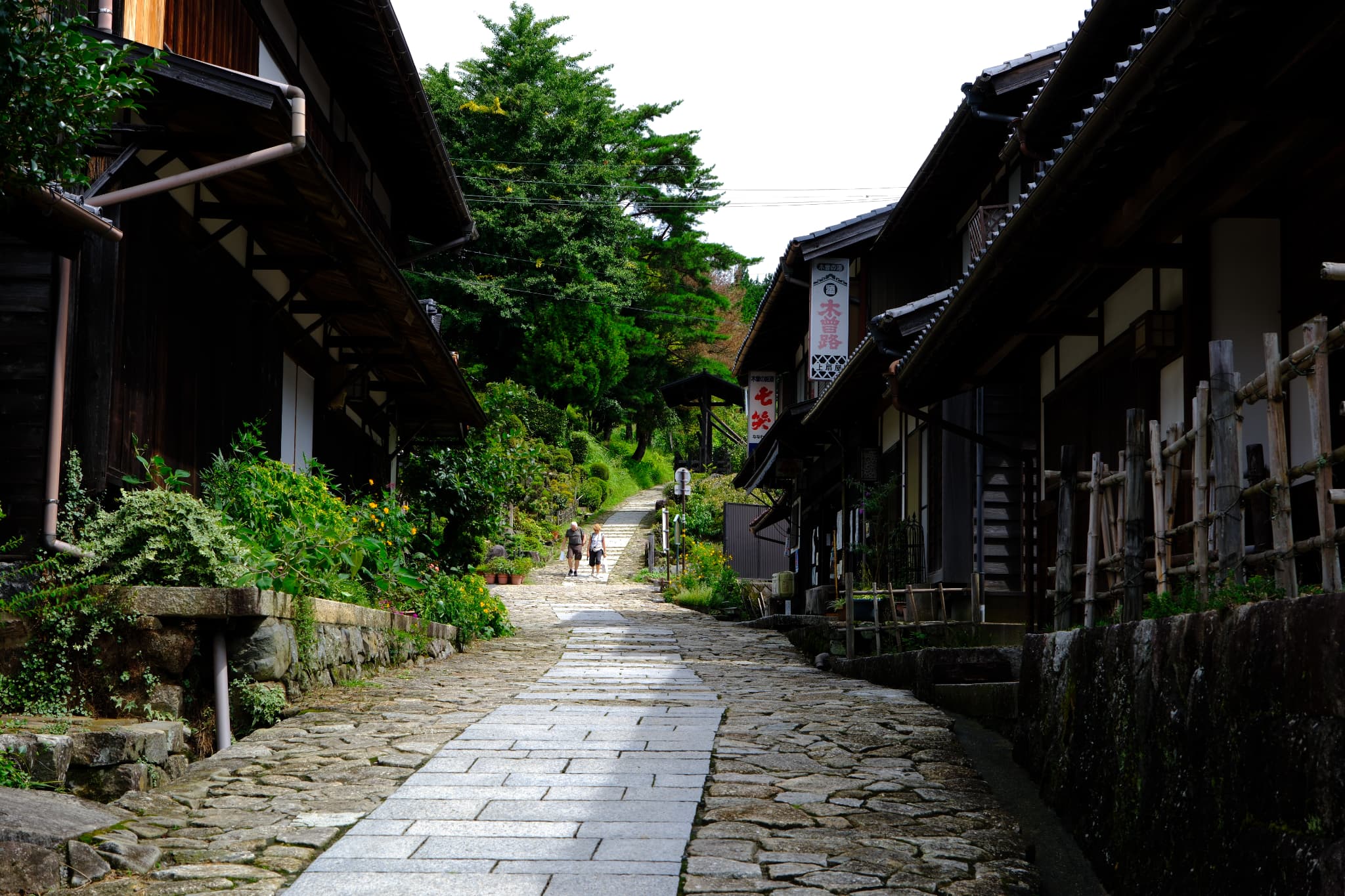
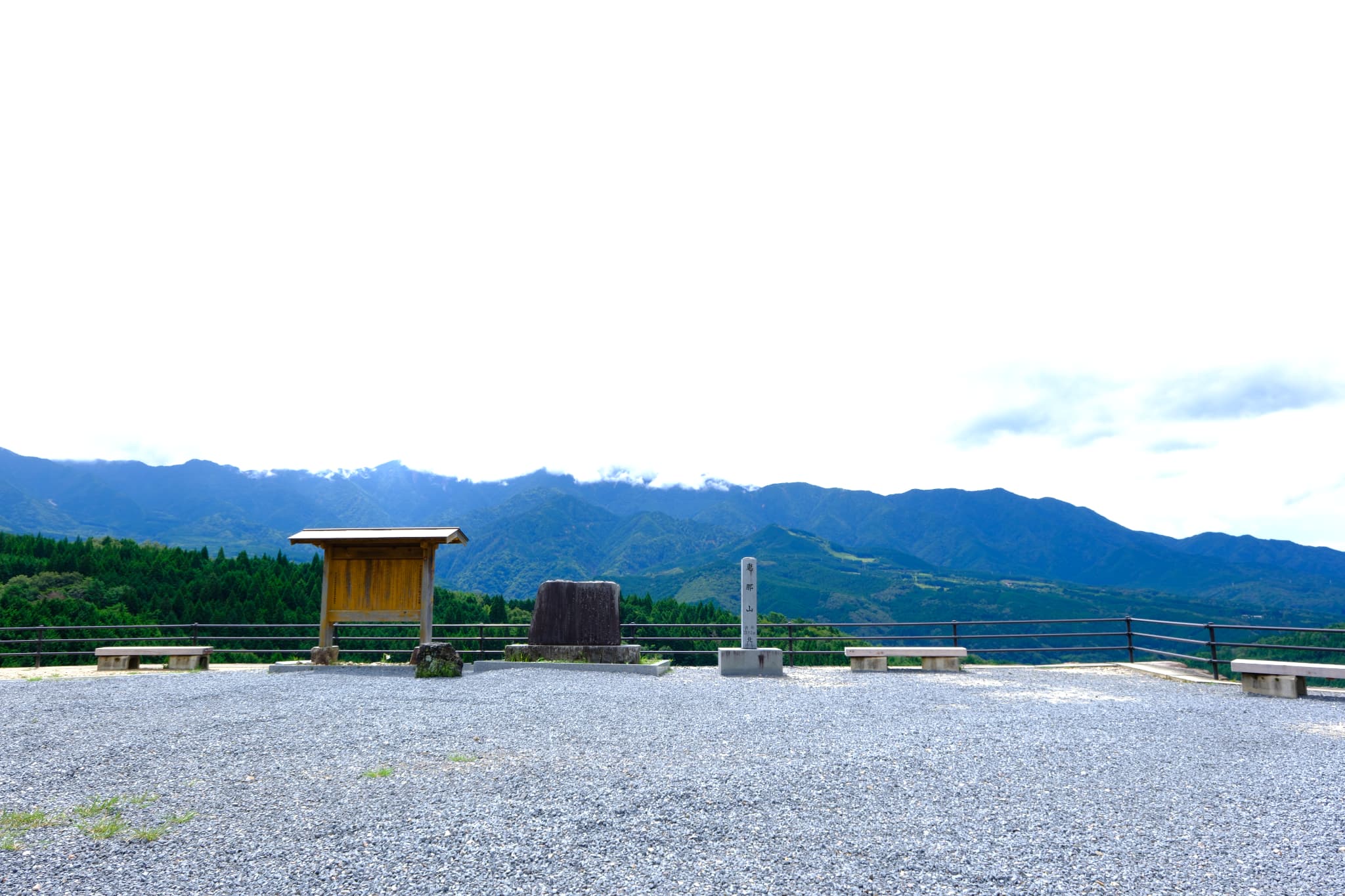
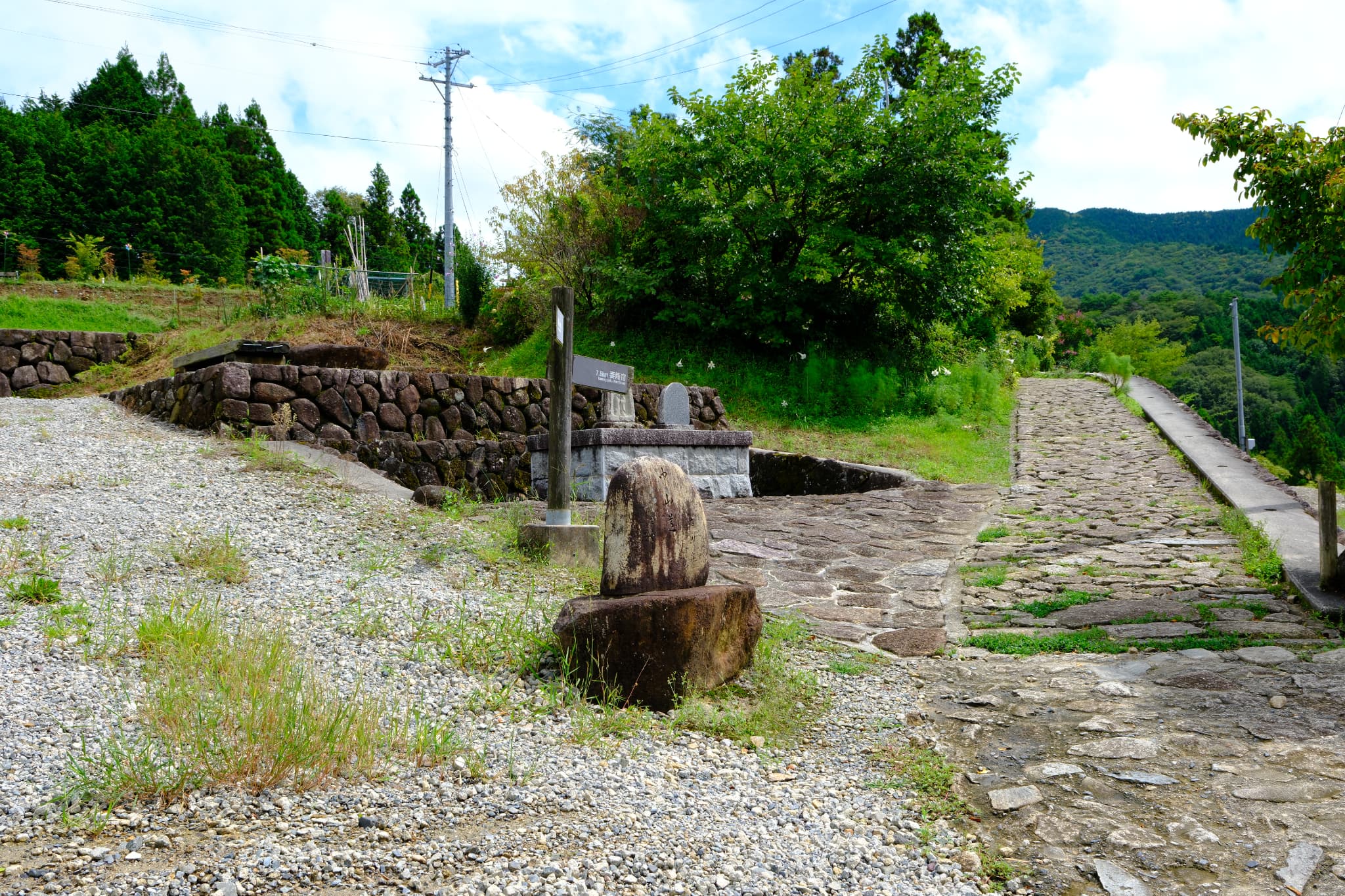
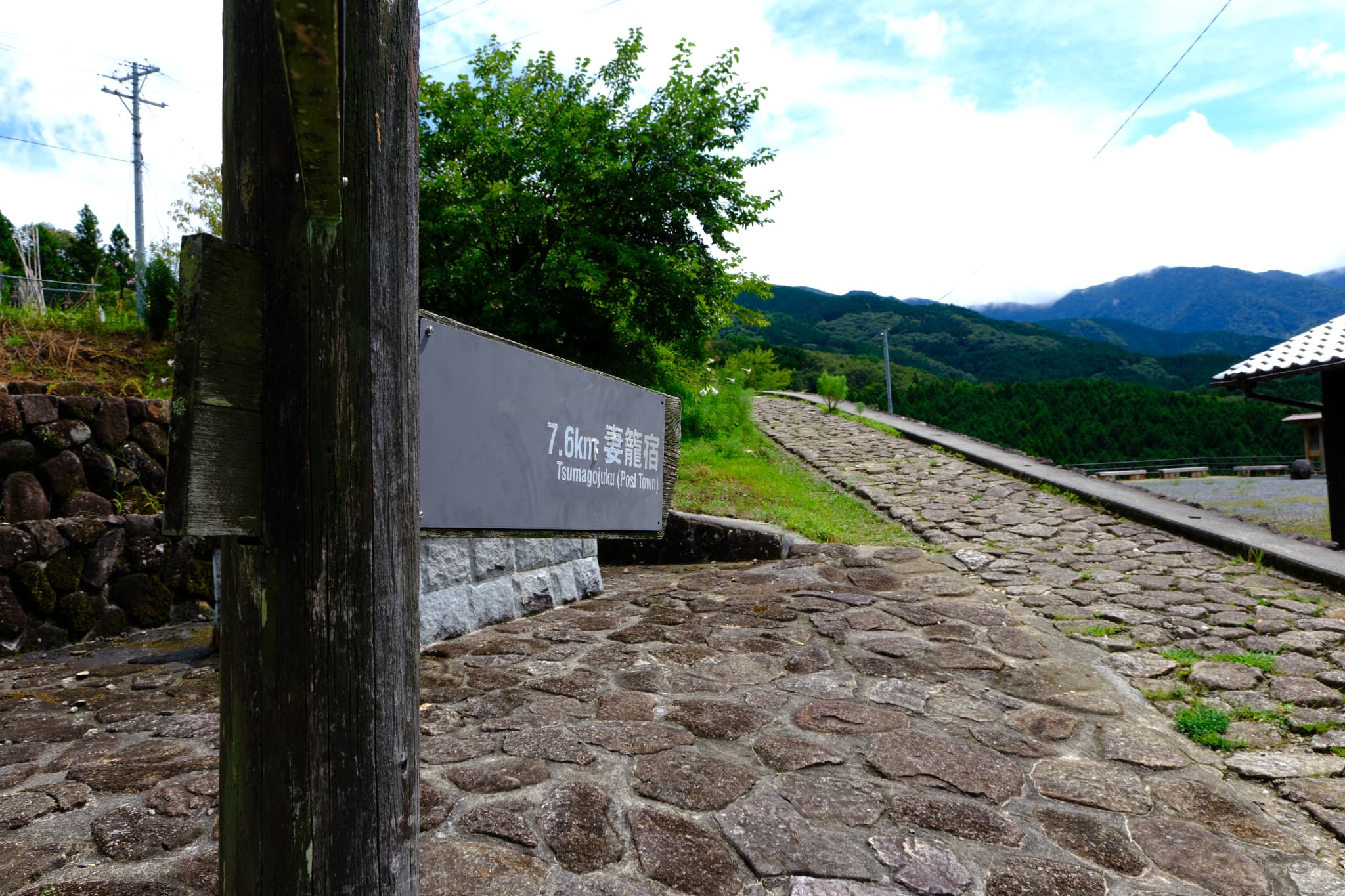
Places you can visit with a bit of extra travel
“When visiting Kisoji, why not take a bit of extra time to explore other nearby areas? The charm of the countryside is in its blend of nature and urban life. While it’s not filled with towering buildings and a multitude of restaurants like Tokyo or Osaka, there are still station buildings, dining options, and local specialties to enjoy and purchase. That’s part of the fun of exploring the countryside!”
Matsumoto Station
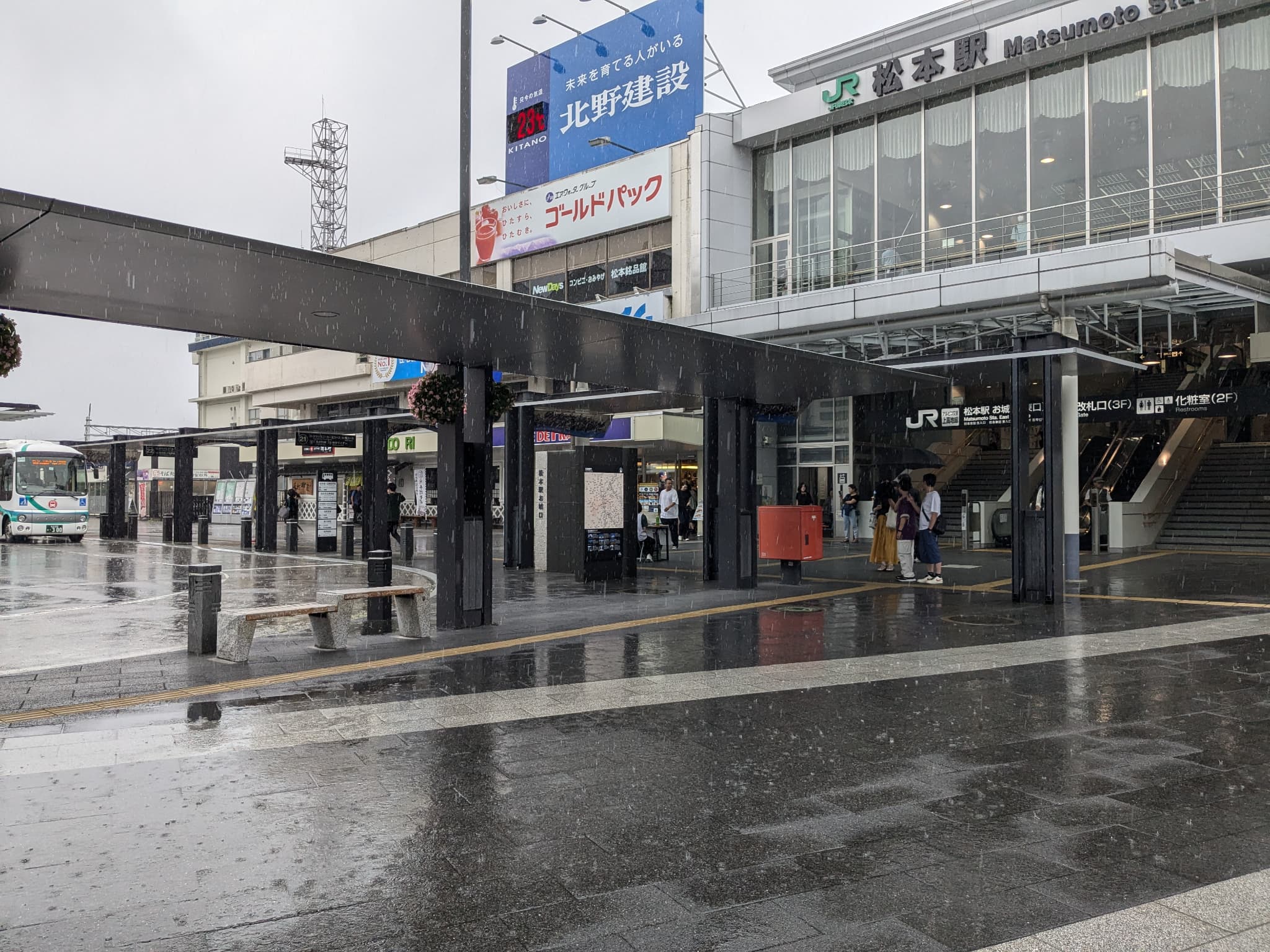
“From Kiso-Fukushima Station, where Fukushima-juku is located, it takes about 40 minutes by express train and approximately 1 hour and 20 minutes by local train. The area has many station buildings and dining options. In Nagano Prefecture, Matsumoto Station often ranks first or second in the ‘Most Desired Places to Live’ rankings. After enjoying the countryside, why not experience a bit of urban life?”
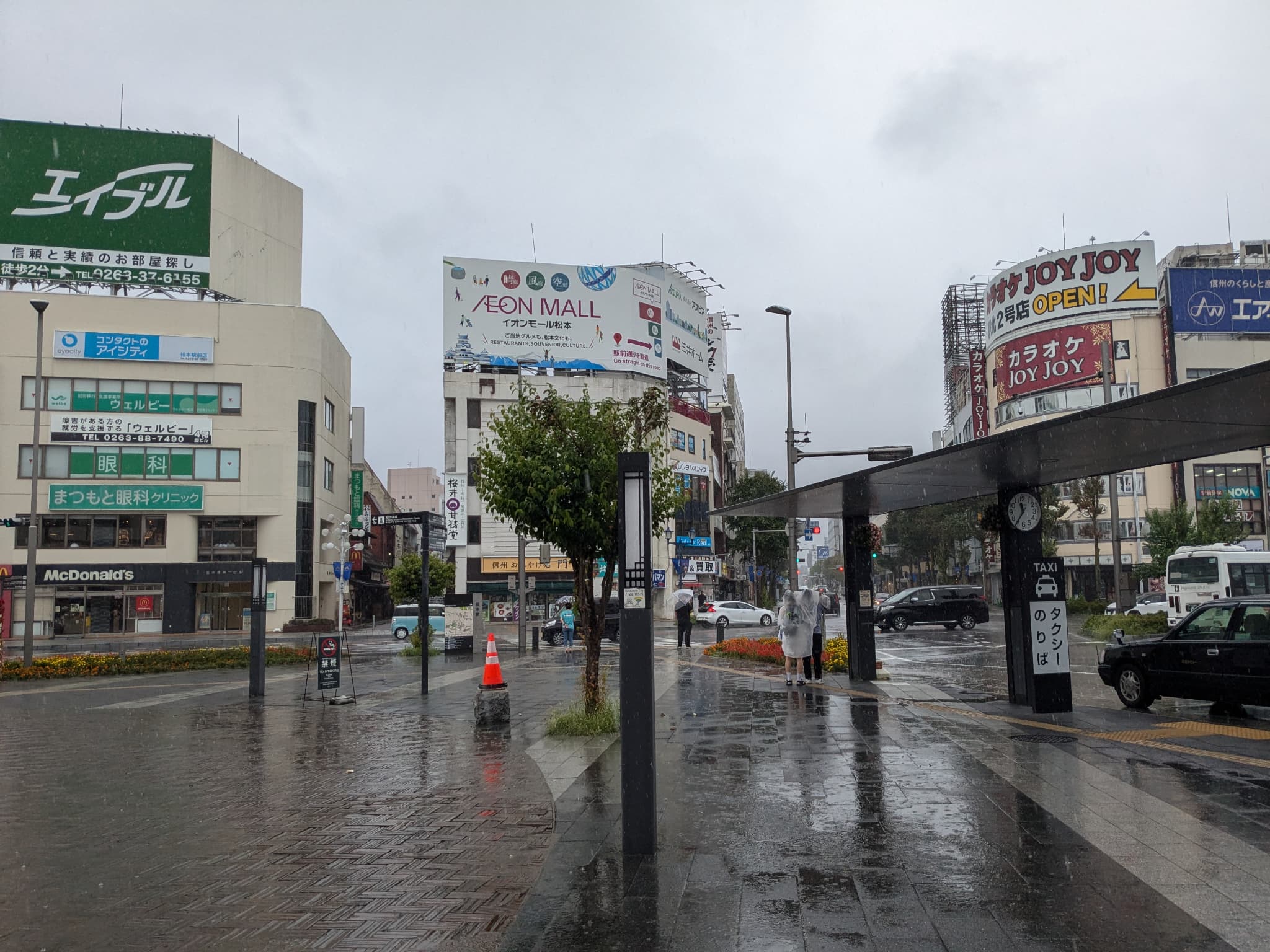
Matsumoto Castle
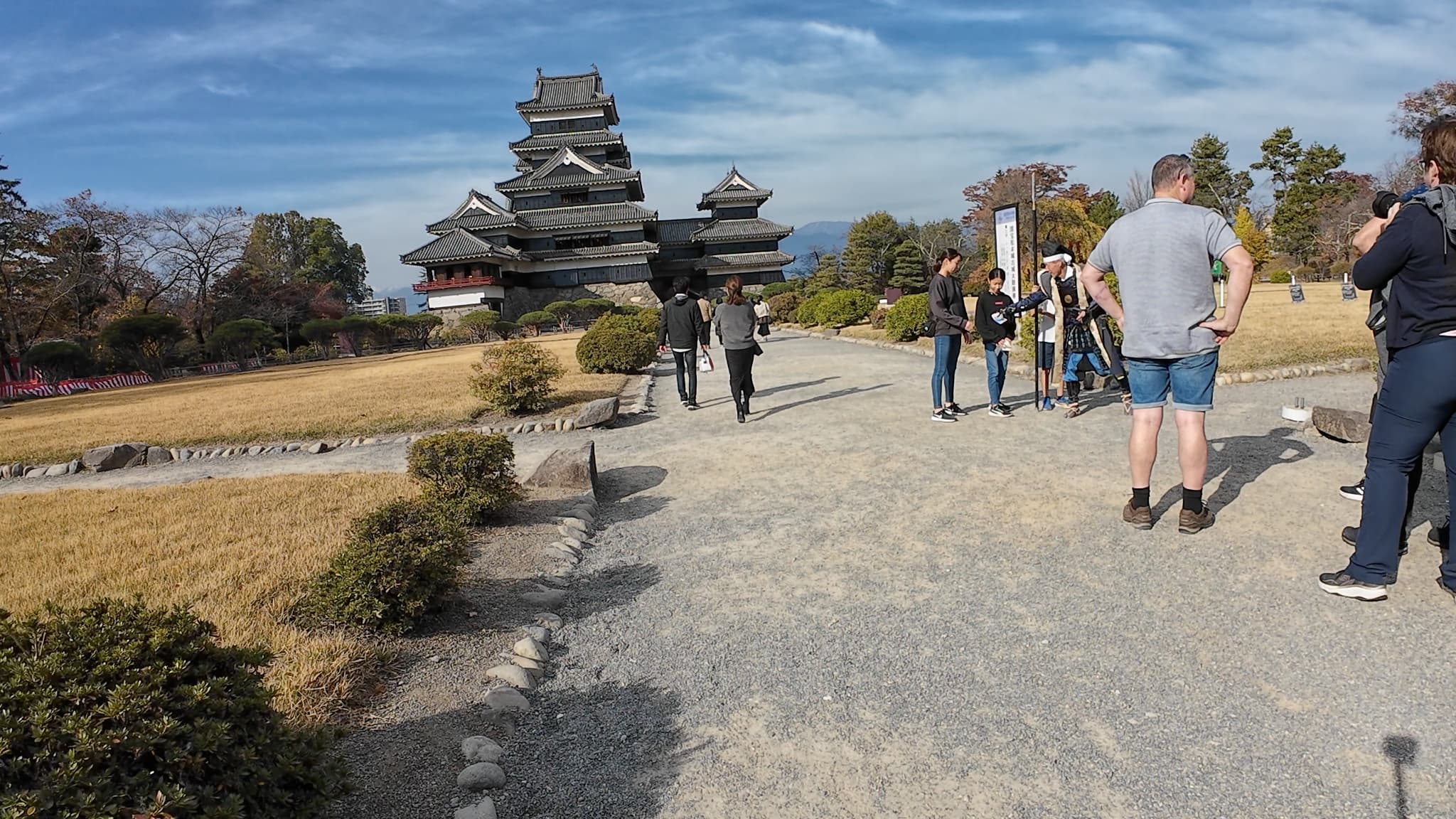
If you visit Matsumoto Station, I highly recommend checking out Matsumoto Castle as well. While Himeji Castle is famous as a World Heritage Site, Matsumoto Castle is equally magnificent and impressive. It is designated as a national treasure of Japan.
https://www.matsumoto-castle.jp/
Among the 12 existing castles with the unique “tenshukaku” (keep) structure, Matsumoto Castle is one of them.
If you plan to visit on weekends or holidays, it’s a good idea to arrive around opening time (8:30 AM) or even a bit earlier. Sometimes you might have to wait for over an hour.
Inside Matsumoto Castle, it can be quite difficult to take your time as it is very popular. Visitors are often required to follow a route and move quickly, making it challenging to stop and fully appreciate the castle.
Have you ever visited the Colosseum in Italy? If you have, you might recall that it allows for a leisurely exploration where you can take photos and enjoy the world heritage site at your own pace. However, at Matsumoto Castle, this kind of leisurely visit may not be possible due to the crowds. Despite this, seeing such a beautifully preserved castle is truly exhilarating. If you’re heading to Matsumoto Station, I highly recommend making a stop at Matsumoto Castle.
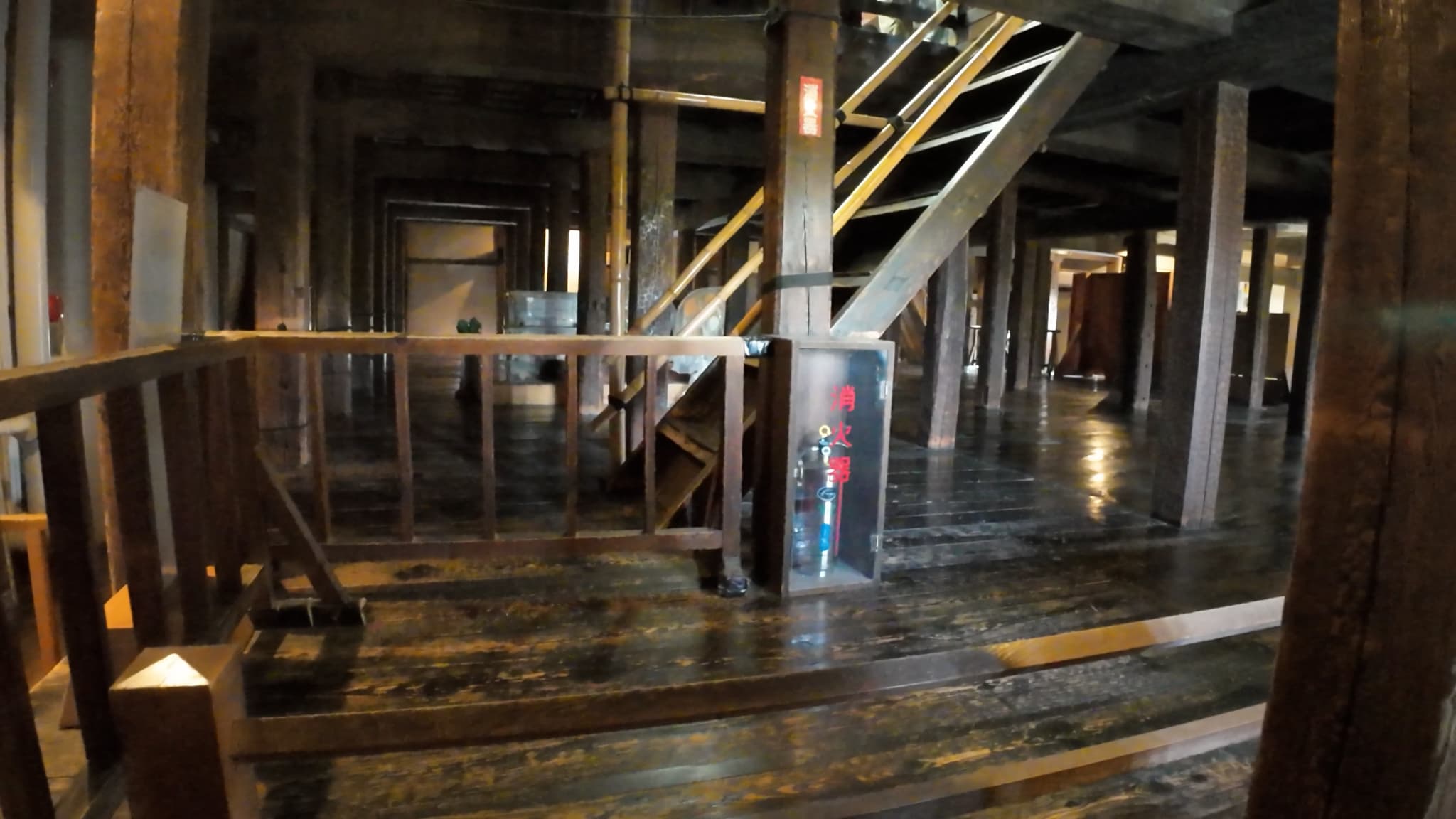
Inashi Station
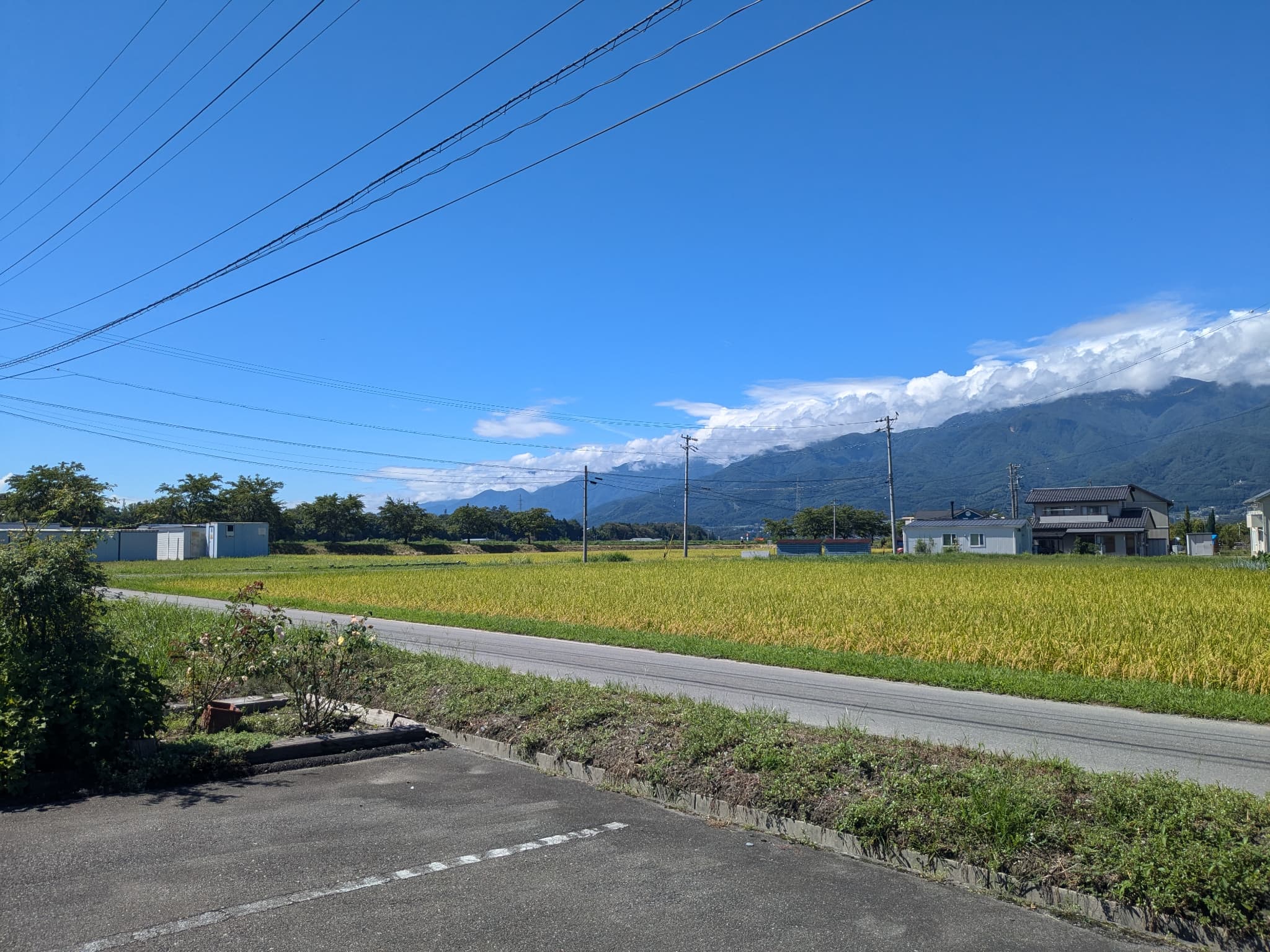
If you can travel by car, it’s highly recommended. By train, even if you take the limited express from Kiso-Fukushima Station, it will take about two hours. By car, it’s about 45 minutes.
While Kisoji has a “village” image, Ina City has a “town” feel. Here, you can find an incredibly delicious set meal restaurant. The natural scenery, featuring the Tenryu River and the Alps, is fantastic. Despite being a town, you can enjoy great shopping and amazing views.
The name of the restaurant is “Takeda.” It’s run by a butcher shop, so the quality of the meat is quite high. The recommended dish is “Sauce Katsu Don.” While you can get Sauce Katsu Don in Tokyo, it originally comes from Nagano as a B-class gourmet dish.
- Takeda (23-minute walk from Ina City Station – Google Maps)
https://www.tonkatu-takeda.com/
*There is also free parking available.
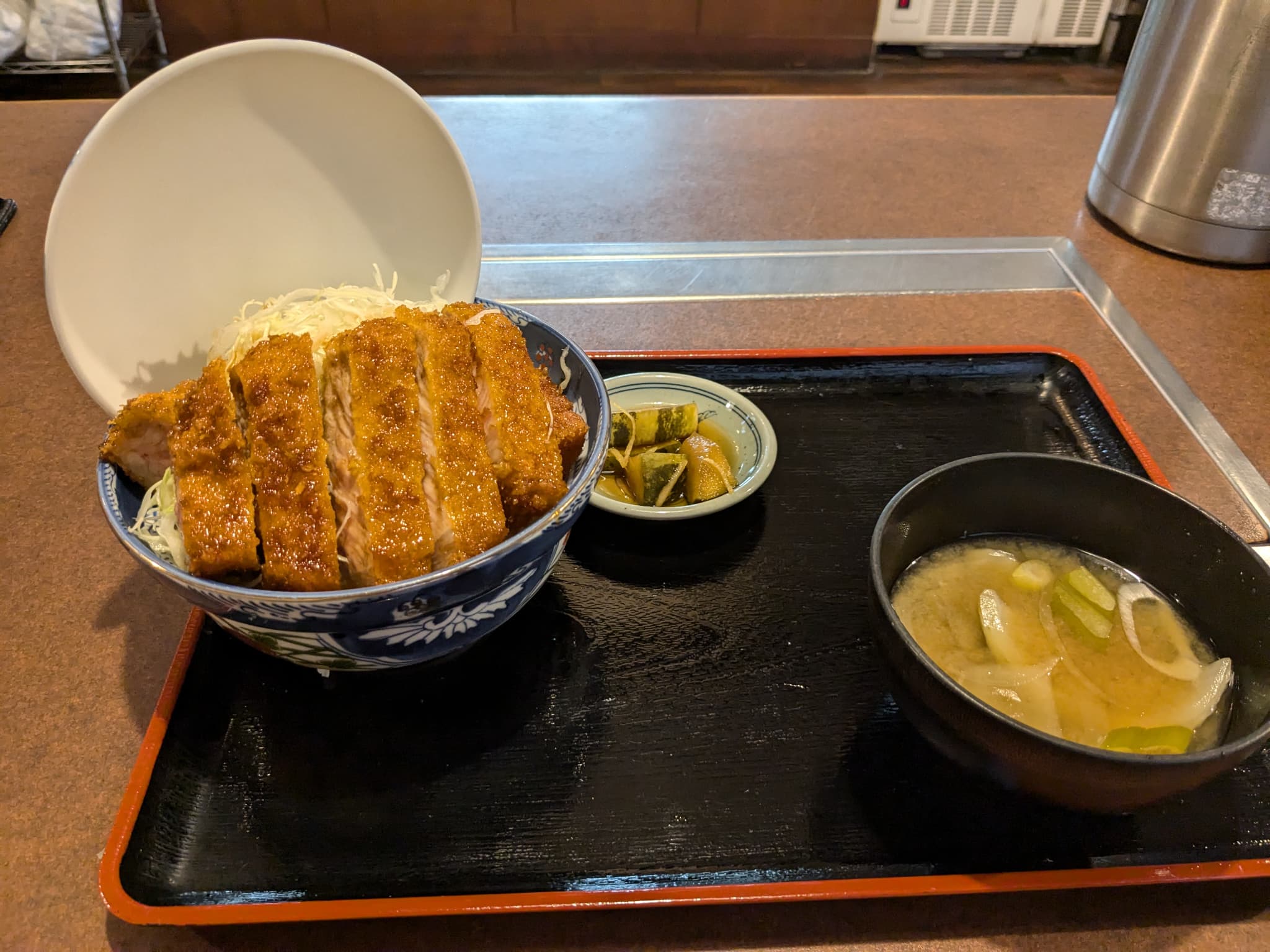
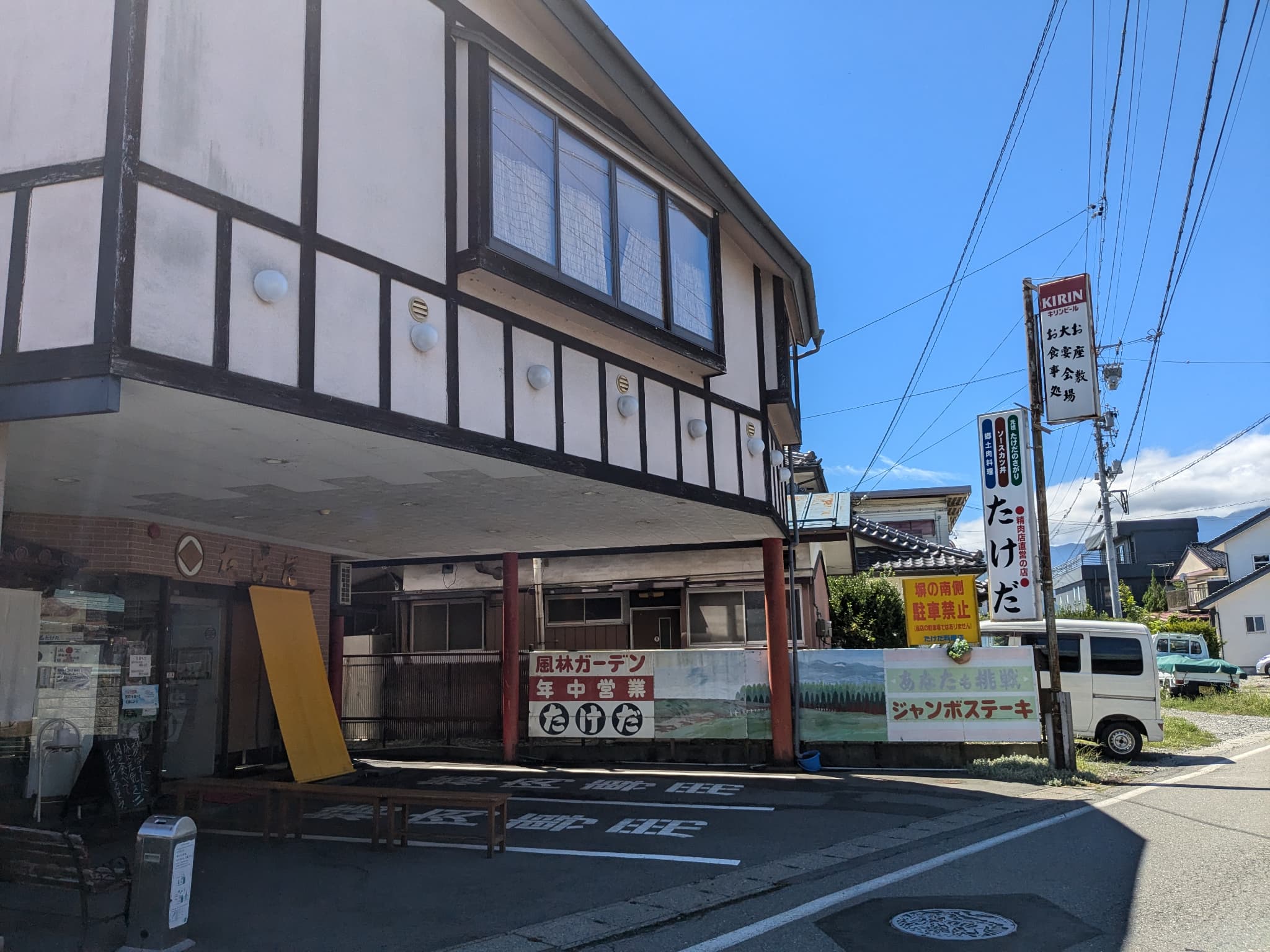
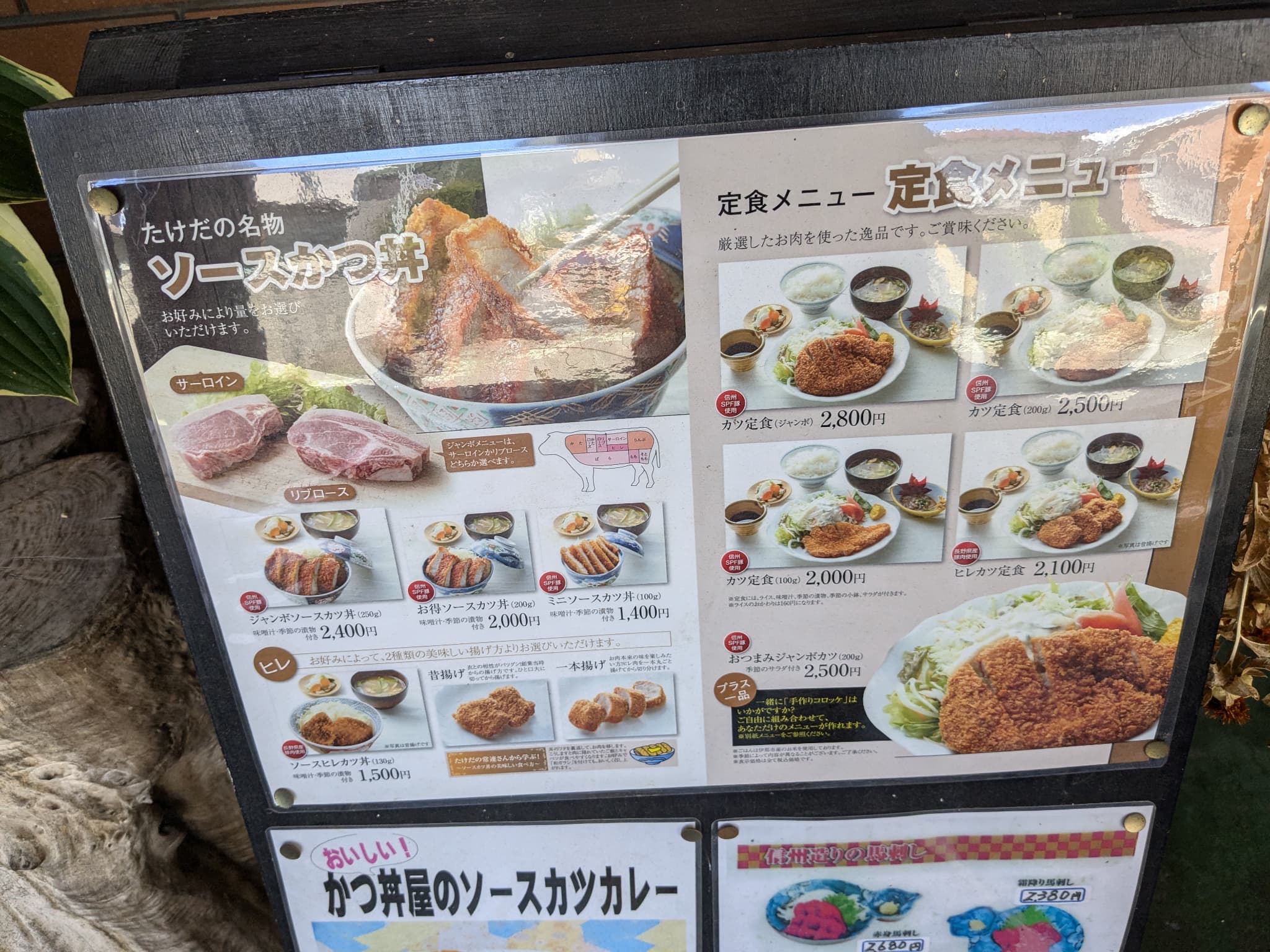
Introduction to the shops visited during the stroll
[Kiso Fukushima Station Area]
- Ryū no Hige (13 minutes walk from Kiso Fukushima Station – Google Maps)
https://dragonsbeard333.com/
This restaurant stays open until around 10 PM, which is later than many other places in the area. You can enjoy small dishes and set meals with many original menu items. The food is delicious and priced affordably, reflecting local rather than tourist pricing. The owners, a couple running the restaurant, are warm and welcoming, making for a pleasant dining experience. If you don’t speak Japanese, Google Translate will work just fine!
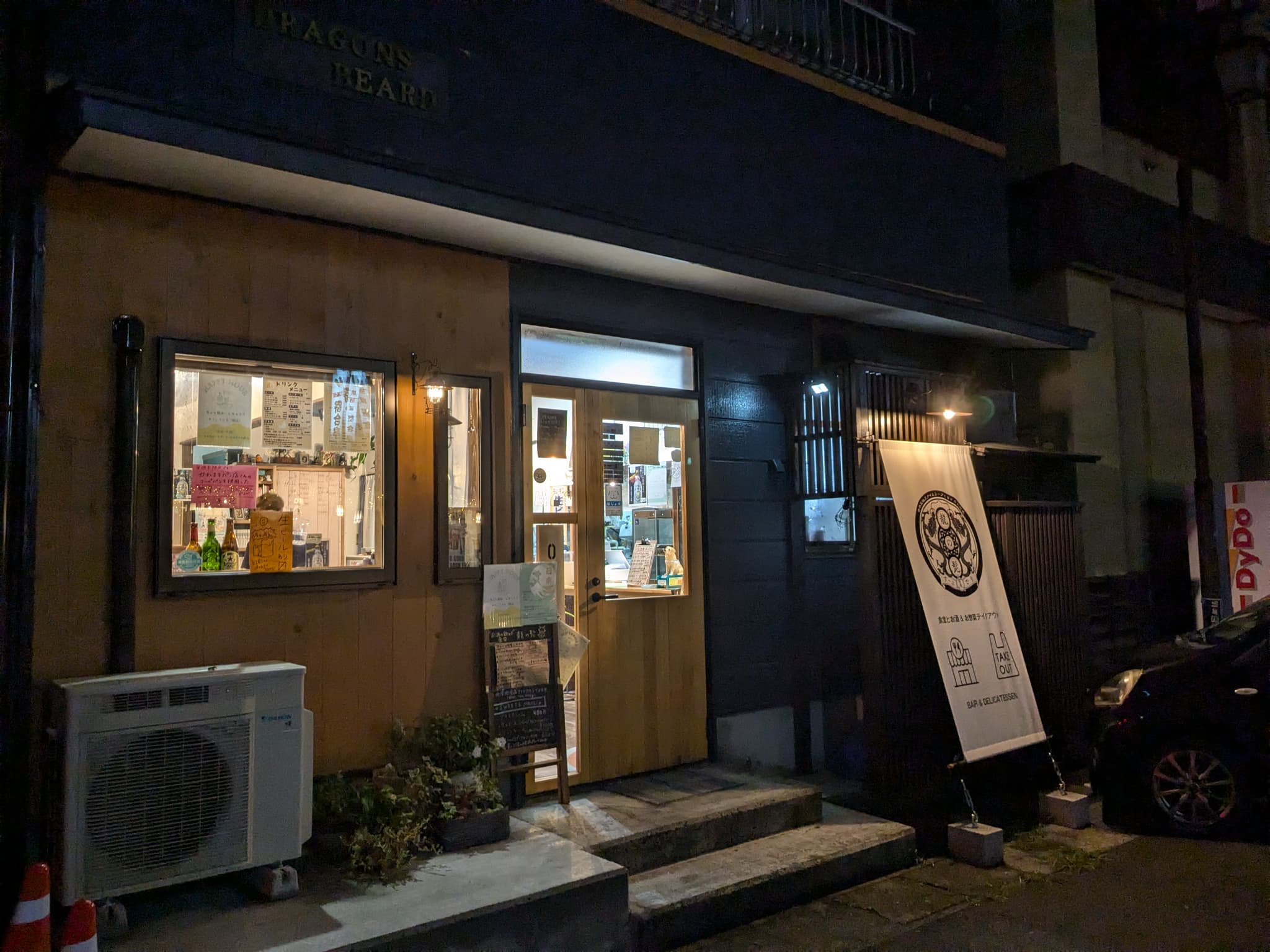
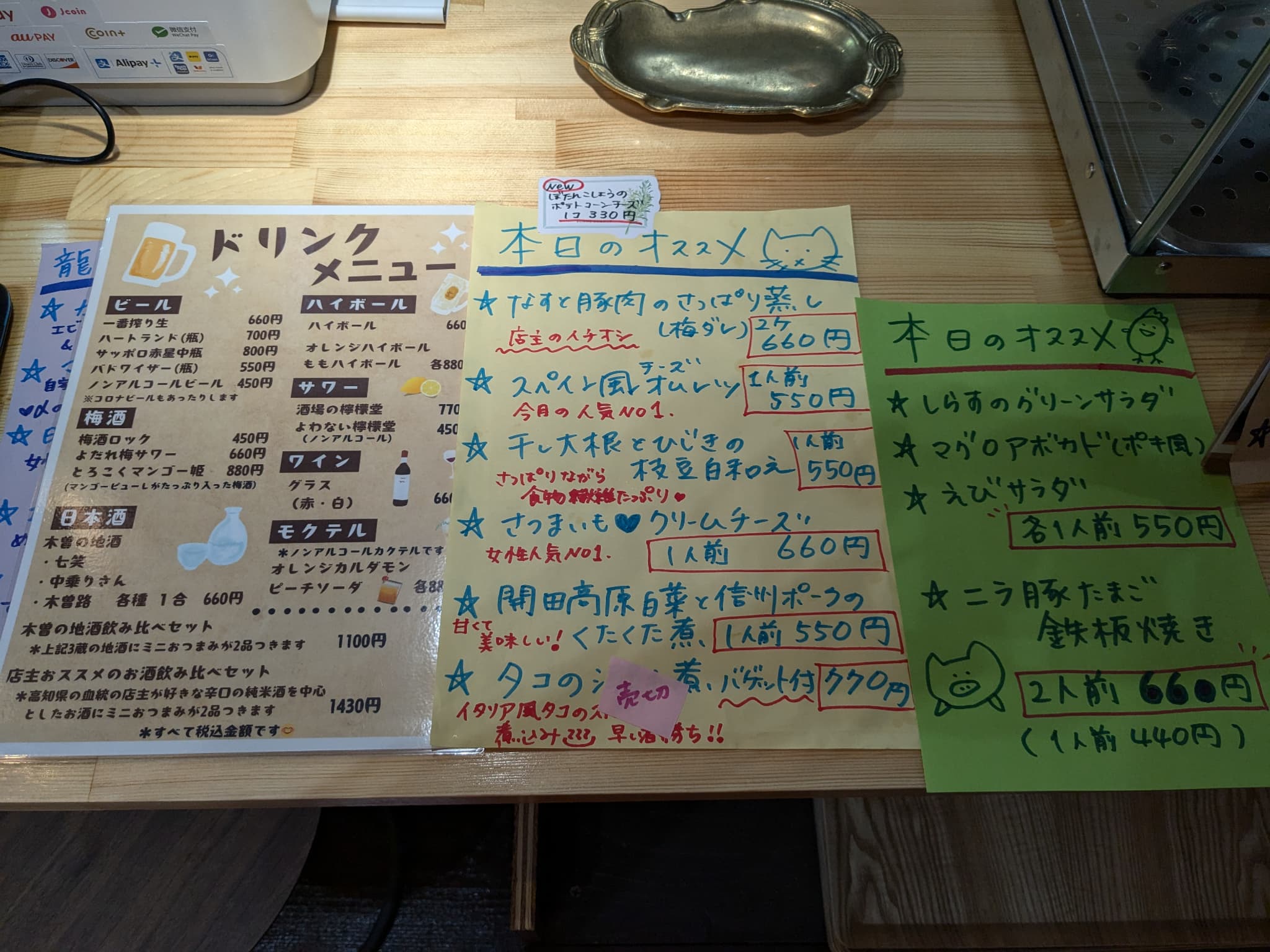
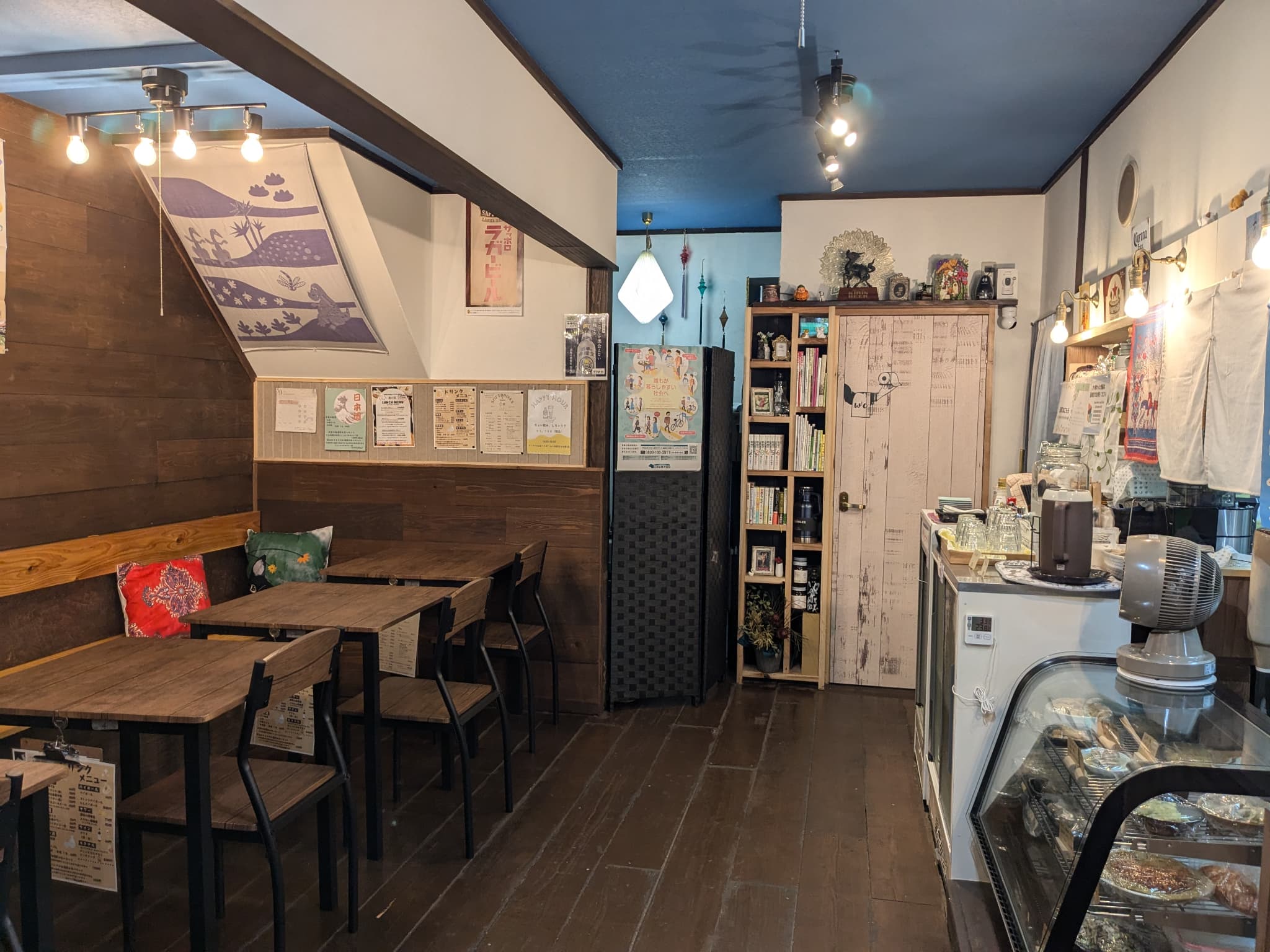
- en-shouten (10-minute walk from Kiso-Fukushima Station – Google Maps)
https://en-shouten.com/
This shop sells pottery, miscellaneous goods, and apparel. The interior has a warm, inviting atmosphere. The owner, who relocated from Tokyo, opened this shop to showcase the beauty of Japanese ceramics. The selection is impressive, making it a great choice for both personal use and souvenirs.
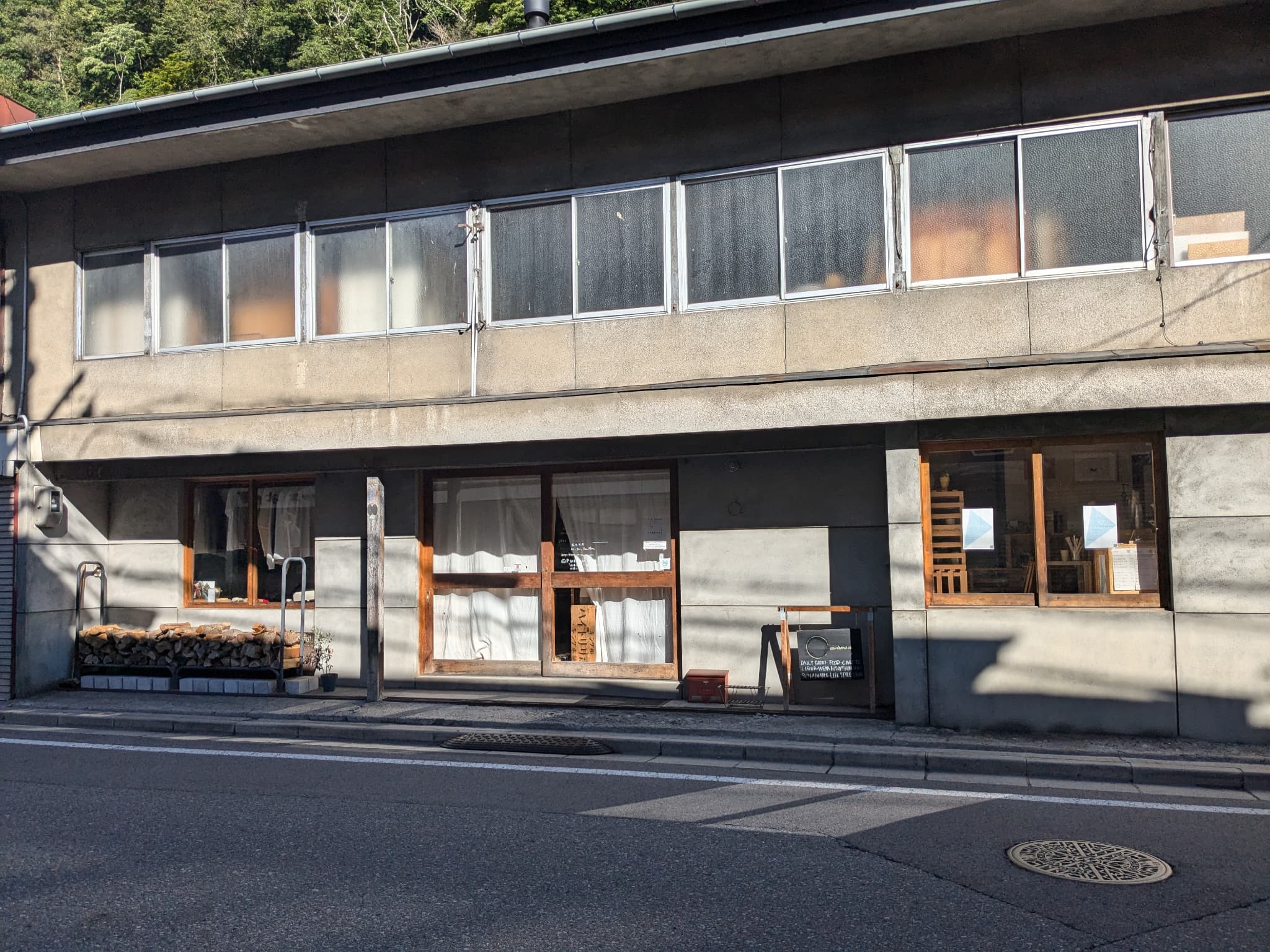
- Ebiya Lacquerware Store(10-minute walk from Kiso-Fukushima Station – Google Maps)
Website: None available
This shop sells pottery, lacquerware, small items, and chopstick rests. They offer products ranging from a few hundred yen to high-end pieces. With affordable options available, it’s easy to shop here. While it might seem a bit intimidating at first glance, there’s no need to worry— the shop staff are very friendly and welcoming.

- Koike Koji Store (9-minute walk from Kiso-Fukushima Station, Google Maps)
https://www.koji-miso.com/
This is a miso shop offering a range of miso made using special methods. Since the flavor of the miso can deteriorate if not kept refrigerated, it might be challenging to bring it back to your home country. However, if you are staying long-term in an Airbnb with a kitchen, it could be a great souvenir for personal use. The miso here has a rich flavor with a hint of cheese, making it truly exceptional. There are also souvenir products available that do not require refrigeration.
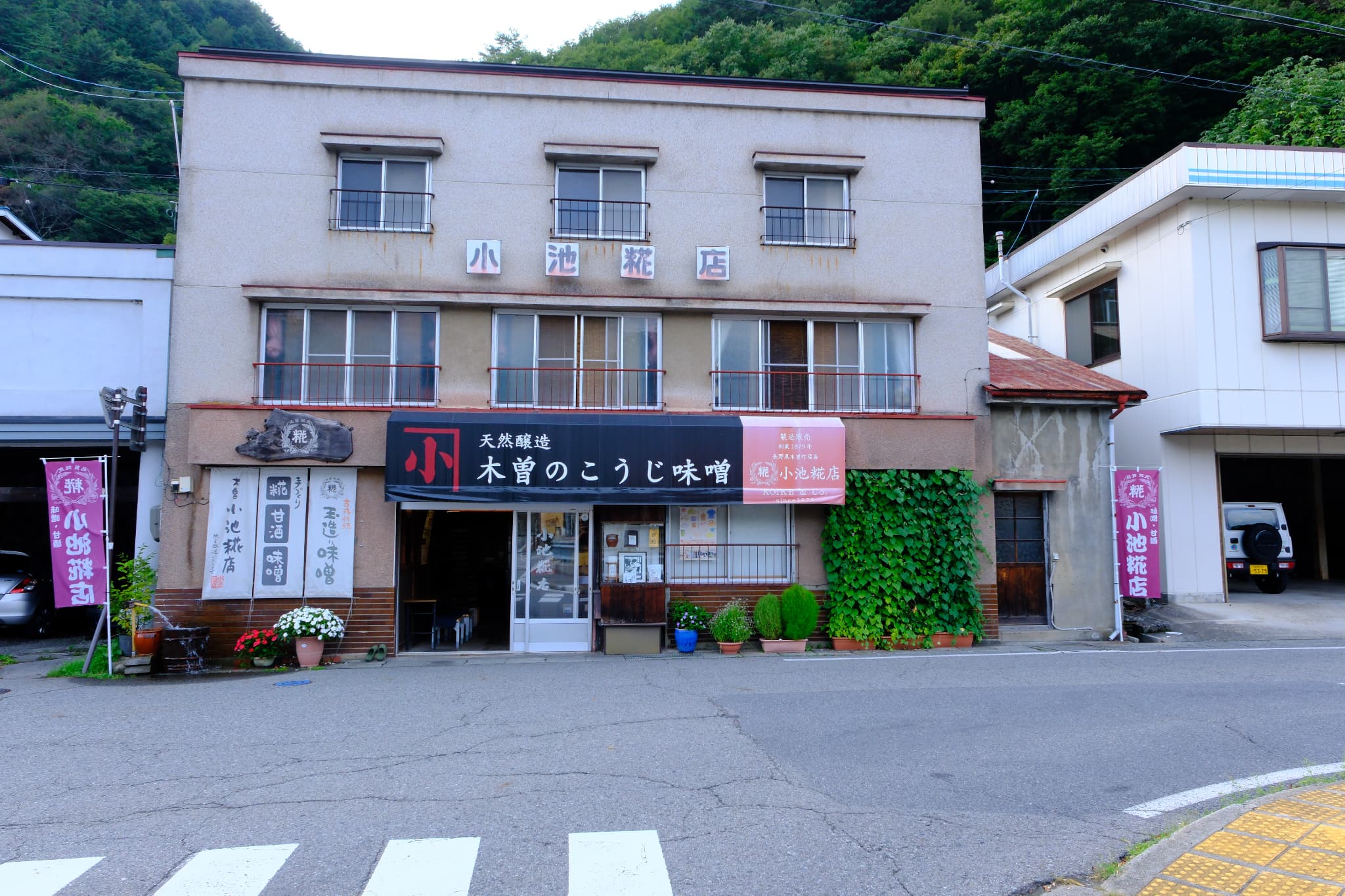
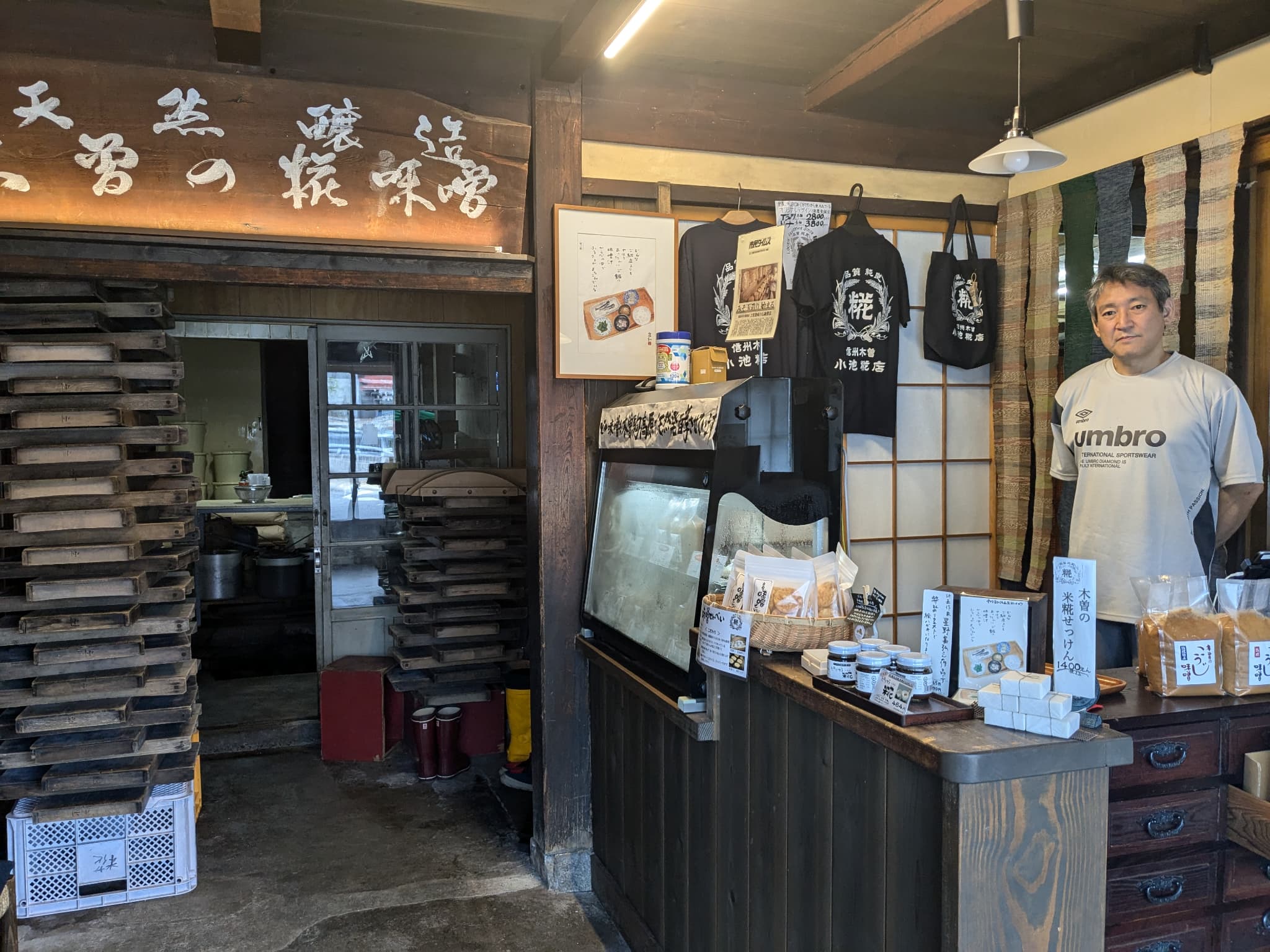
[Midono-juku, Minakiso Station Area]
- Handmade Soba Restaurant Momosuke-tei (6-minute walk from Minakiso Station, Google Maps)
Website: None available
This is a soba restaurant located on an elevated area with a terrace. The soba is delicious, and the dipping sauce is exceptional.
The menu offers only two types: “kake” (hot soba) and “zaru” (cold soba served with dipping sauce). I had the “zaru,” which came with tempura, making it a set meal. It’s likely that the “kake” also comes with tempura.
When I ordered a non-alcoholic beer, “myoga” (a type of pickled ginger) was served as a snack. The quality of the food, including the soba, is very high. If you visit Midono-juku, it’s definitely worth trying the soba here.
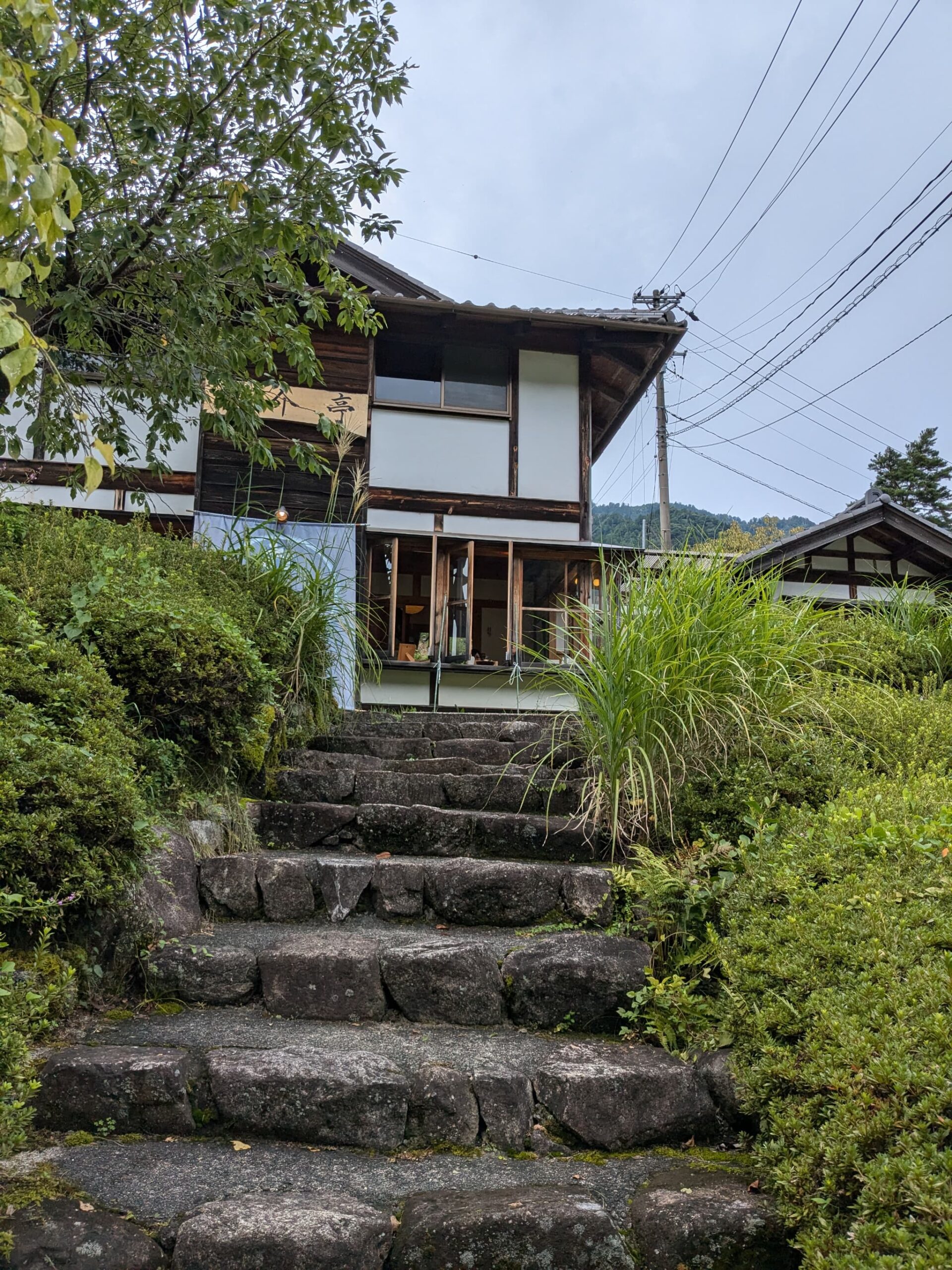

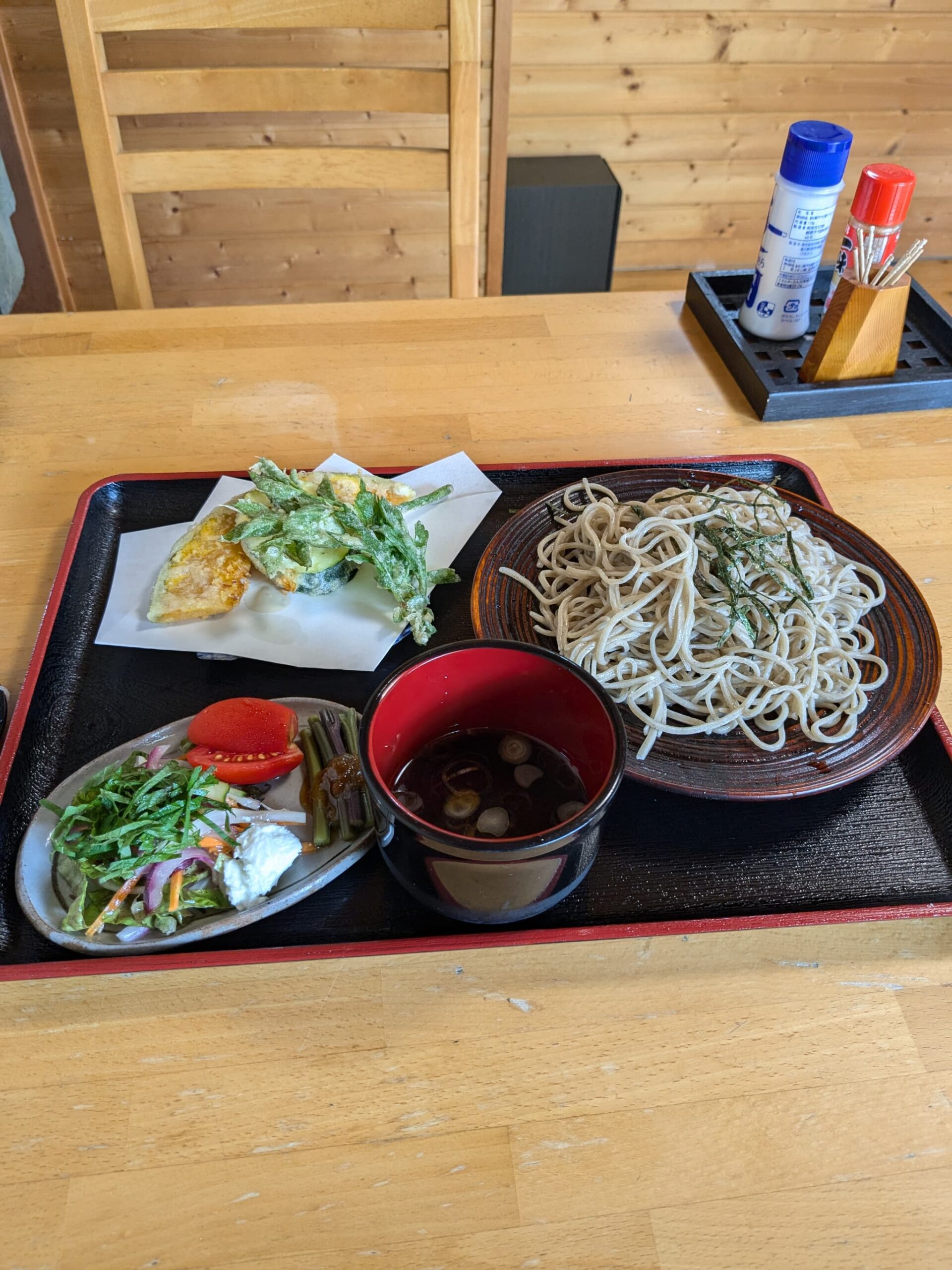
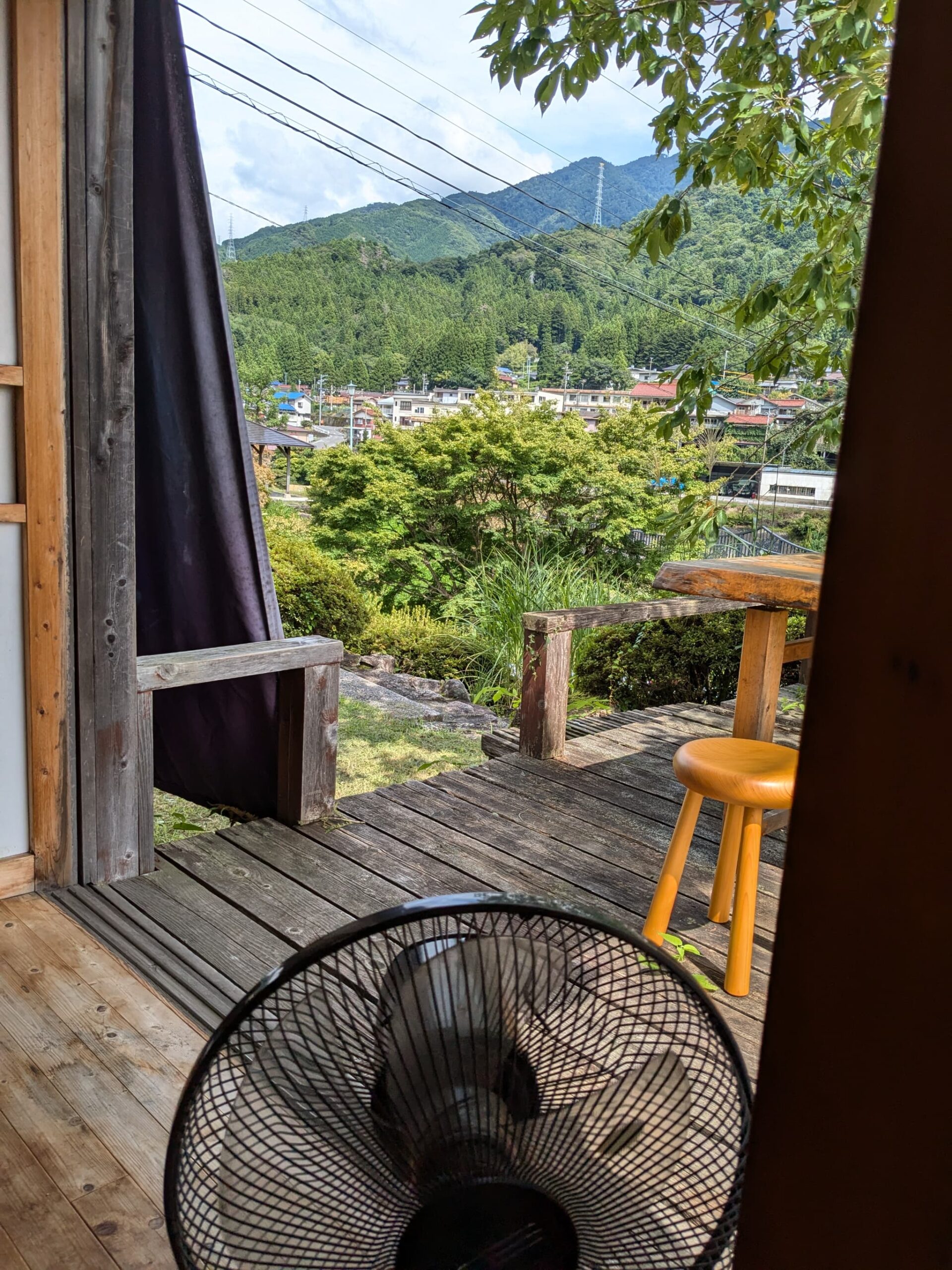
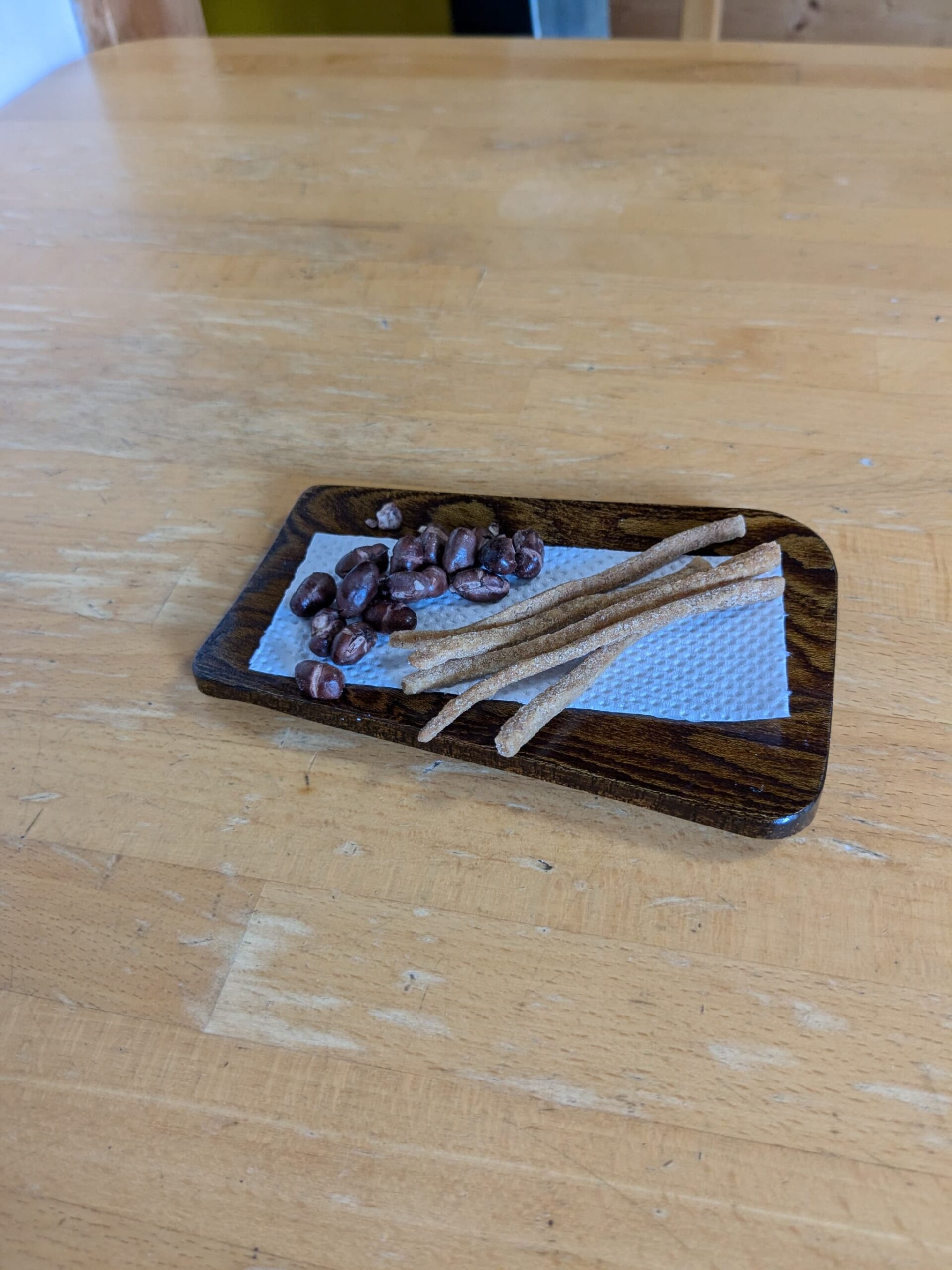
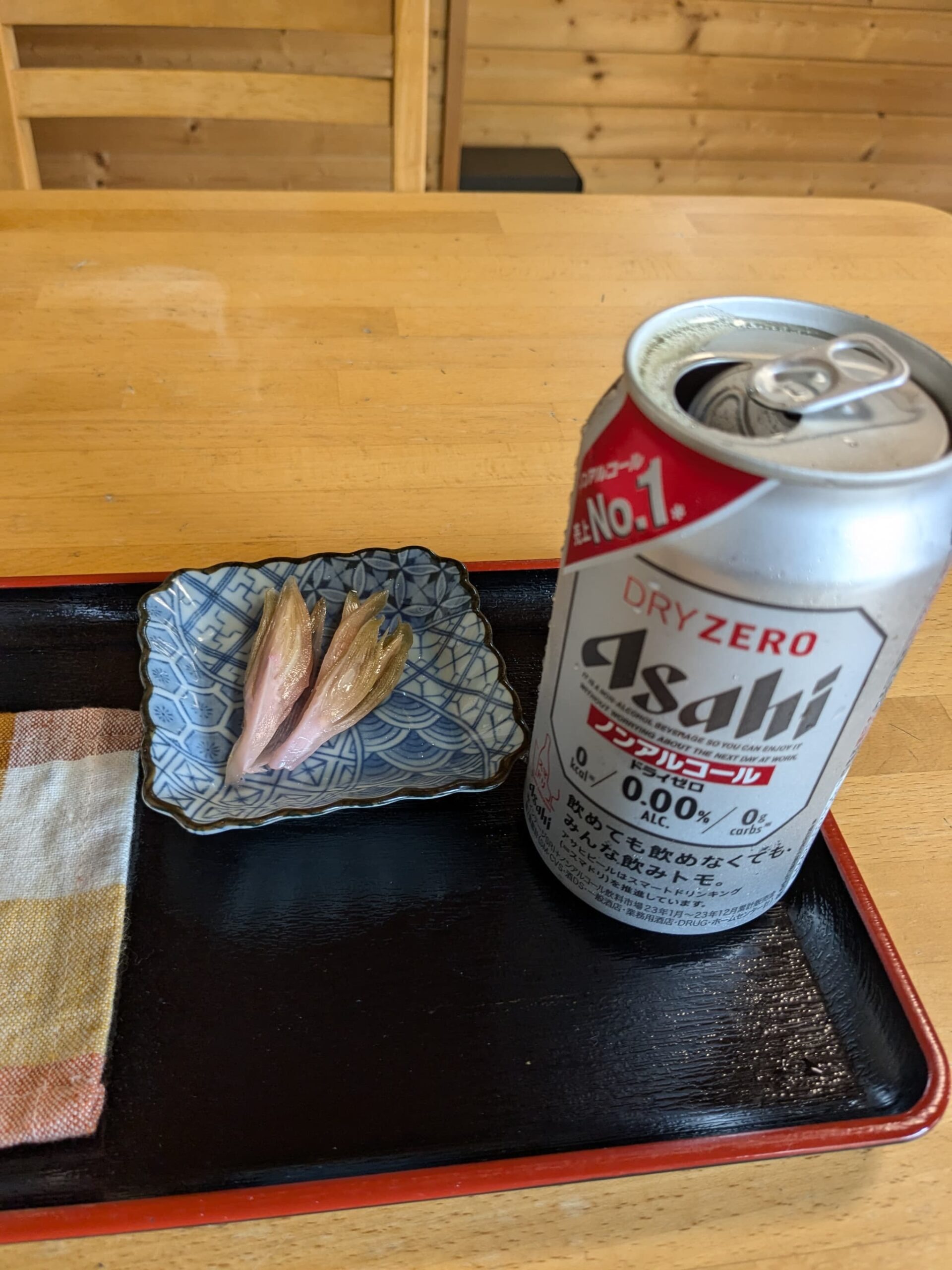
※Please note that this information is current as of September 1, 2024.

